
'dèanamh cuain mhòir de chaolas cumhang' (Making a Great Ocean of a Narrow Strait)
Ishbel Murray
2016 : Dimensions: 6 x 15 x 15cm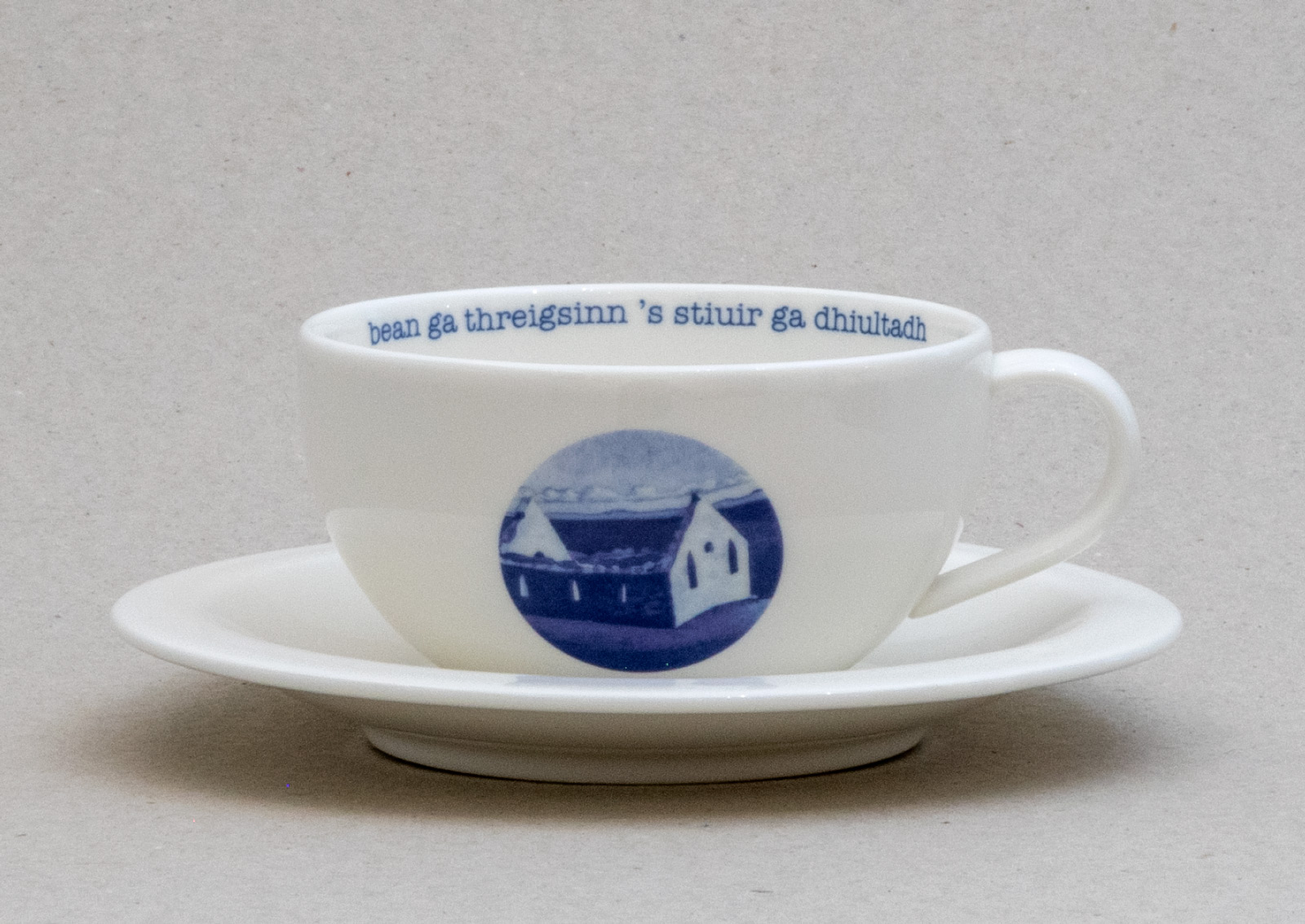
'bean ga thrèigsinn is stiùir ga dhiùltadh' (Deserted by a Woman and Defied by the Rudder)
Ishbel Murray
2016 : Dimensions: 6 x 15 x 15cm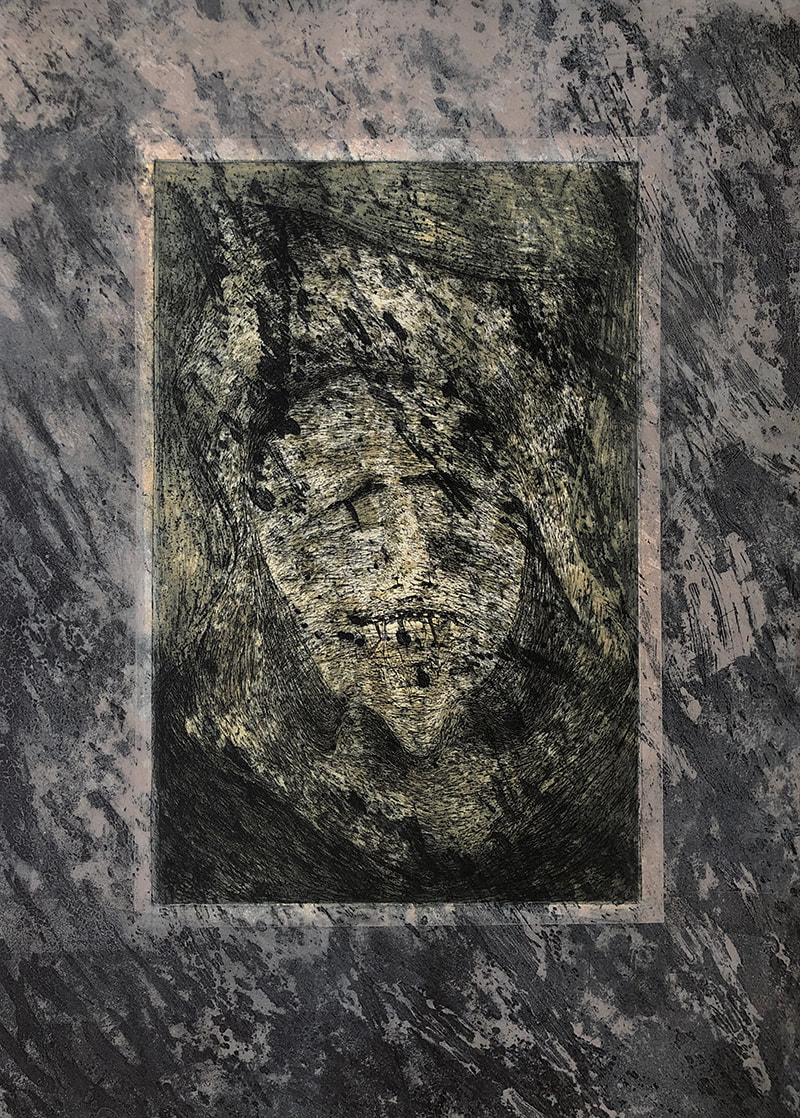
Marbhrann do Chaiptean Fearghustan (Elegy to Captain Ferguson)
Will Maclean RSA
1991 : Dimensions: 75 x 54cm
‘S Fhada Leam an Oidhche Gheamraidh (I Feel the Winter Night is Long)*
Mary Morrison
2016 : Dimensions: 26 x 102cm : Framed: 43 x 121 x 3cmRaven
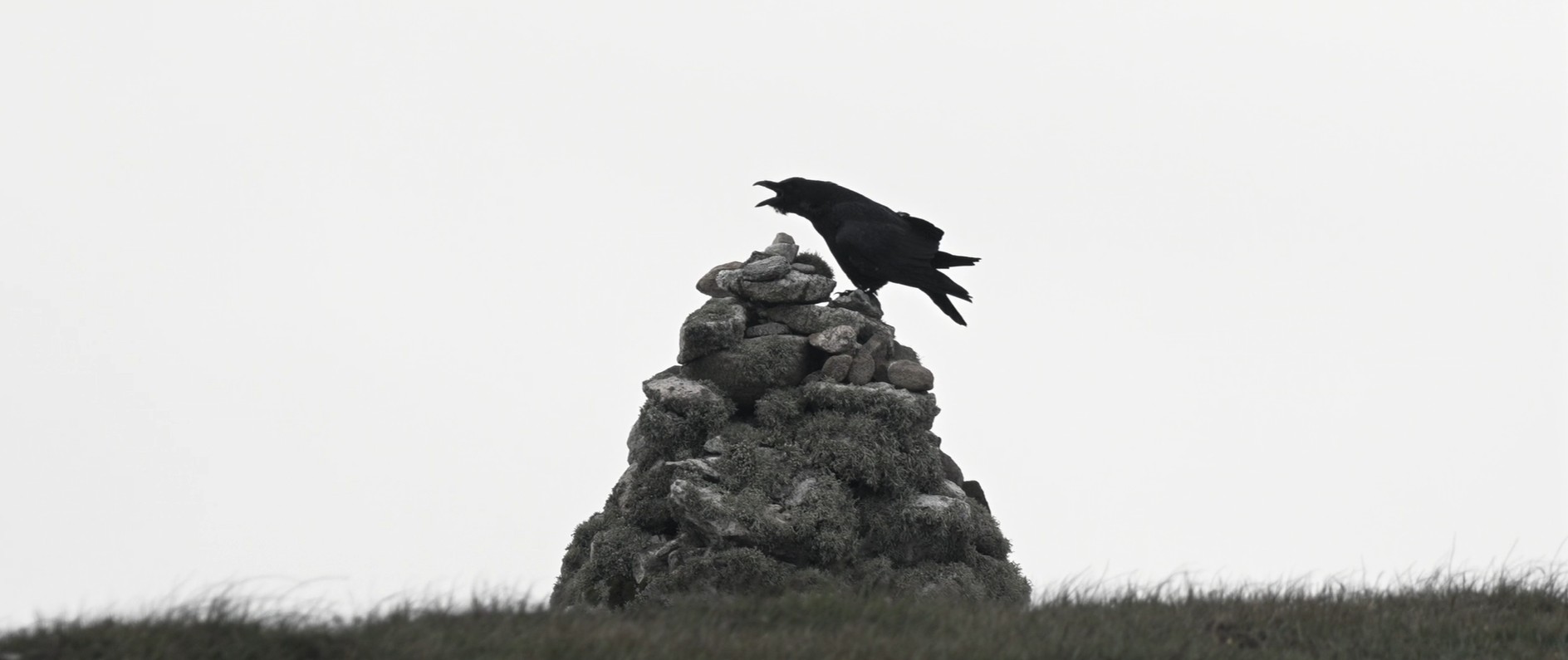
Still from 'Raven'
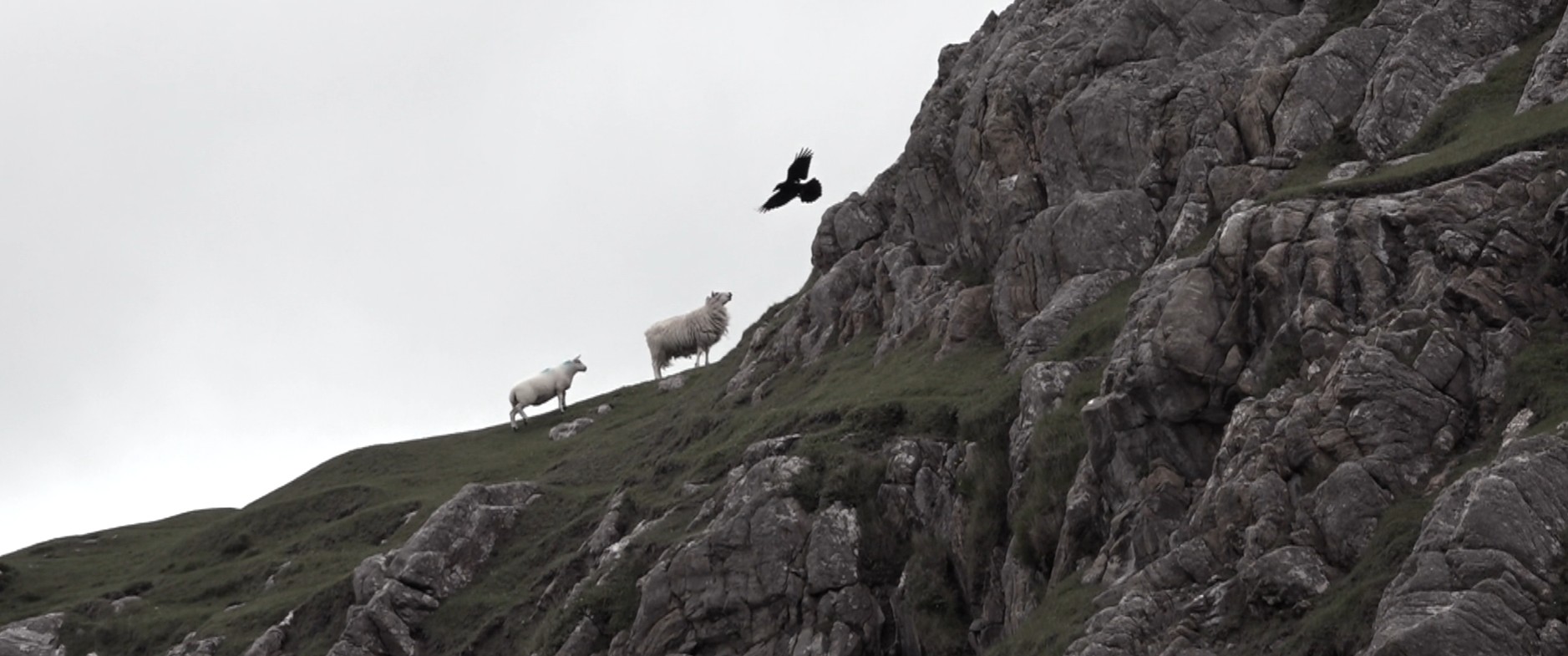
Still from 'Raven'
Raven
Dalziel + Scullion
Single channel video 4K 18 minutes with audio incantation.
This film work was made through following two pairs of ravens over a period of a year.
We observed them tending their nests, rearing chicks, flipping upside down (just because they could), hiding food and both surviving and succumbing to the elements. When watching ravens, the watcher is also being scrutinised. They recognise faces, sounds, gestures and physical traits. Known to follow and acknowledge human presence, to hold grudges and reward kindnesses, they are always vigilant, and once they have our attention they will caw loudly or enact flamboyant fly pasts. We would pay attention and listen, and a mutual acknowledgement took place.
Raven’s have been on earth 20 times longer than us, but the earliest human representations of ravens can be seen in the 30,000-year-old drawings of them in the Lascaux caves in France. Intelligent, mischievous, sentient and darkly beautiful, these mysterious creatures have been watching us for a long time. In more recent history, corvids have been demonised as outcasts, accused of foul deeds and so, effectively persecuted with impunity. But the Norse God Odin held a more balanced view, his two ravens Huggin and Muninn (Thought and Memory) sat on his shoulders and were sent out to fly over the world and report back what was taking place on the earth. Bringing accounts of life and death, aerial views of good and evil. Iridescent black emissaries from the past and the future.
Single channel video 4K 18 minutes with audio incantation.
Filmed on the island of Lewis, Outer Hebrides 2025
Coastal Echoes
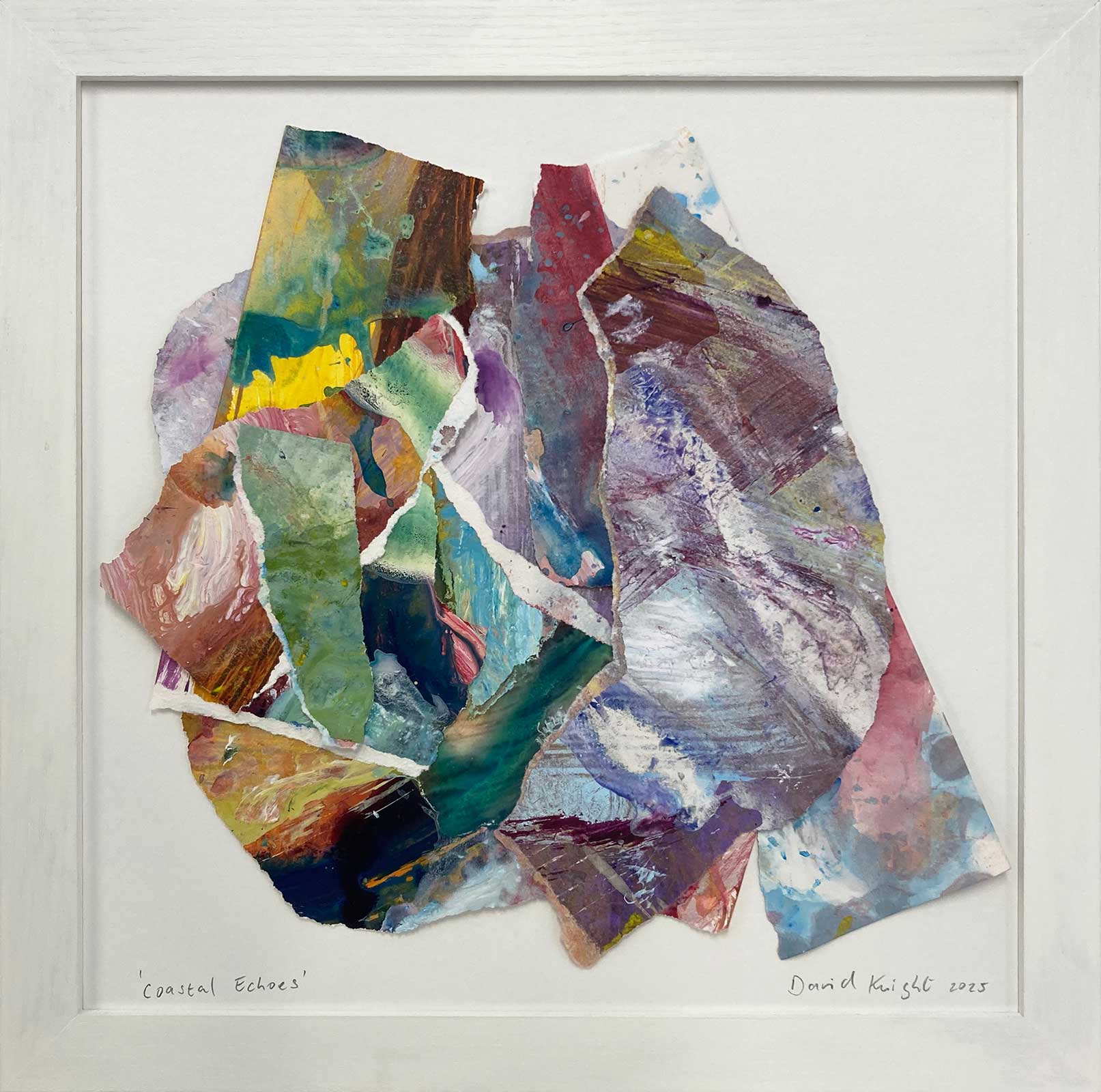
Coastal Echoes
Coastal Echoes
David Knight
Acrylic, collaged paper.
Dimensions: H:27 x W:27(cm)
Framed: H:30 x W:30(cm)
‘Coastal Echoes’ has many interconnected layers. Within the assembled collaged structure there are glimpses of light, colour, edges, surfaces and spaces; this forms a dynamic movement, and tension, between the richly textured surfaces and the spatial structures. A coastal landscape in flux, never static, always changing.
I find the landscape a very sonorous entity, for me sound is always evident both within the landscape, and within painting. Musical analogies are a good way to describe both painting, and the landscape as music is beautifully unfettered and completely abstract, yet real and powerfully emotional. For me music/sound has always played an import role in both painting and walking in the landscape. And music was there before my paintings.
During the summer 2023 my father died. One of his favourite albums was Meddle by Pink Floyd. I remember him buying it when it came out in 1971 from Bradley’s Records, Halifax, I would have been ten years old. I also remember playing it a lot myself, particularly ‘Echoes’, an epic soundscape with vast, wonderfully implied open dynamic and mysterious spaces. I was particularly intrigued with how music could describe the landscape (echo) in purely emotional terms.
I asked my mother if I could have Dad’s copy of ‘Meddle’, but unfortunately we couldn’t find it, I thought it would have been a great memory of him. I did think of buying a new copy from HMV but somehow a new remastered version wasn’t going to be the same. Recently I mentioned this to a friend Andy (Laffan). Amazingly Andy said I have two original copies and very kindly gave one to me!
‘Coastal Echoes’ is both a response to the Isle of Lewis coastal landscape and ‘Echoes’ the epic Pink Floyd track that helped me all those years ago begin seeing, and describing, the landscape in a different, more abstract, more emotional way.
I am more than delighted to give Andy ‘Coastal Echoes’ as a thank you for reuniting me with an original (like Dad’s) ‘Meddle’.
David Knight 2025.
‘chaill e an seòl-mara’ (He Lost the Tide)
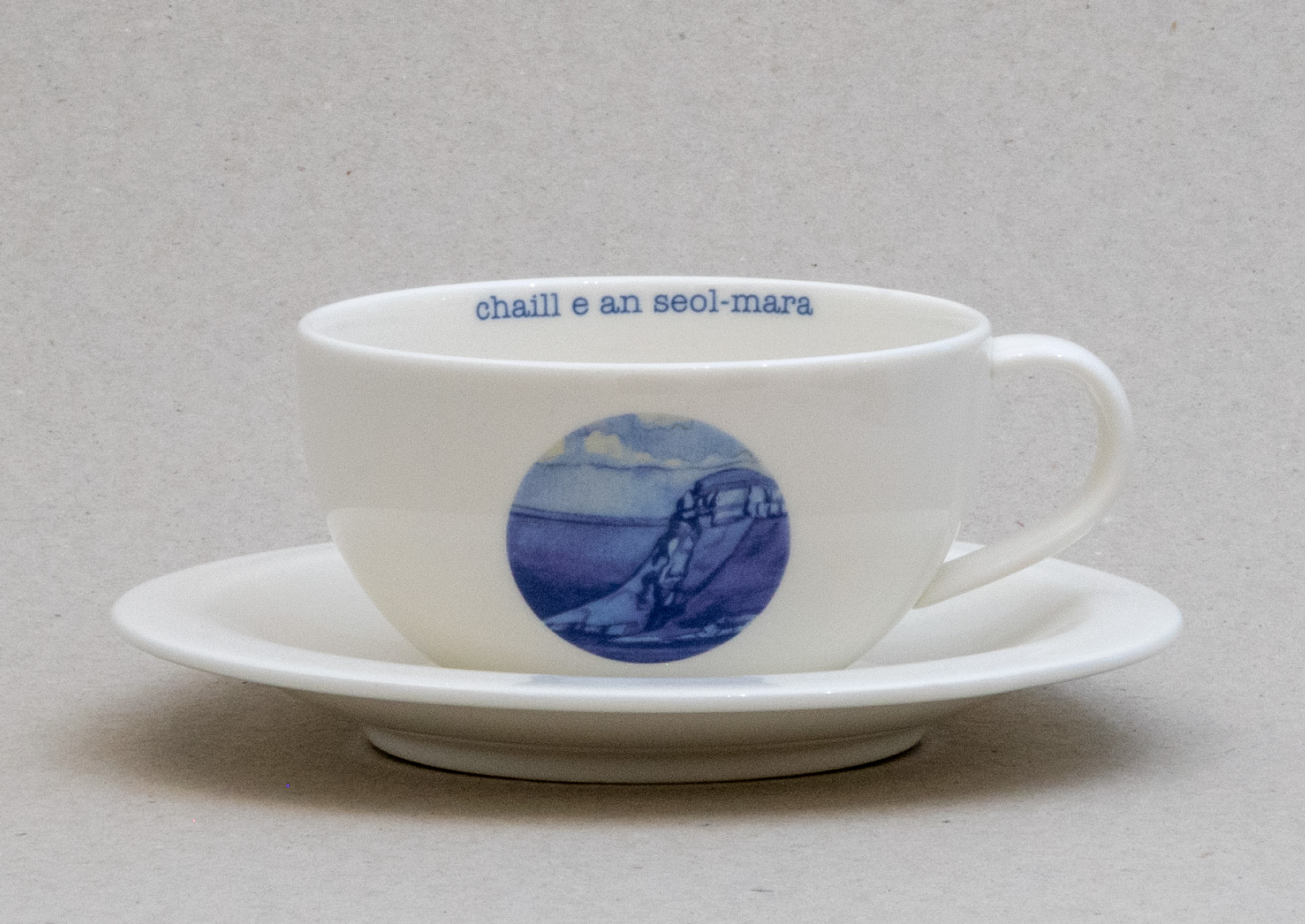
‘chaill e an seòl-mara’ (He Lost the Tide)
‘chaill e an seòl-mara’ (He Lost the Tide)
Ishbel Murray
Bone china and blue decal
Dimensions: H:6 x W:15 x D:15(cm)
‘chaill e an seòl-mara’ (He Lost the Tide)
Ceramic tea cup & saucer with decal print.
From The ceramics project 'Conversational Fragments' 2012, Ishbel Murray.
The Gaelic phrase "Chaill e an seòl-mara" translates to "He lost the tide" in English.
This is a well-known Scottish Gaelic proverb (seanfhacal) that signifies missed opportunities. It is often used to imply that a chance or a favourable moment has passed and will not return.
- - - - - - - - - - - - -
The ceramics project 'Conversational Fragments' began with a piece of blue china found on the beach near the place where the artist grew up on the Isle of Lewis in the Outer Hebrides. Over time the single fragment became a collection of small blue patterned pieces found on various shorelines around the Western Isles.
"Thinking about where the pieces of china had come from brought back childhood memories of visits to the homes of elderly relatives and neighbours. Although most islanders were living in modern board of agriculture 'white houses' by the seventies when I was a teenager, some of the older generation in many districts still lived in traditional highland 'black houses'. Like my grandparents most of that generation had earned their living from fishing. In the summer the men and young women went off to the herring fishing, the men joining crews of east coast fishermen and the women working as herring girls following the fleets from ports as far apart as Lerwick and Fraserburgh in the north of Scotland to Yarmouth down on the east coast of England. At the end of a good season the herring girls returned home with gifts of beautiful china that might be displayed in the traditional dresser found in most homes.
Today the 'black house' is either the focus of a heritage project or the inspiration for an architect's modern take on the eco-friendly original. It's hard not to feel nostalgic for the past where china fragments washed up on the beach might have been found complete, shiny and new on a dresser shelf. Thoughts on who might have owned them, who drank from the cups and ate from the dishes and what their Gaelic speaking owners talked about inspired this project, 'Conversational Fragments'.
The fragments of Gaelic conversation decorating my china pieces were taken from the Gaelic language notebook I kept. Scraps of conversation overheard somewhere, memorised or jotted down quickly, now separated from the speaker and the conversations they were part of. The china fragments are still in a box somewhere. The Gaelic phrases have been studied and filed away.
The images on the china are taken from sketches of the coastlines around the Western Isles - the location of the china fragments and the home of the Gaelic language fragments. Each series in the project is made up of eight phrases linked by a common theme, from idioms associated with the sea to expressions linked by a single key word. "
‘car an aghaidh cuir’ (Twist, bend, turn)

‘car an aghaidh cuir’ (Twist, bend, turn)
‘car an aghaidh cuir’ (Twist, bend, turn)
Ishbel Murray
Bone china and blue decal
Dimensions: H:6 x W:15 x D:15(cm)
‘car an aghaidh cuir’ (Twist, bend, turn)
Ceramic tea cup & saucer with decal print.
From The ceramics project 'Conversational Fragments' 2012, Ishbel Murray.
The phrase "car an aghaidh cuir" is a Scottish Gaelic idiom that translates to "be against," "oppose," "contradict," or "object to".
The expression is generally used to describe opposition or resistance to something.
- - - - - - - - - - - - -
The ceramics project 'Conversational Fragments' began with a piece of blue china found on the beach near the place where the artist grew up on the Isle of Lewis in the Outer Hebrides. Over time the single fragment became a collection of small blue patterned pieces found on various shorelines around the Western Isles.
"Thinking about where the pieces of china had come from brought back childhood memories of visits to the homes of elderly relatives and neighbours. Although most islanders were living in modern board of agriculture 'white houses' by the seventies when I was a teenager, some of the older generation in many districts still lived in traditional highland 'black houses'. Like my grandparents most of that generation had earned their living from fishing. In the summer the men and young women went off to the herring fishing, the men joining crews of east coast fishermen and the women working as herring girls following the fleets from ports as far apart as Lerwick and Fraserburgh in the north of Scotland to Yarmouth down on the east coast of England. At the end of a good season the herring girls returned home with gifts of beautiful china that might be displayed in the traditional dresser found in most homes.
Today the 'black house' is either the focus of a heritage project or the inspiration for an architect's modern take on the eco-friendly original. It's hard not to feel nostalgic for the past where china fragments washed up on the beach might have been found complete, shiny and new on a dresser shelf. Thoughts on who might have owned them, who drank from the cups and ate from the dishes and what their Gaelic speaking owners talked about inspired this project, 'Conversational Fragments'.
The fragments of Gaelic conversation decorating my china pieces were taken from the Gaelic language notebook I kept. Scraps of conversation overheard somewhere, memorised or jotted down quickly, now separated from the speaker and the conversations they were part of. The china fragments are still in a box somewhere. The Gaelic phrases have been studied and filed away.
The images on the china are taken from sketches of the coastlines around the Western Isles - the location of the china fragments and the home of the Gaelic language fragments. Each series in the project is made up of eight phrases linked by a common theme, from idioms associated with the sea to expressions linked by a single key word. "
'dèanamh cuain mhòir de chaolas cumhang' (Making a Great Ocean of a Narrow Strait)

'dèanamh cuain mhòir de chaolas cumhang' (Making a Great Ocean of a Narrow Strait)
'dèanamh cuain mhòir de chaolas cumhang' (Making a Great Ocean of a Narrow Strait)
Ishbel Murray
Bone china and blue decal
Dimensions: H:6 x W:15 x D:15(cm)
'dèanamh cuain mhòir de chaolas cumhang' (Making a Great Ocean of a Narrow Strait)
Ceramic tea cup & saucer with decal print.
From The ceramics project 'Conversational Fragments' 2012, Ishbel Murray.
"A' dèanamh cuain mhòir de chaolas cumhang" is a Scottish Gaelic proverb that translates to "making a great ocean of a narrow strait".
It is a figurative expression equivalent to the English idiom "making mountains out of molehills", meaning to exaggerate a problem or minor difficulty all out of proportion.
- - - - - - - - - - - - -
The ceramics project 'Conversational Fragments' began with a piece of blue china found on the beach near the place where the artist grew up on the Isle of Lewis in the Outer Hebrides. Over time the single fragment became a collection of small blue patterned pieces found on various shorelines around the Western Isles.
"Thinking about where the pieces of china had come from brought back childhood memories of visits to the homes of elderly relatives and neighbours. Although most islanders were living in modern board of agriculture 'white houses' by the seventies when I was a teenager, some of the older generation in many districts still lived in traditional highland 'black houses'. Like my grandparents most of that generation had earned their living from fishing. In the summer the men and young women went off to the herring fishing, the men joining crews of east coast fishermen and the women working as herring girls following the fleets from ports as far apart as Lerwick and Fraserburgh in the north of Scotland to Yarmouth down on the east coast of England. At the end of a good season the herring girls returned home with gifts of beautiful china that might be displayed in the traditional dresser found in most homes.
Today the 'black house' is either the focus of a heritage project or the inspiration for an architect's modern take on the eco-friendly original. It's hard not to feel nostalgic for the past where china fragments washed up on the beach might have been found complete, shiny and new on a dresser shelf. Thoughts on who might have owned them, who drank from the cups and ate from the dishes and what their Gaelic speaking owners talked about inspired this project, 'Conversational Fragments'.
The fragments of Gaelic conversation decorating my china pieces were taken from the Gaelic language notebook I kept. Scraps of conversation overheard somewhere, memorised or jotted down quickly, now separated from the speaker and the conversations they were part of. The china fragments are still in a box somewhere. The Gaelic phrases have been studied and filed away.
The images on the china are taken from sketches of the coastlines around the Western Isles - the location of the china fragments and the home of the Gaelic language fragments. Each series in the project is made up of eight phrases linked by a common theme, from idioms associated with the sea to expressions linked by a single key word. "
‘car a’ mhuiltein’ (Somersault)
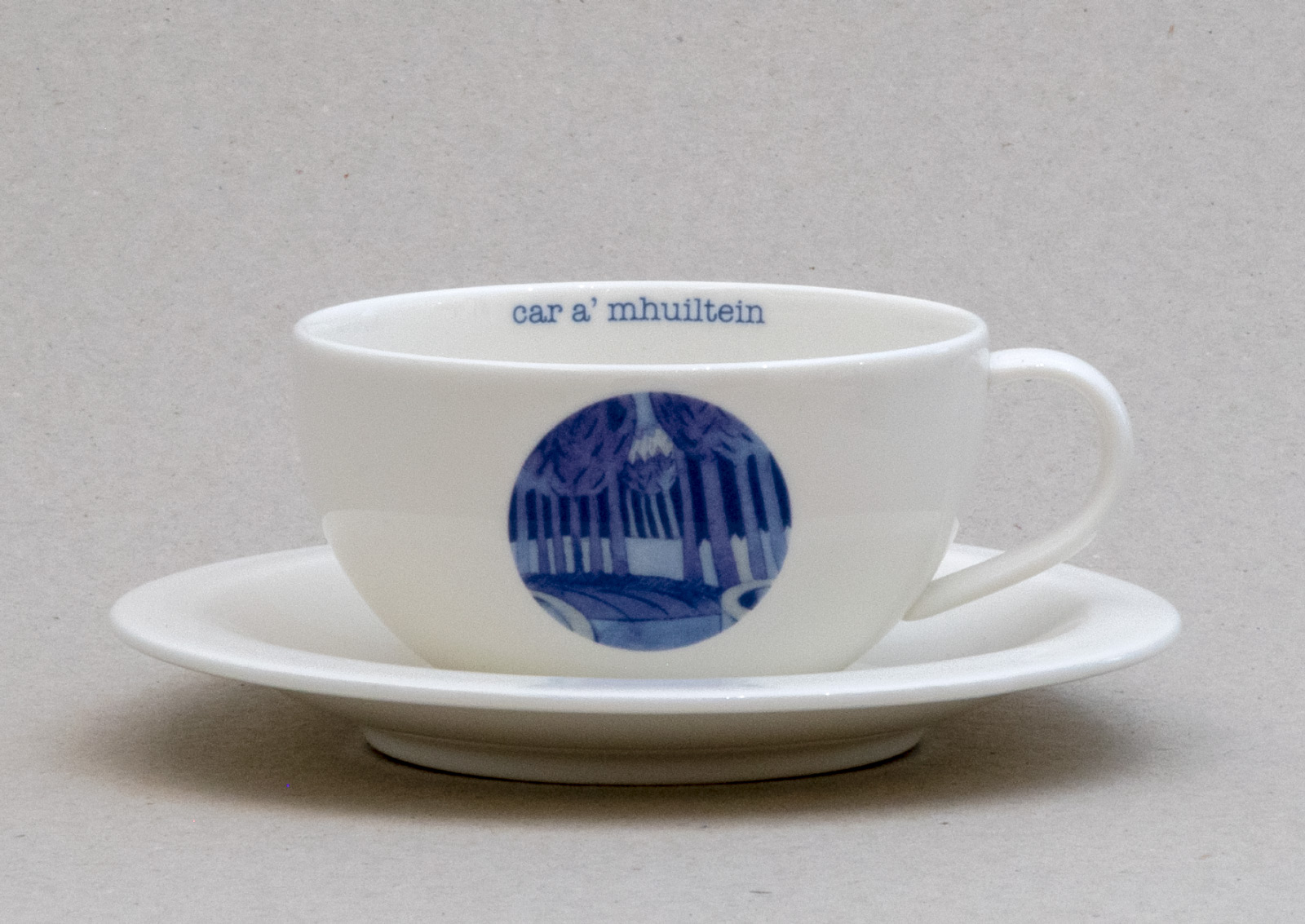
‘car a’ mhuiltein’ (Somersault)
‘car a’ mhuiltein’ (Somersault)
Ishbel Murray
Bone china and blue decal
Dimensions: H:6 x W:15 x D:15(cm)
‘car a’ mhuiltein’ (Somersault)
Ceramic tea cup & saucer with decal print.
From The ceramics project 'Conversational Fragments' 2012, Ishbel Murray.
"Car a’ mhuiltein" is a Scottish Gaelic phrase that can mean "somersault," "head over heels," or "tumbler" (like a glass). It is also the title of a 2023 Gaelic short film by Iain Finlay Macleod, which explores the connection between language, identity, and the past on the Isle of Lewis.
- - - - - - - - - - - - -
The ceramics project 'Conversational Fragments' began with a piece of blue china found on the beach near the place where the artist grew up on the Isle of Lewis in the Outer Hebrides. Over time the single fragment became a collection of small blue patterned pieces found on various shorelines around the Western Isles.
"Thinking about where the pieces of china had come from brought back childhood memories of visits to the homes of elderly relatives and neighbours. Although most islanders were living in modern board of agriculture 'white houses' by the seventies when I was a teenager, some of the older generation in many districts still lived in traditional highland 'black houses'. Like my grandparents most of that generation had earned their living from fishing. In the summer the men and young women went off to the herring fishing, the men joining crews of east coast fishermen and the women working as herring girls following the fleets from ports as far apart as Lerwick and Fraserburgh in the north of Scotland to Yarmouth down on the east coast of England. At the end of a good season the herring girls returned home with gifts of beautiful china that might be displayed in the traditional dresser found in most homes.
Today the 'black house' is either the focus of a heritage project or the inspiration for an architect's modern take on the eco-friendly original. It's hard not to feel nostalgic for the past where china fragments washed up on the beach might have been found complete, shiny and new on a dresser shelf. Thoughts on who might have owned them, who drank from the cups and ate from the dishes and what their Gaelic speaking owners talked about inspired this project, 'Conversational Fragments'.
The fragments of Gaelic conversation decorating my china pieces were taken from the Gaelic language notebook I kept. Scraps of conversation overheard somewhere, memorised or jotted down quickly, now separated from the speaker and the conversations they were part of. The china fragments are still in a box somewhere. The Gaelic phrases have been studied and filed away.
The images on the china are taken from sketches of the coastlines around the Western Isles - the location of the china fragments and the home of the Gaelic language fragments. Each series in the project is made up of eight phrases linked by a common theme, from idioms associated with the sea to expressions linked by a single key word. "
'crann a-rèir a' bhàta' (A Mast to Suit the Boat).
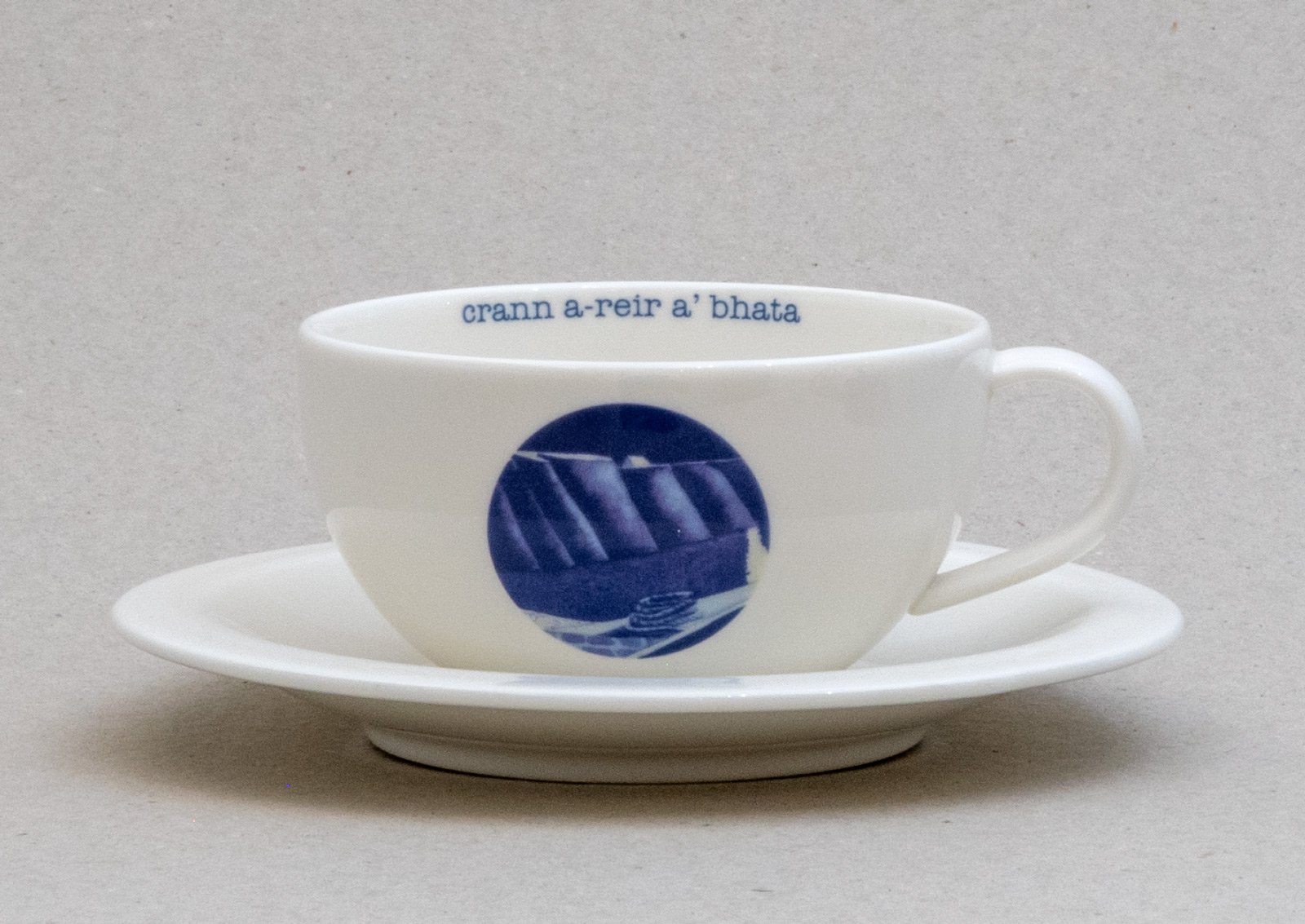
'crann a-rèir a' bhàta' (A Mast to Suit the Boat).
'crann a-rèir a' bhàta' (A Mast to Suit the Boat).
Ishbel Murray
Bone china and blue decal
Dimensions: H:6 x W:15 x D:15(cm)
'crann a-rèir a' bhàta' (A Mast to Suit the Boat).
Ceramic tea cup & saucer with decal print.
From The ceramics project 'Conversational Fragments' 2012, Ishbel Murray.
The phrase "crann a-rèir a' bhàta" is a traditional Scottish Gaelic proverb that translates to "a mast to suit the boat".
The general meaning of the proverb is that things should be appropriate to their circumstances or situation. It emphasizes proportionality and common sense; for instance, the size and sturdiness of a boat's mast should be suitable for the size of the boat it is meant to support.
- - - - - - - - - - - - -
The ceramics project 'Conversational Fragments' began with a piece of blue china found on the beach near the place where the artist grew up on the Isle of Lewis in the Outer Hebrides. Over time the single fragment became a collection of small blue patterned pieces found on various shorelines around the Western Isles.
"Thinking about where the pieces of china had come from brought back childhood memories of visits to the homes of elderly relatives and neighbours. Although most islanders were living in modern board of agriculture 'white houses' by the seventies when I was a teenager, some of the older generation in many districts still lived in traditional highland 'black houses'. Like my grandparents most of that generation had earned their living from fishing. In the summer the men and young women went off to the herring fishing, the men joining crews of east coast fishermen and the women working as herring girls following the fleets from ports as far apart as Lerwick and Fraserburgh in the north of Scotland to Yarmouth down on the east coast of England. At the end of a good season the herring girls returned home with gifts of beautiful china that might be displayed in the traditional dresser found in most homes.
Today the 'black house' is either the focus of a heritage project or the inspiration for an architect's modern take on the eco-friendly original. It's hard not to feel nostalgic for the past where china fragments washed up on the beach might have been found complete, shiny and new on a dresser shelf. Thoughts on who might have owned them, who drank from the cups and ate from the dishes and what their Gaelic speaking owners talked about inspired this project, 'Conversational Fragments'.
The fragments of Gaelic conversation decorating my china pieces were taken from the Gaelic language notebook I kept. Scraps of conversation overheard somewhere, memorised or jotted down quickly, now separated from the speaker and the conversations they were part of. The china fragments are still in a box somewhere. The Gaelic phrases have been studied and filed away.
The images on the china are taken from sketches of the coastlines around the Western Isles - the location of the china fragments and the home of the Gaelic language fragments. Each series in the project is made up of eight phrases linked by a common theme, from idioms associated with the sea to expressions linked by a single key word. "
'bean ga thrèigsinn is stiùir ga dhiùltadh' (Deserted by a Woman and Defied by the Rudder)

'bean ga thrèigsinn is stiùir ga dhiùltadh' (Deserted by a Woman and Defied by the Rudder)
'bean ga thrèigsinn is stiùir ga dhiùltadh' (Deserted by a Woman and Defied by the Rudder)
Ishbel Murray
Bone china and blue decal
Dimensions: H:6 x W:15 x D:15(cm)
'bean ga thrèigsinn is stiùir ga dhiùltadh' (Deserted by a Woman and Defied by the Rudder)
Ceramic tea cup & saucer with decal print.
From The ceramics project 'Conversational Fragments' 2012, Ishbel Murray.
The Gaelic phrase "bean ga thrèigsinn 's stiùir ga dhiùltadh" is a traditional saying that translates to "deserted by a woman and defied by the rudder".
The phrase is a metaphor for misfortune or a total run of bad luck. It is often associated with the sea and the unpredictable nature of fate. The saying implies a situation where one experiences failure in both their personal life (deserted by a woman) and their professional or practical life (defied by the rudder, a critical component for steering a boat).
- - - - - - - - - - - - -
The ceramics project 'Conversational Fragments' began with a piece of blue china found on the beach near the place where the artist grew up on the Isle of Lewis in the Outer Hebrides. Over time the single fragment became a collection of small blue patterned pieces found on various shorelines around the Western Isles.
"Thinking about where the pieces of china had come from brought back childhood memories of visits to the homes of elderly relatives and neighbours. Although most islanders were living in modern board of agriculture 'white houses' by the seventies when I was a teenager, some of the older generation in many districts still lived in traditional highland 'black houses'. Like my grandparents most of that generation had earned their living from fishing. In the summer the men and young women went off to the herring fishing, the men joining crews of east coast fishermen and the women working as herring girls following the fleets from ports as far apart as Lerwick and Fraserburgh in the north of Scotland to Yarmouth down on the east coast of England. At the end of a good season the herring girls returned home with gifts of beautiful china that might be displayed in the traditional dresser found in most homes.
Today the 'black house' is either the focus of a heritage project or the inspiration for an architect's modern take on the eco-friendly original. It's hard not to feel nostalgic for the past where china fragments washed up on the beach might have been found complete, shiny and new on a dresser shelf. Thoughts on who might have owned them, who drank from the cups and ate from the dishes and what their Gaelic speaking owners talked about inspired this project, 'Conversational Fragments'.
The fragments of Gaelic conversation decorating my china pieces were taken from the Gaelic language notebook I kept. Scraps of conversation overheard somewhere, memorised or jotted down quickly, now separated from the speaker and the conversations they were part of. The china fragments are still in a box somewhere. The Gaelic phrases have been studied and filed away.
The images on the china are taken from sketches of the coastlines around the Western Isles - the location of the china fragments and the home of the Gaelic language fragments. Each series in the project is made up of eight phrases linked by a common theme, from idioms associated with the sea to expressions linked by a single key word. "
Bonnie Truth, Untitled (#3)
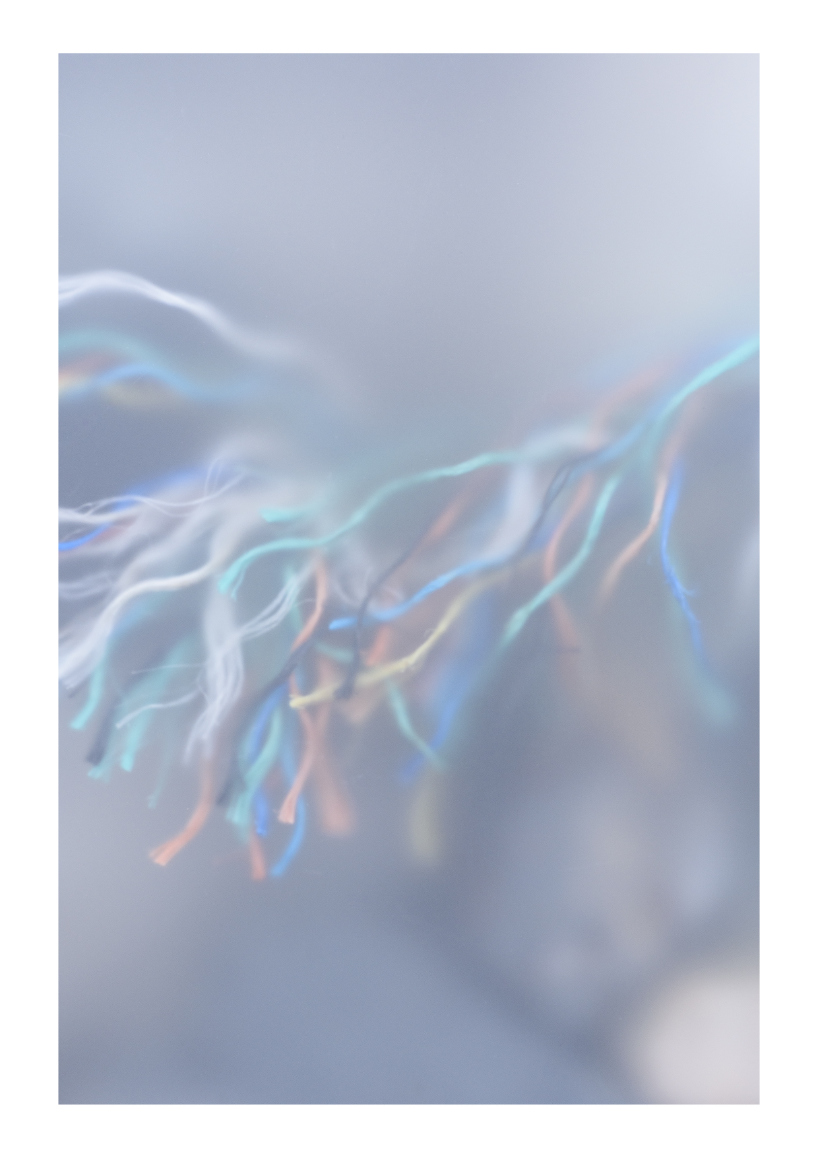
Bonnie Truth, Untitled (#3) - Edition 1 of 10
Bonnie Truth, Untitled (#3)
Stephan-Maria Aust
Giclée Prints on Hahnemühle Fine Art paper
Dimensions: H:68 x W:47(cm)
Edition Number 1 of 10, aquired for The Hulabhaig Collection. Other editions are available to purchase.
Stephan-Maria Aust's photo series ‘Bonnie Truth’ invites us on a visual journey along the coasts of the Hebrides – a seemingly delicate dance of light, shadow and landscape that appears calming at first glance. However, behind this almost poetic aesthetic lies an urgent message: nature is threatened by the flood of plastic waste produced by humans, the sea gurgles with debris and ultimately spits it out onto the beaches.
With masterful photographic technique, Aust transforms this ambivalent theme into fascinating images full of atmosphere and urgency that arouse emotions and stimulate reflection.
‘Bonnie Truth’ impressively combines artistic beauty and social responsibility – art that challenges viewing habits and inspires action. A work as a powerful statement in any space.
An Sùileachan
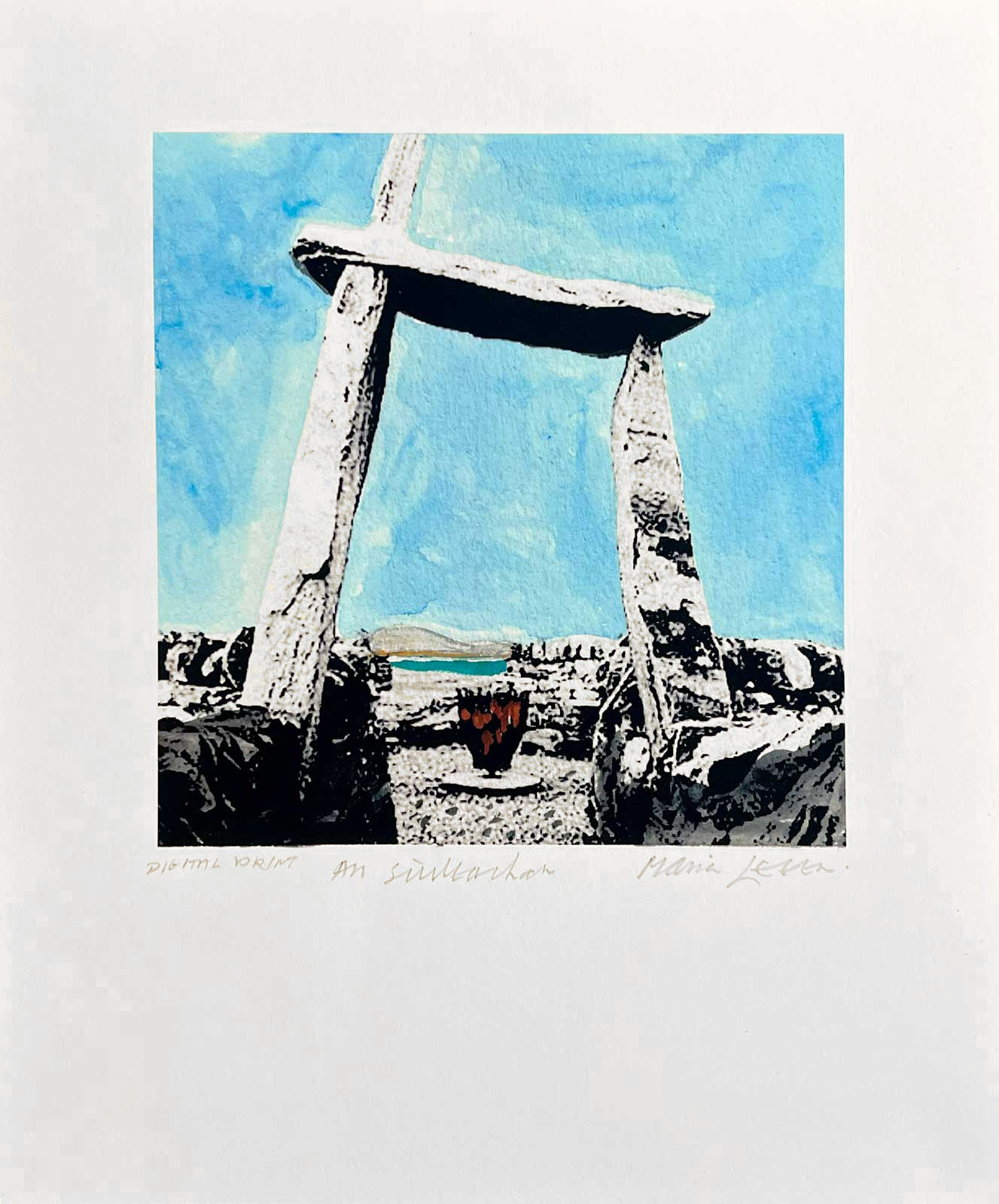
An Sùileachan
An Sùileachan
Marian Leven RSA
Dimensions: H:40 x W:30(cm)
Postcard from Garybhard 5
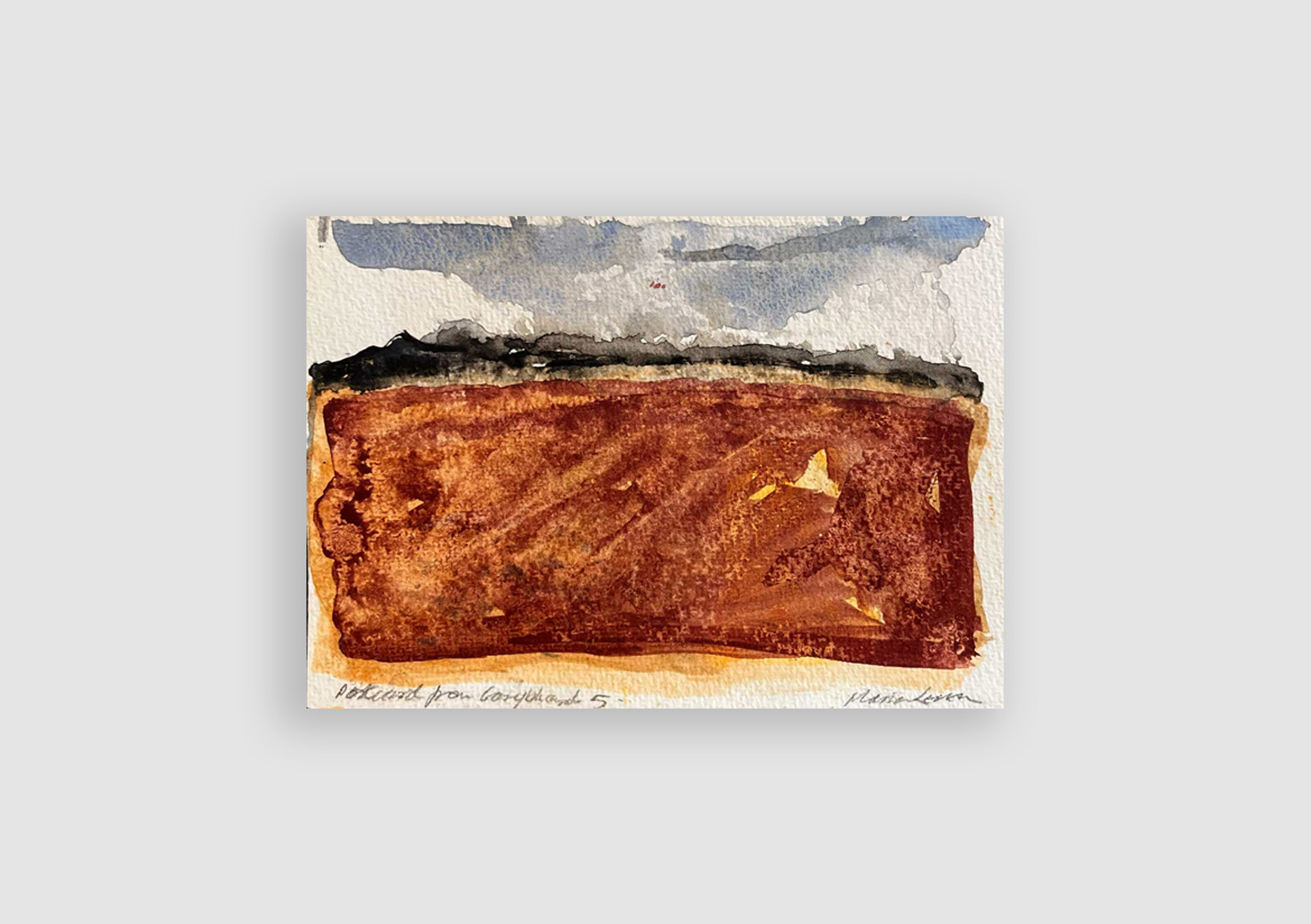
Postcard from Garybhard 5
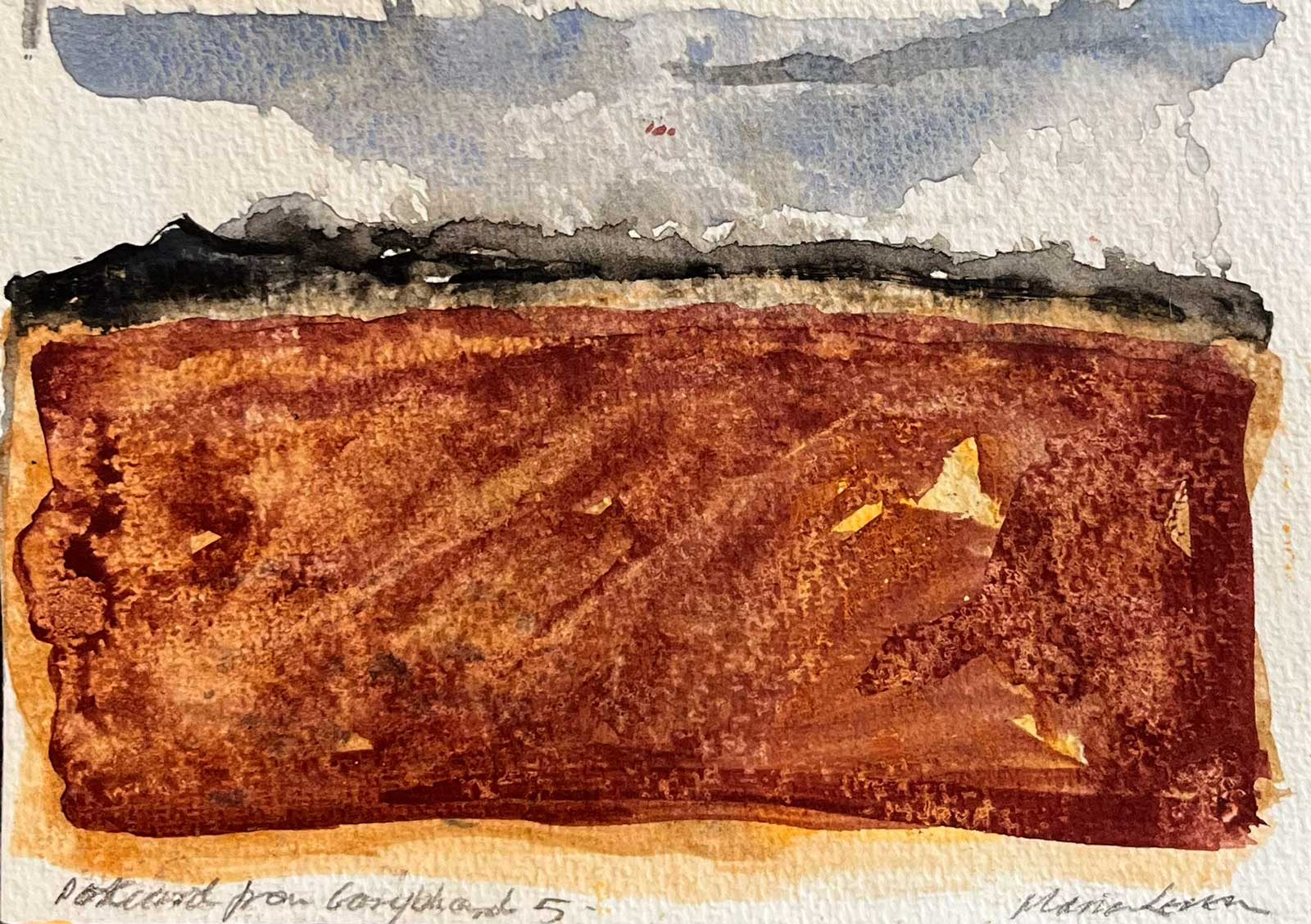
Postcard from Garybhard 5
Postcard from Garybhard 5
Marian Leven RSA
Dimensions: H:11 x W:15(cm)
Cloud Shadow, Garybhard
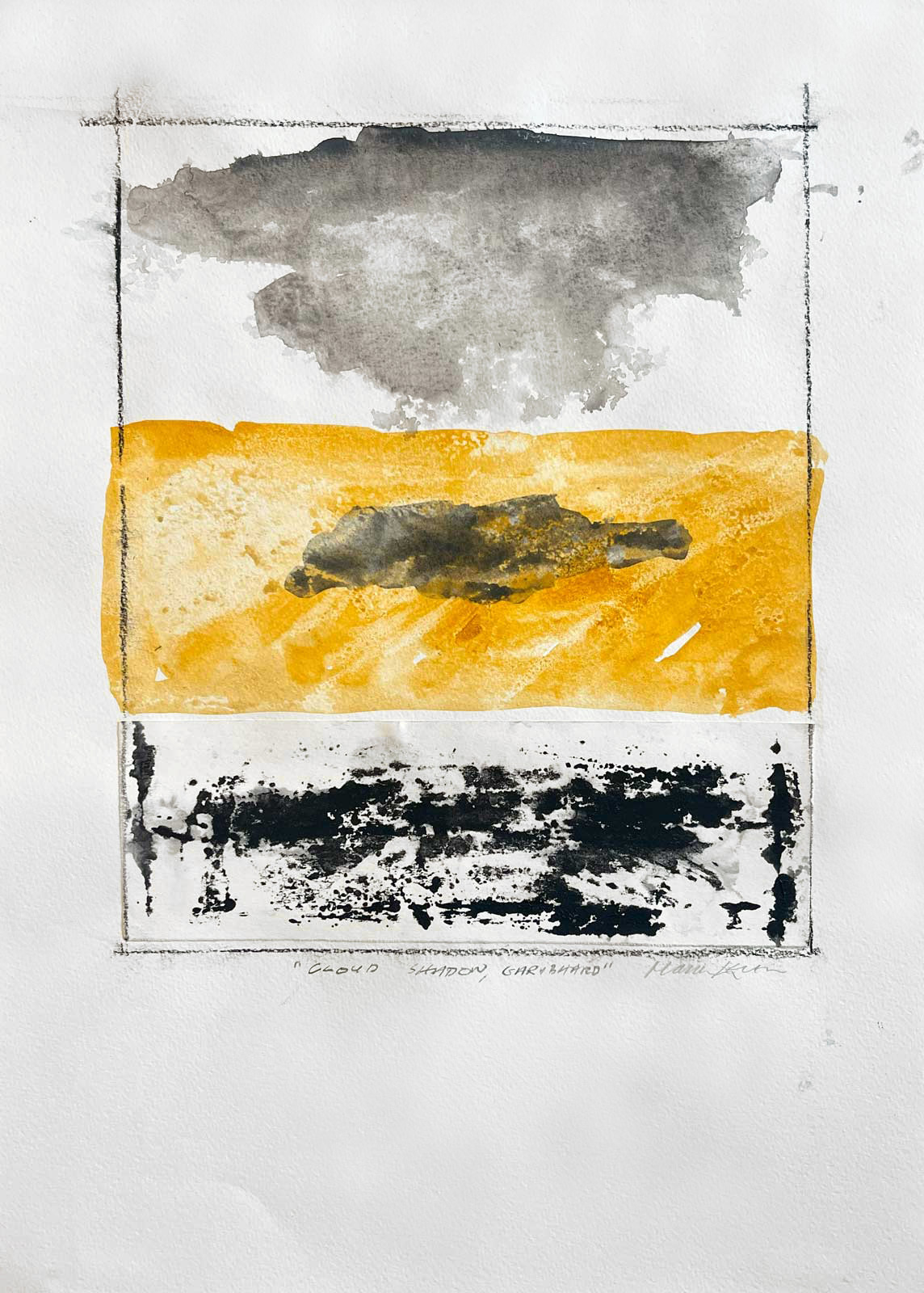
Cloud Shadow, Garybhard
Cloud Shadow, Garybhard
Marian Levan RSA
Dimensions: H:42 x W:30(cm)
Black Weather, Garybhard
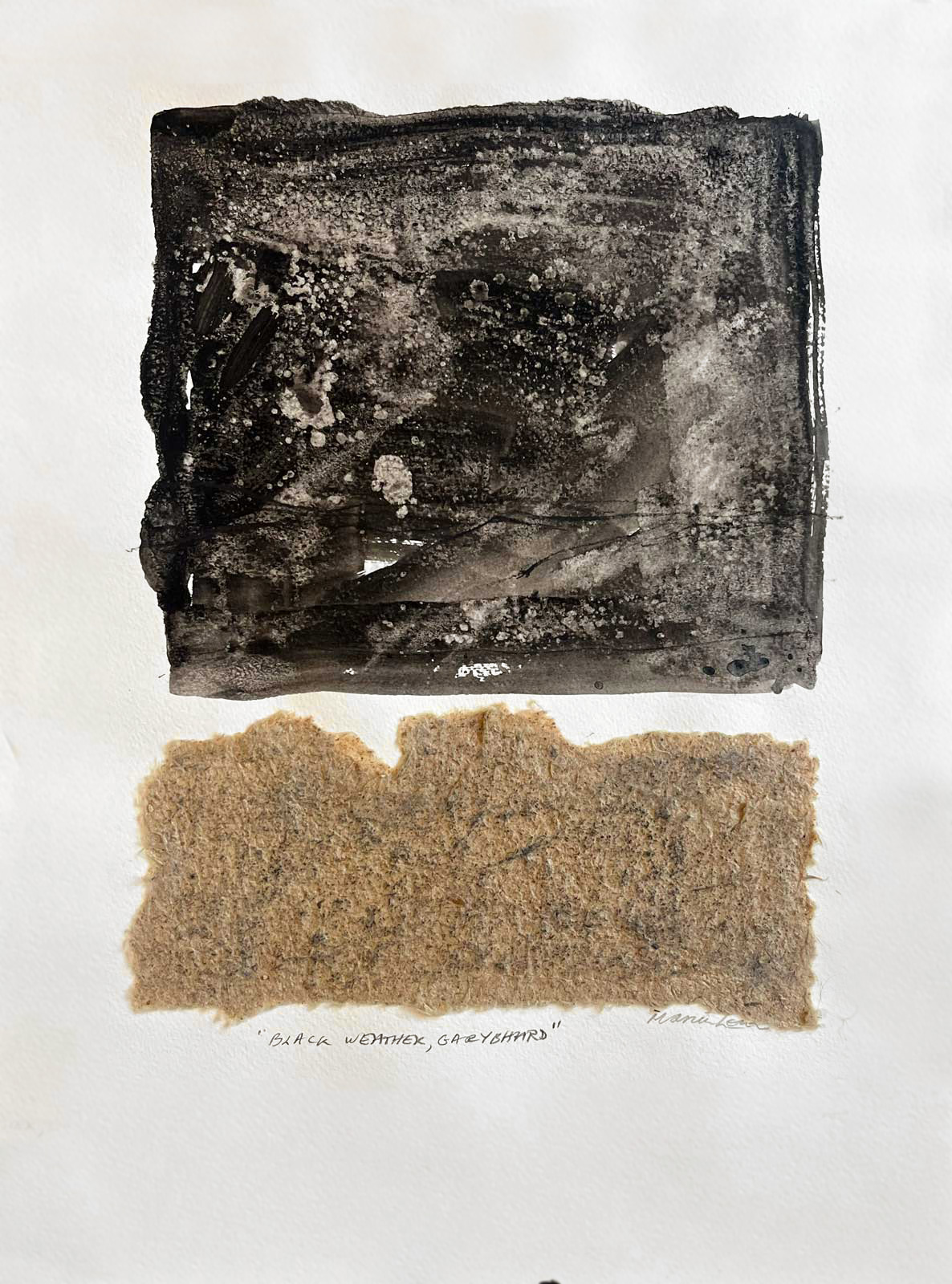
Black Weather, Garybhard
Black Weather, Garybhard
Marian Leven RSA
Dimensions: H:28 x W:24(cm)
Gallan Head Landscape
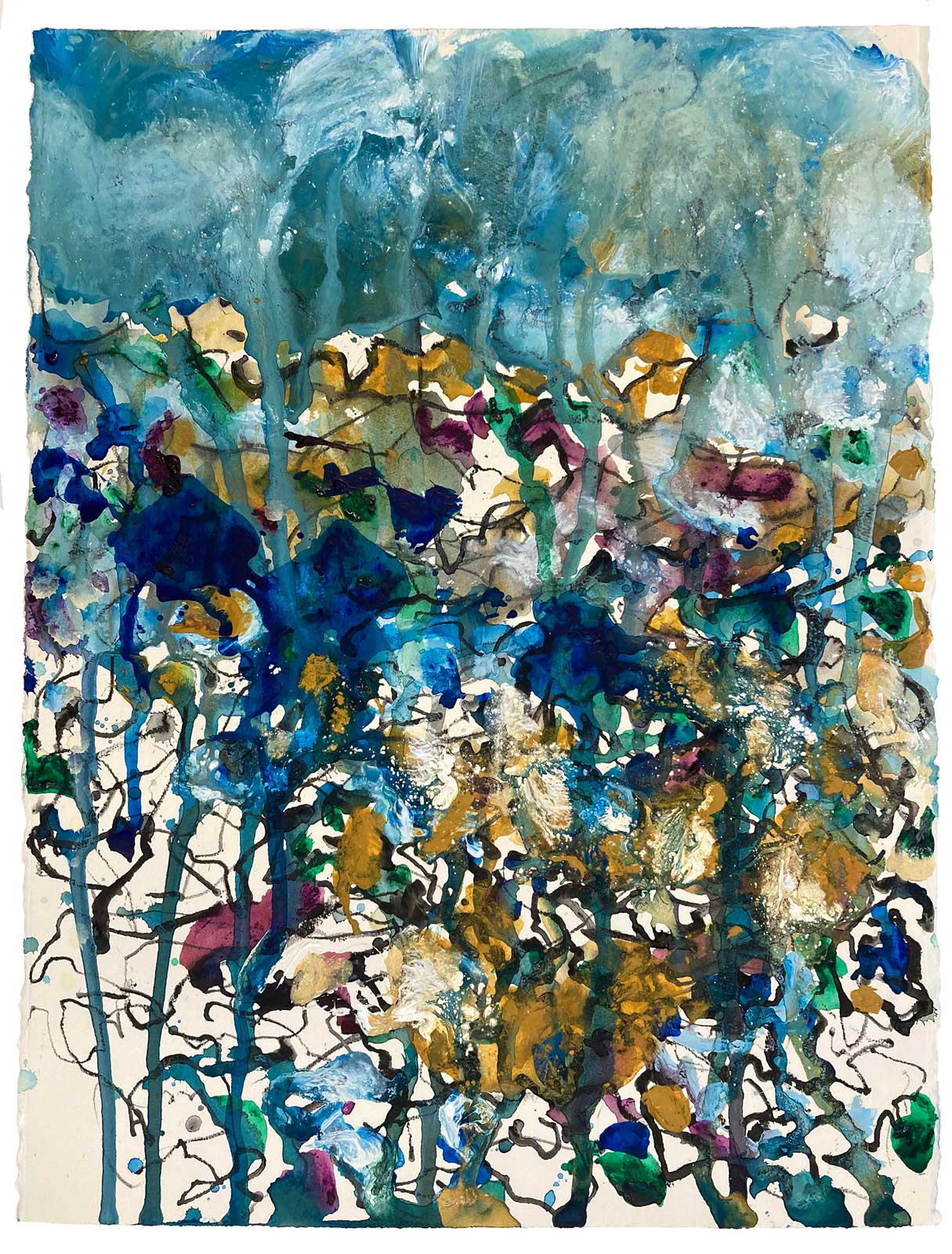
Gallan Head Landscape
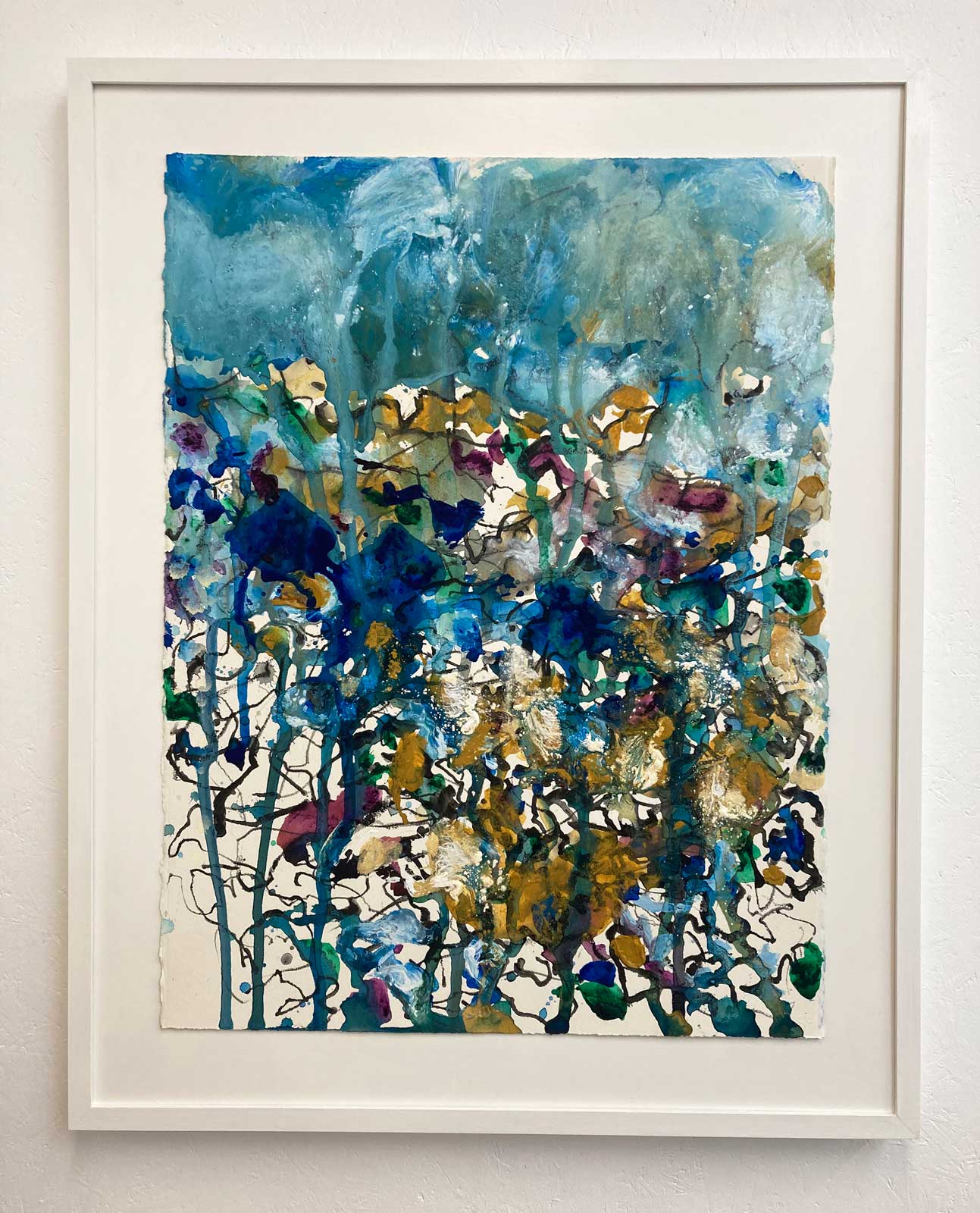
Gallan Head Landscape (Framed)
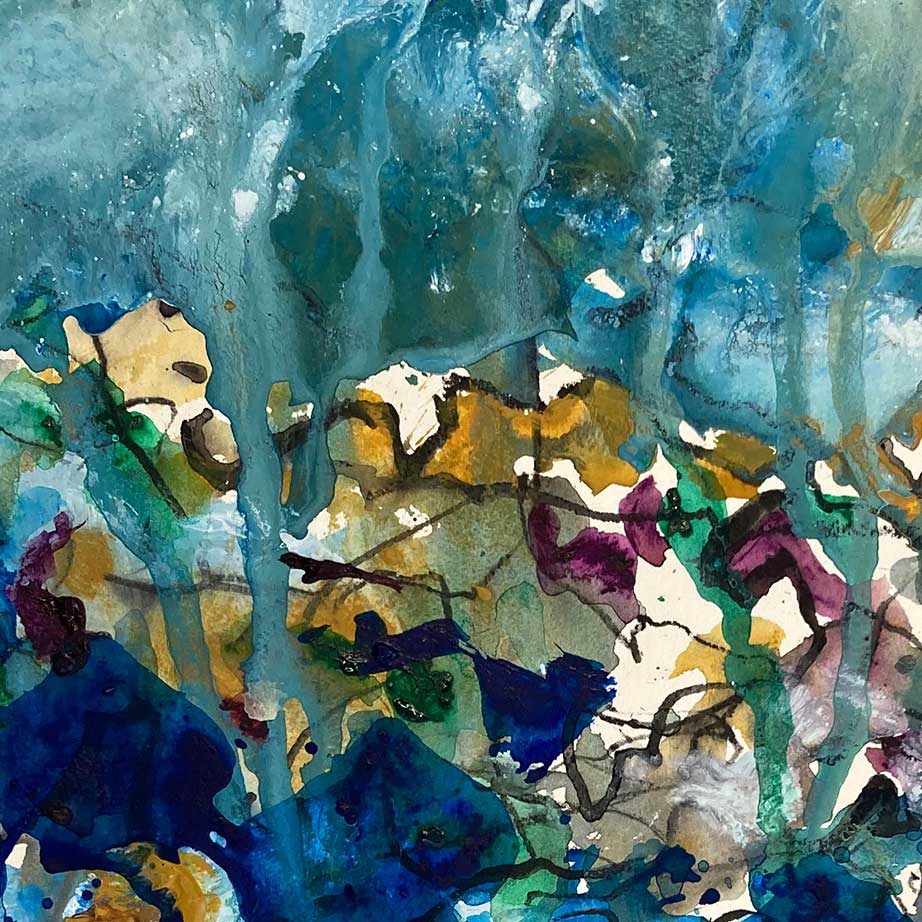
Gallan Head Landscape (Detail)
Gallan Head Landscape
David Knight
Acrylic, Graphite Stick, Suanders Waterford Paper.
Dimensions: H:76 x W:58(cm)
Framed: H:93 x W:74(cm)
Initial drawn marks observed from the landscape are used as a structure for the paint to run and flow across just as rain and water does as it erodes the landscape. The water-soluble graphite used to produce the initial drawing softens and melts as it reacts with the wet paint suggesting the process of erosion and how the solid ground is carved out by water. There is a sense in the painting the sky is invading the landscape implying a natural synergy between land and sky. When standing within the Gallan Head landscape there is a powerful sense the landscape is being thrust up into the sky and the sea. Within the painting I’m suggesting how the tangible landscape becomes broken down by the more ephemeral elements.
"We were already familiar with Gallan Head from previous visits to the Isle of Lewis and both of us particularly liked the gritty, mysterious, remoteness of the landscape, which dramatically towered out towards the Atlantic Ocean. This piece of land, previously owned by the MOD and used for surveillance during the ‘cold war’ period, has a wonderful eerie sense of abandonment, where nature has, inevitably, and rightly, claimed the landscape back. (Perhaps those neglected, collapsing, MOD buildings also suggested a familiar element of industrial abandonment, perhaps they were also echoing and connecting with those empty abandoned textiles buildings and mills dotted around the West Riding of Yorkshire moorland, these are symbols of abandonment extremely familiar to both of us).
The empty buildings, almost comically futile in the way they hug the landscape, including large blocks of concrete used to anchor an enormous satellite dish, now left almost rolling around the landscape, act as evidence of human activity, but now completely exposed, weathered and corroded by the extremely harsh weather conditions. It was this human/nature juxtaposition that particularly interested us, how the wind, rain, the elements had inevitably taken over and constantly reshaping and reforming the landscape. "
Whilst the work produced at Gallan Head formed the initial ideas for the ‘Edge of Sight’ exhibition at an Lanntair in 2018, the idea of all-encompassing nature constantly forming and changing the landscape has remained an underlying theme with the work of both David and Margaret since living and working full time on the Isle of Lewis.
Gallan Head January Downpour
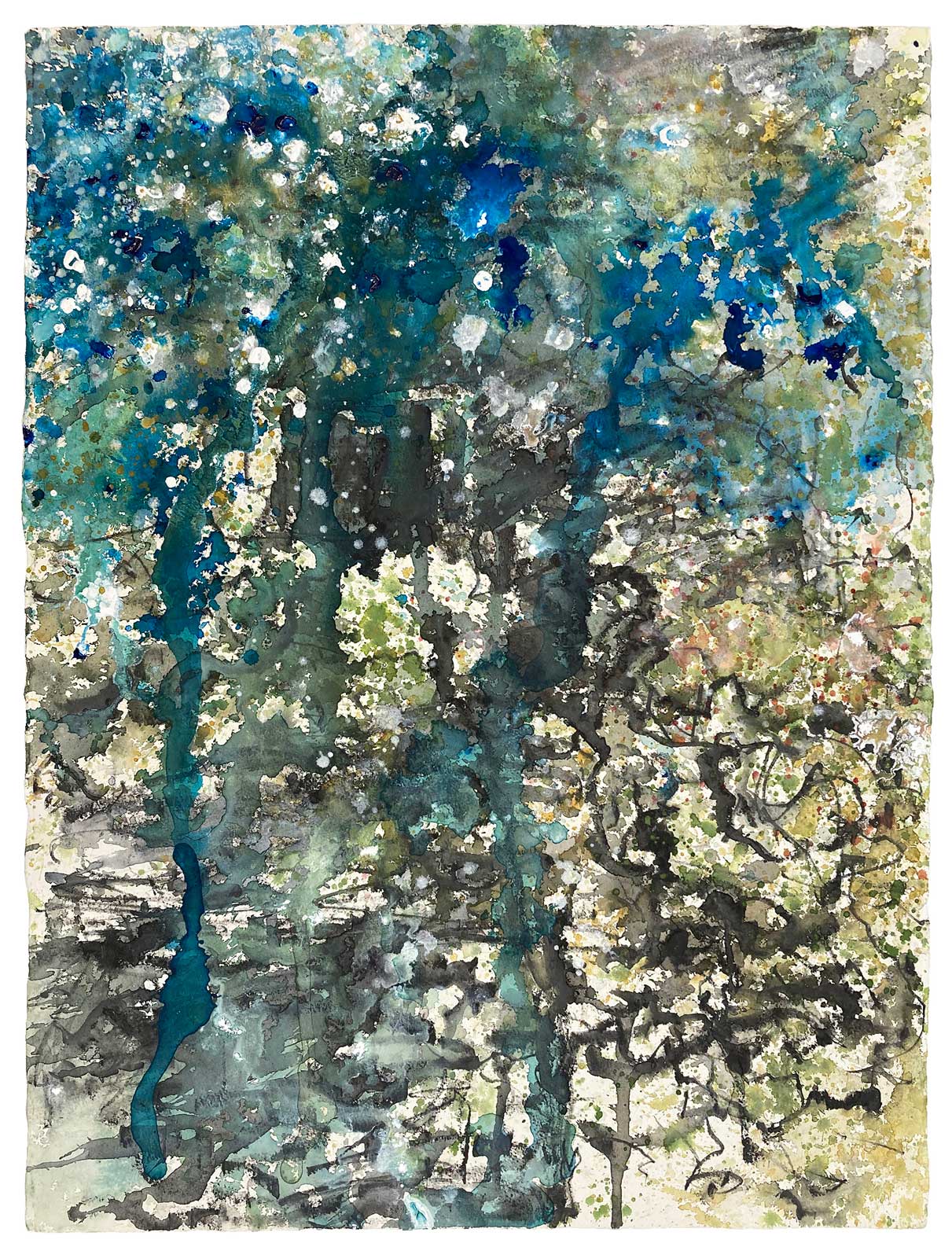
Gallan Head January Downpour
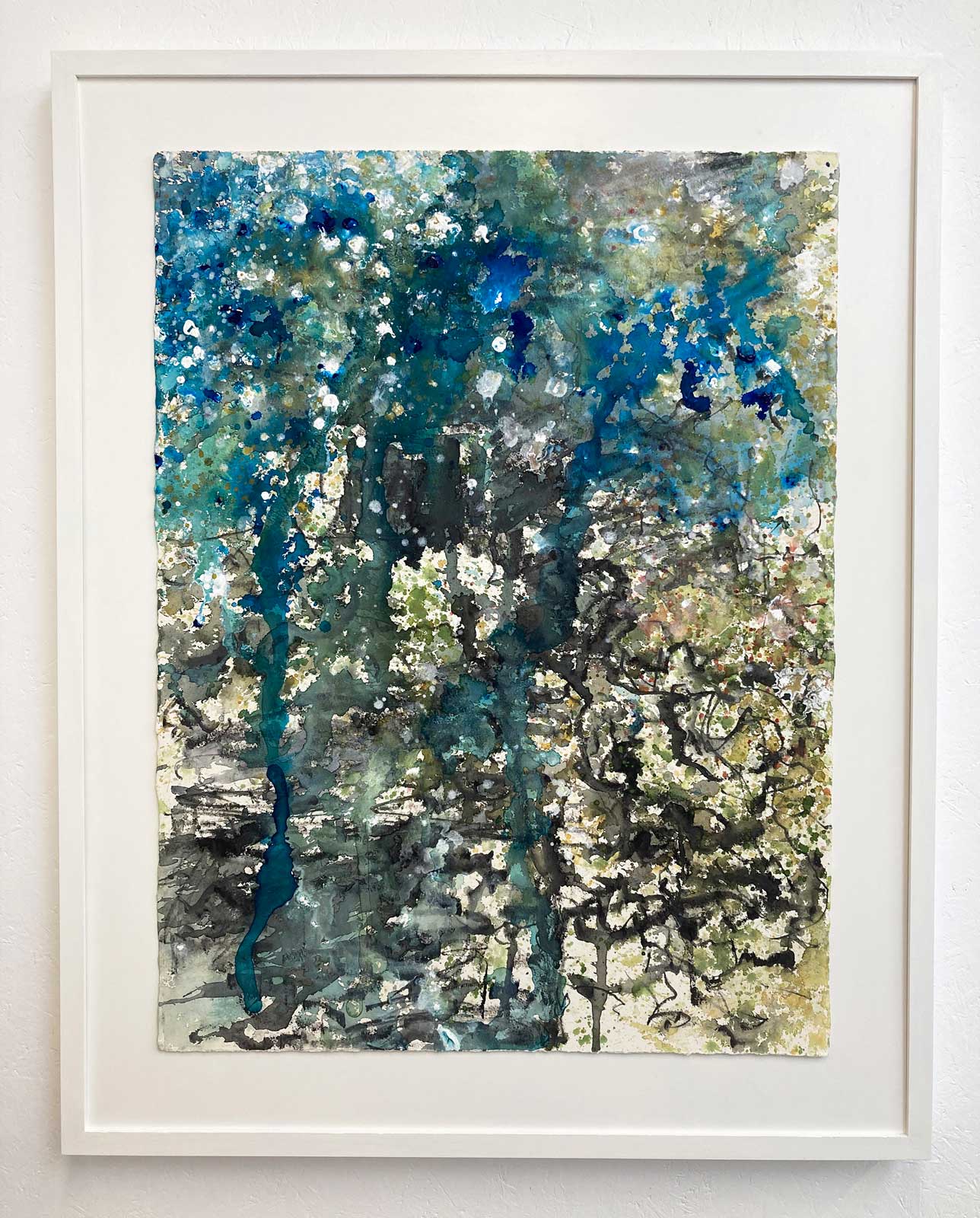
Gallan Head January Downpour (Framed)
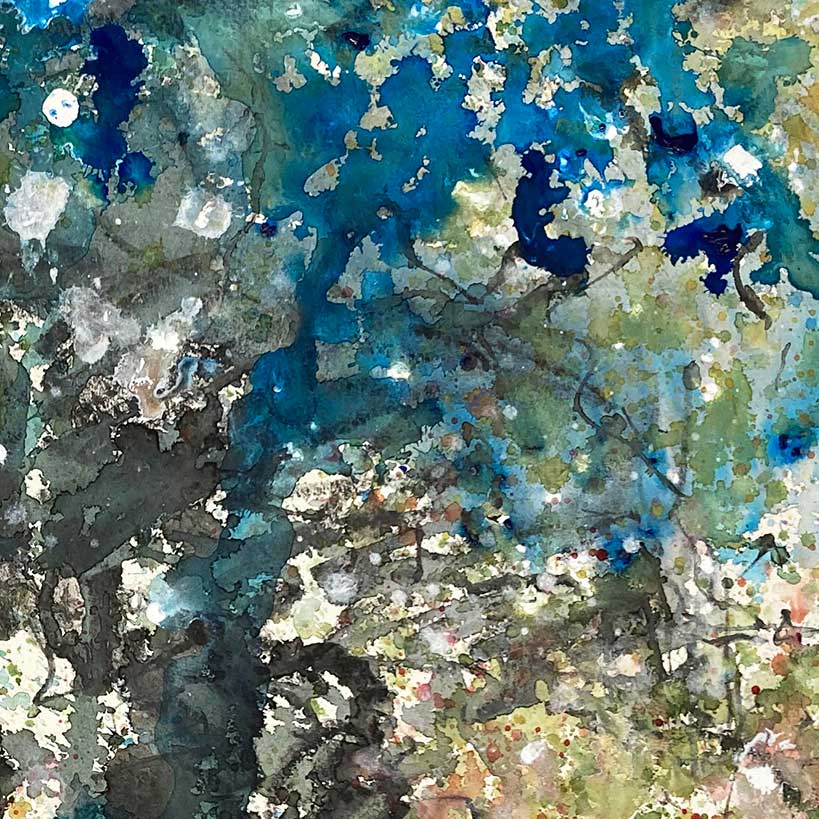
Gallan Head January Downpour (Detail)
Gallan Head January Downpour
David Knight
Acrylic, Watercolour, Graphite Stick, Saunders Waterford Paper.
Dimensions: H:76 x W:58(cm)
Framed: H:93 x W:74(cm)
Here the tangible has become completely lost and diffused by the elements - the atmosphere has completely broken the landscape down. I’m interested in how the solid landscape becomes something indefinable, something unexplained, something mysterious and not understandable. I like the suggestion within the painting that things are ever shifting and moving and cannot be pinned down. I want there to be a tension between the paint and how it suggests atmosphere, how paint can suggest something that is meant to be solid but isn’t.
During the summer of 2017 and January 2018 Margaret Uttley and David Knight began producing a body of drawings and paintings at Gallan Head, Isle of Lewis, Outer Hebrides, the most north westerly point of the UK. These drawings and paintings, produced on location, formed the basis of a major joint exhibition ‘Edge of Sight’, held during the summer 2018 at the Arts Centre an Lanntair, Stornoway. This was one year before Maragret and David moved to the Isle of Lewis to live and work full time, and set up their studio at Cliff, just a short drive away from Gallan Head.
"We were already familiar with Gallan Head from previous visits to the Isle of Lewis and both of us particularly liked the gritty, mysterious, remoteness of the landscape, which dramatically towered out towards the Atlantic Ocean. This piece of land, previously owned by the MOD and used for surveillance during the ‘cold war’ period, has a wonderful eerie sense of abandonment, where nature has, inevitably, and rightly, claimed the landscape back. (Perhaps those neglected, collapsing, MOD buildings also suggested a familiar element of industrial abandonment, perhaps they were also echoing and connecting with those empty abandoned textiles buildings and mills dotted around the West Riding of Yorkshire moorland, these are symbols of abandonment extremely familiar to both of us).
The empty buildings, almost comically futile in the way they hug the landscape, including large blocks of concrete used to anchor an enormous satellite dish, now left almost rolling around the landscape, act as evidence of human activity, but now completely exposed, weathered and corroded by the extremely harsh weather conditions. It was this human/nature juxtaposition that particularly interested us, how the wind, rain, the elements had inevitably taken over and constantly reshaping and reforming the landscape. "
Whilst the work produced at Gallan Head formed the initial ideas for the ‘Edge of Sight’ exhibition at an Lanntair in 2018, the idea of all-encompassing nature constantly forming and changing the landscape has remained an underlying theme with the work of both David and Margaret since living and working full time on the Isle of Lewis.
Bunker
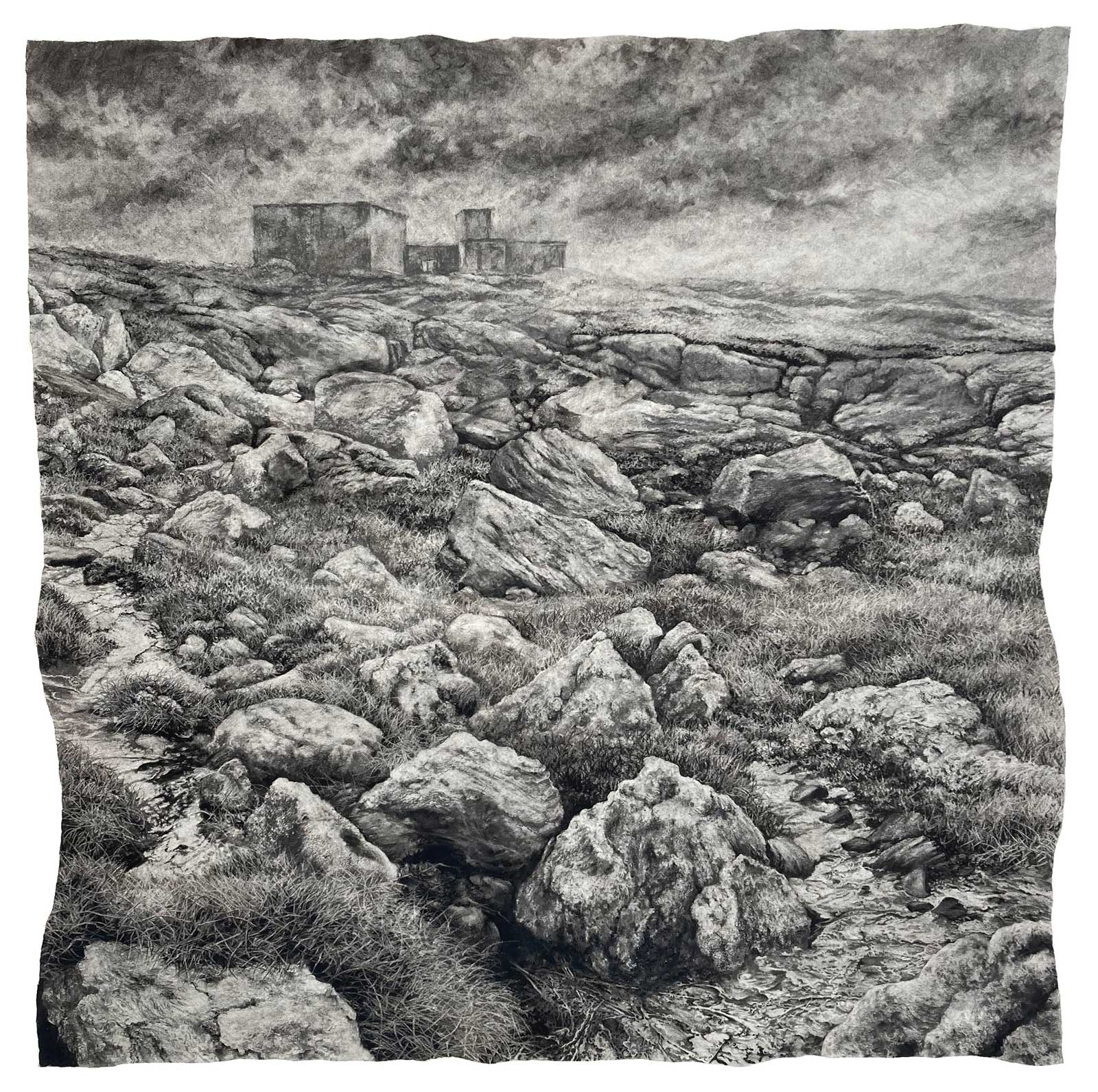
Bunker
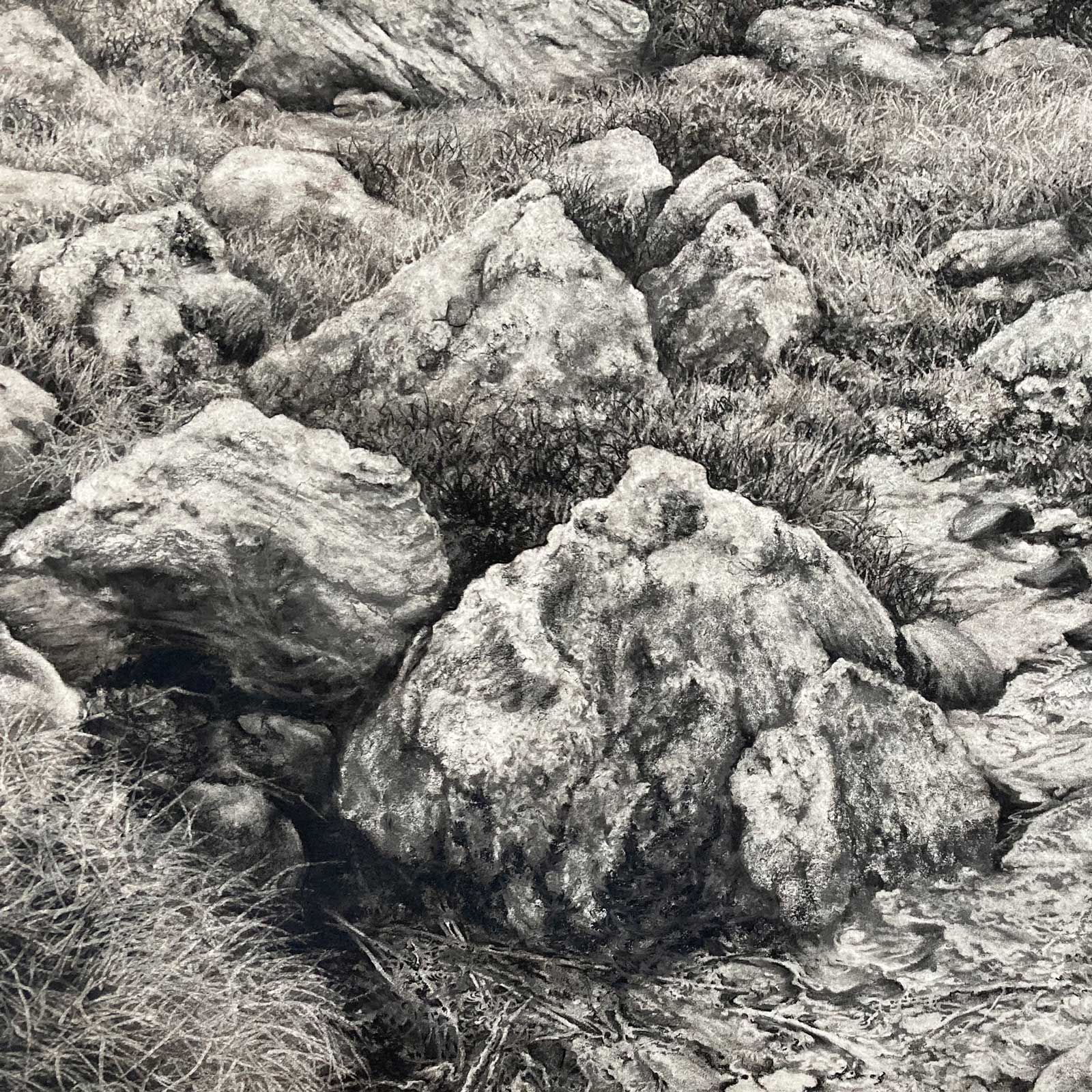
Bunker (Detail)
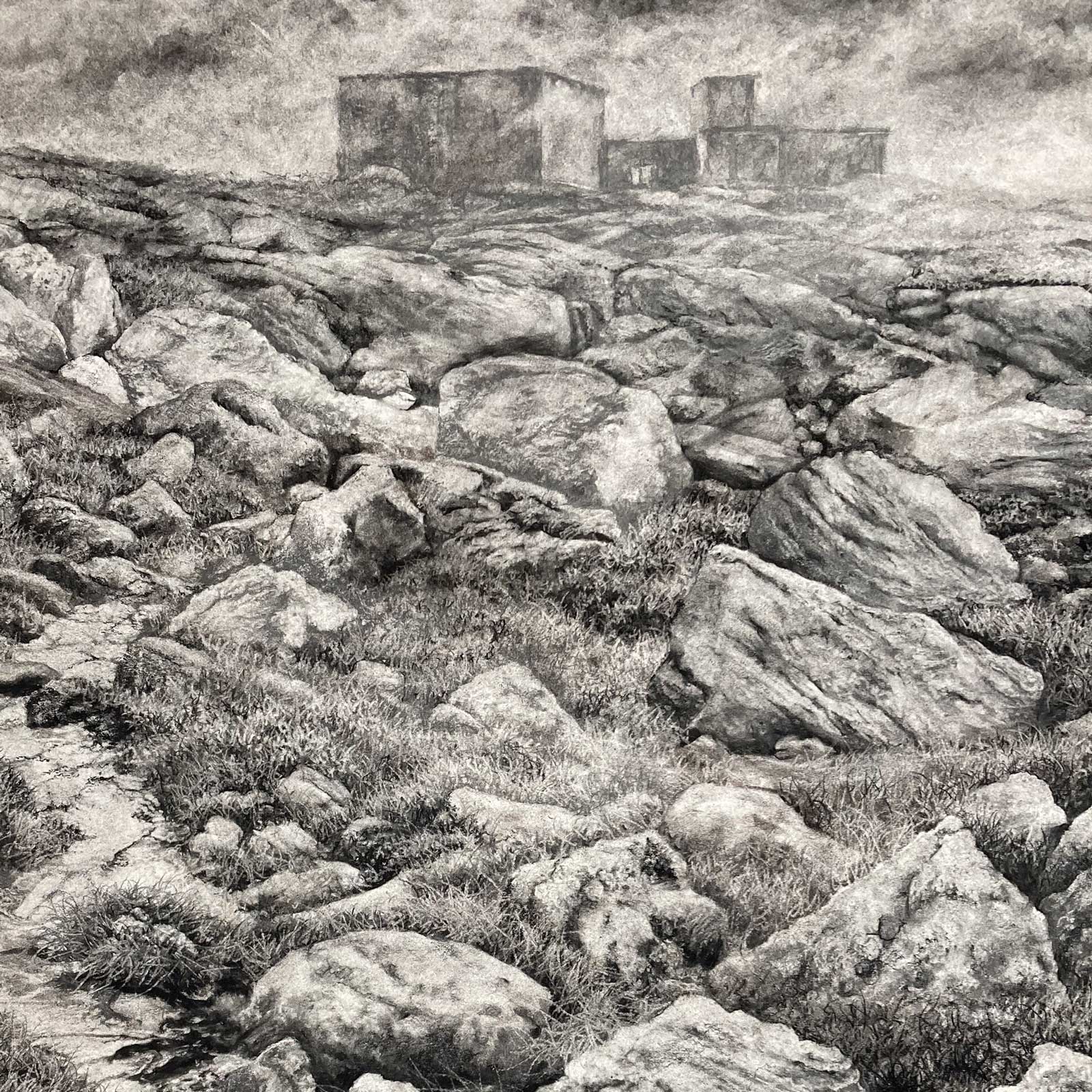
Bunker (Detail)
Bunker
Margaret Uttley
Charcoal, Graphite, Arches Hotpress Paper.
During the summer of 2017 and January 2018 Margaret Uttley and David Knight began producing a body of drawings and paintings at Gallan Head, Isle of Lewis, Outer Hebrides, the most north westerly point of the UK. These drawings and paintings, produced on location, formed the basis of a major joint exhibition ‘Edge of Sight’, held during the summer 2018 at the Arts Centre an Lanntair, Stornoway. This was one year before Maragret and David moved to the Isle of Lewis to live and work full time, and set up their studio at Cliff, just a short drive away from Gallan Head.
"We were already familiar with Gallan Head from previous visits to the Isle of Lewis and both of us particularly liked the gritty, mysterious, remoteness of the landscape, which dramatically towered out towards the Atlantic Ocean. This piece of land, previously owned by the MOD and used for surveillance during the ‘cold war’ period, has a wonderful eerie sense of abandonment, where nature has, inevitably, and rightly, claimed the landscape back. (Perhaps those neglected, collapsing, MOD buildings also suggested a familiar element of industrial abandonment, perhaps they were also echoing and connecting with those empty abandoned textiles buildings and mills dotted around the West Riding of Yorkshire moorland, these are symbols of abandonment extremely familiar to both of us).
The empty buildings, almost comically futile in the way they hug the landscape, including large blocks of concrete used to anchor an enormous satellite dish, now left almost rolling around the landscape, act as evidence of human activity, but now completely exposed, weathered and corroded by the extremely harsh weather conditions. It was this human/nature juxtaposition that particularly interested us, how the wind, rain, the elements had inevitably taken over and constantly reshaping and reforming the landscape. "
Whilst the work produced at Gallan Head formed the initial ideas for the ‘Edge of Sight’ exhibition at an Lanntair in 2018, the idea of all-encompassing nature constantly forming and changing the landscape has remained an underlying theme with the work of both David and Margaret since living and working full time on the Isle of Lewis.
Clann Adhaimh (Adam's Clan)
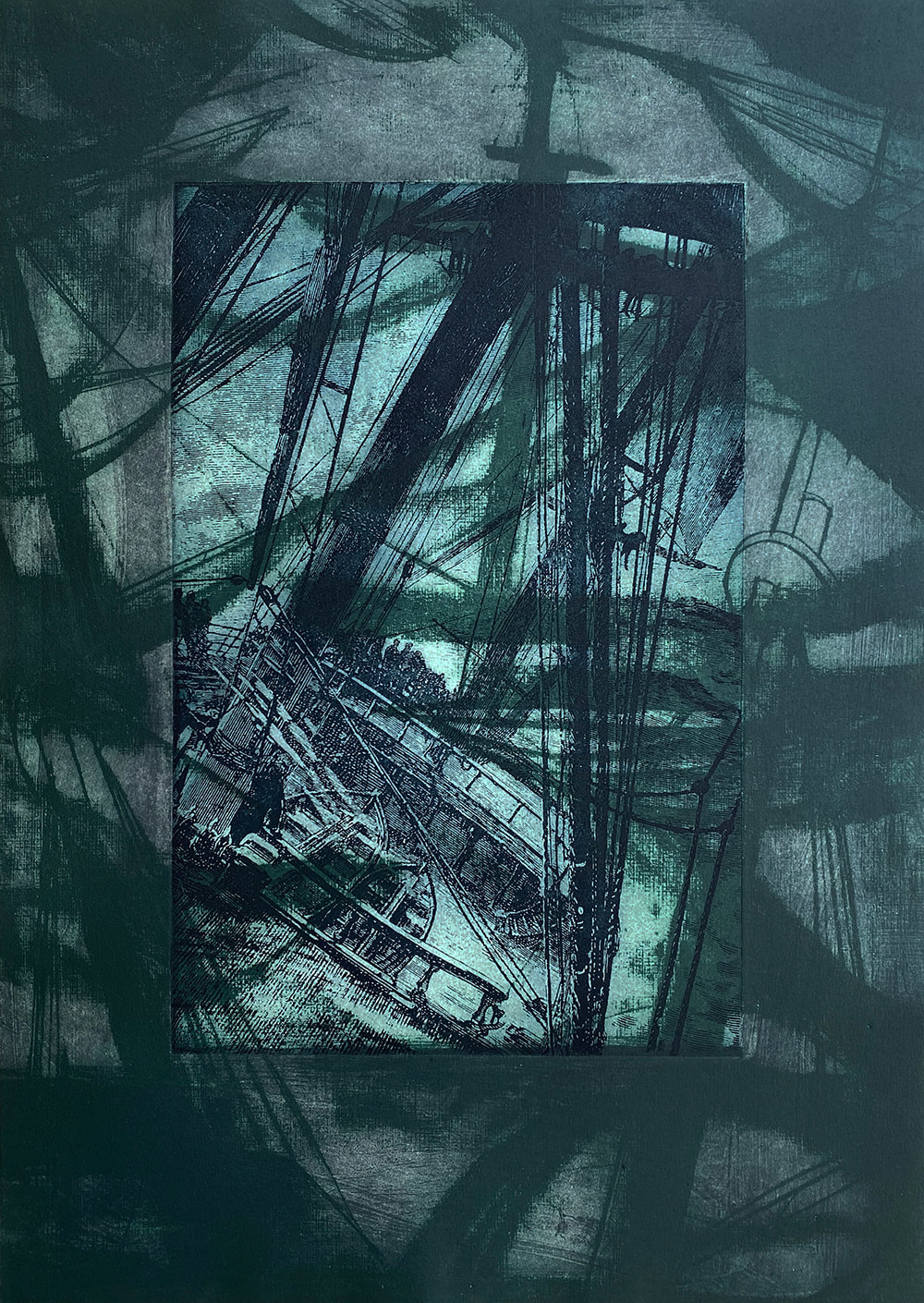
Clann Adhaimh (Adam's Clan)
Clann Adhaimh (Adam's Clan)
Will Maclean RSA
Dimensions: H:75 x W:54(cm)
Siud bàrca beag le antrom gaoithe sìorraidh
’na siùil chaithe, a’dìreadh cuain gun chòrsa,
’s I leatha fhèin an cearcall cian na fàire,
is gul is gàireachdaich triomh chèil’ air bòrd dhith.
Tha Bròn, Aoibh, Aois is Òige, Sàr is Suarach
a’ tarraing nam ball buan a tha ri ‘brèidibh;
tha Amaideas is Gliocas, Naomh is Peacach
air a stiùir mu seach is càch gan èisteachd.
Fo speur tha uair grianach, uair sgreunach,
-clais is cìrein – fèath is doineann – thèid i,
gu fàire nach do leum saidh riamh no sùilean,
’s a lorg ’s a h-ùpraid ghuth ’dol bàs ’na dèidh-se.
Ceangal
Siud i is brù air a siùil ’s i ‘deuchainn gach sgòid,
long àrsaidh le sunnd is sùrd is lèireadh air bòrd;
fàire làn rùn nach do rùisgeadh fo cheann a croinn speòid,
is cop uisge a stiùrach a’ dùnadh ’ga chall sa mhuir mhòir.
Yonder sails a little bark, with the grievous burden of an eternal wind
on her worn sails, climbing and ocean that has no coast,
alone within the distant circle of the horizon,
with a confusion of weeping and laughter aboard her.
Grief, Joy, Age and Youth, Eminent and Of-No-Account
are heaving at the everlasting gear that trims her canvas;
Folly and Wisdom, Saint and Sinner
take her helm in turn, and all obey them.
Under a sky now sunny, now lowering
-trough and crest- calm and tempest- she goes on
to a horizon that neither stem nor eye yet overleapt,
and her track and her tumult of voices die astern of her.
Envoi
There she goes with a curve on her sails,
putting each sheet to the test,
an ancient ship with bustle and cheer and suffering aboard her,
a horizon full of secrets unrevealed under her bowsprit head,
and the foam of her wake closing and losing itself in the great sea astern.
Inspired by ‘Clann Àdhaimh’ a haunting poem on the condition of humanity by Deòrsa Mac Iain Dheòrsa (George Campbell Hay) written c.1945. In the etching Maclean gives us a glimpse of the boat tossed about on the seas, as if through the veil of rigging, flapping sails and sea spray. This ship is a metaphor for the Gaelic language and culture.
Maclean’s extensive knowledge of rigging and the sea is conveyed through the superb draughtsmanship of this image and relates back to his time at sea as a merchant sailor and fisherman.
Iasg an Righ (The King's Fish)
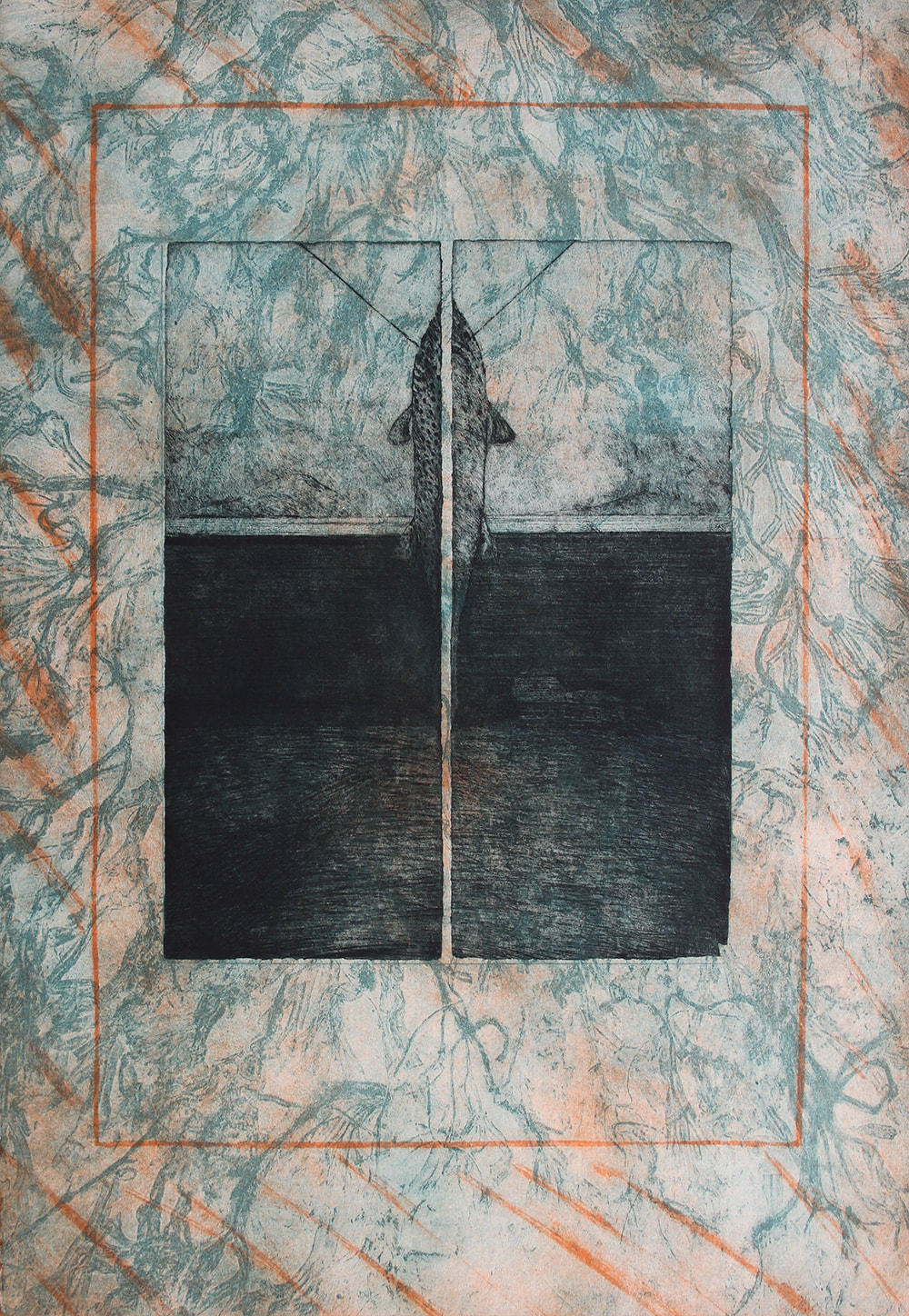
Iasg an Righ (The King's Fish)
Iasg an Righ (The King's Fish)
Will Maclean RSA
Dimensions: H:75 x W:54(cm)
The King's Fish
This etching is inspired by a traditional Gaelic poem ‘Iasg an Righ’ which tells of a fishing trip in which both the Viking and Irish king hook the same dogfish at the same time and so quarrel over ownership of the fish – possibly a metaphor for the battles for ownership of the Western Isles, the Isle of Man and Ireland. Will Maclean has cleaved the etching plate in two to symbolise the acrimony. Seaweed has been imprinted into the border to extend the marine theme.
Marbhrann do Chaiptean Fearghustan (Elegy to Captain Ferguson)

Marbhrann do Chaiptean Fearghustan (Elegy to Captain Ferguson)
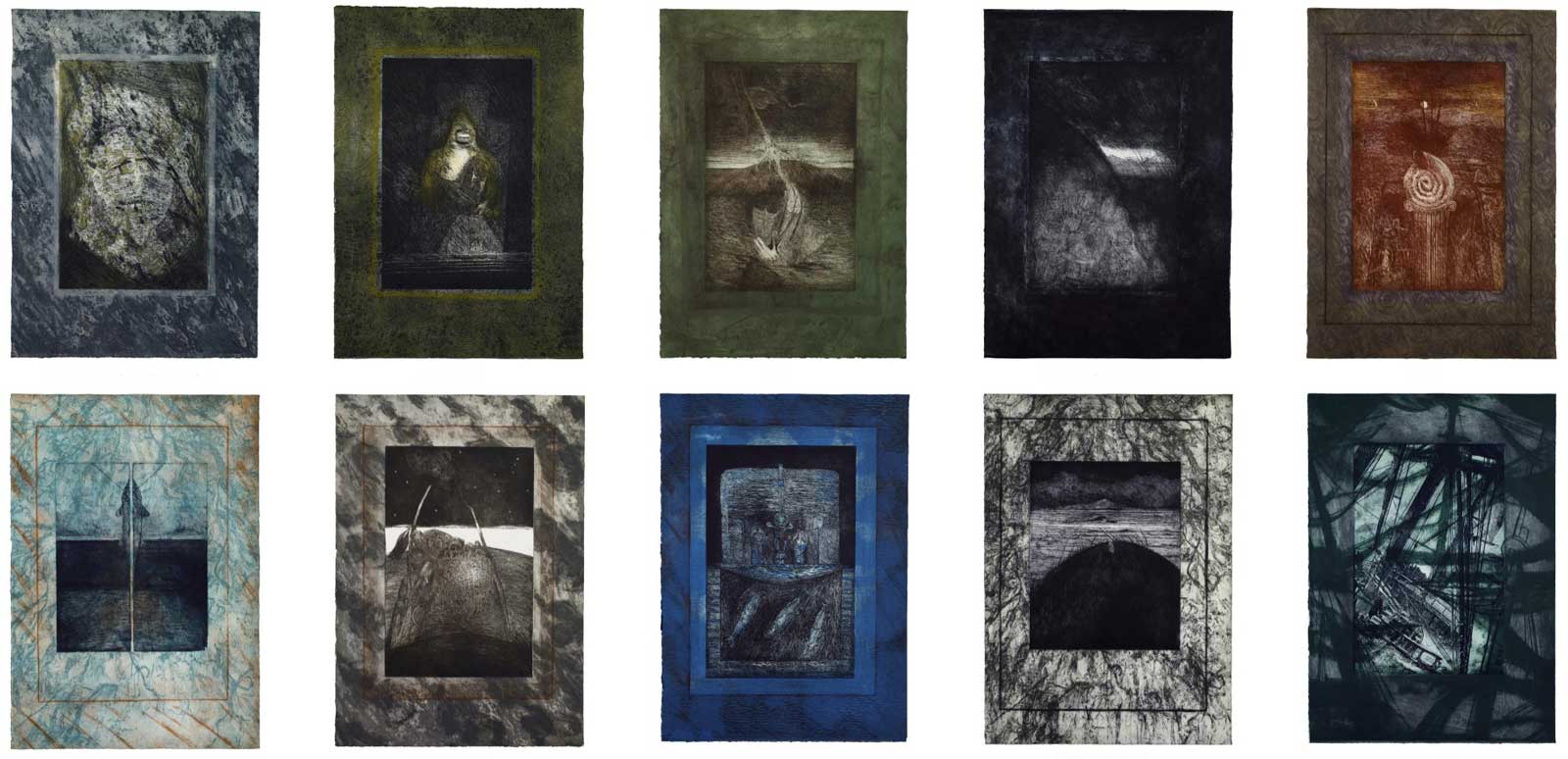
A Night of Islands, collection of 10 etchings.
Marbhrann do Chaiptean Fearghustan (Elegy to Captain Ferguson)
Will Maclean RSA
Dimensions: H:75 x W:54(cm)
Elegy to Captain Ferguson
Captain Ferguson was a notorious Hanovarian naval officer, originally from Scotland, who brutally supressed the Highland people after the Battle of Culloden in 1746. The poem in Gaelic ‘Marbhrann do Chaiptean Fearghuston’ by Iain Mac Fhearchair (John MacCodrum), an eighteenth-century bard from Uist, tells of the rumour of the death of Captain Ferguson by drowning, which unfortunately proved to be false. Will Maclean’s etching shows the five mountains which narrate the poem and the face of the drowned Ferguson with an upturned ship as his mouth.
Full Moon and White Fish / Loch Shell
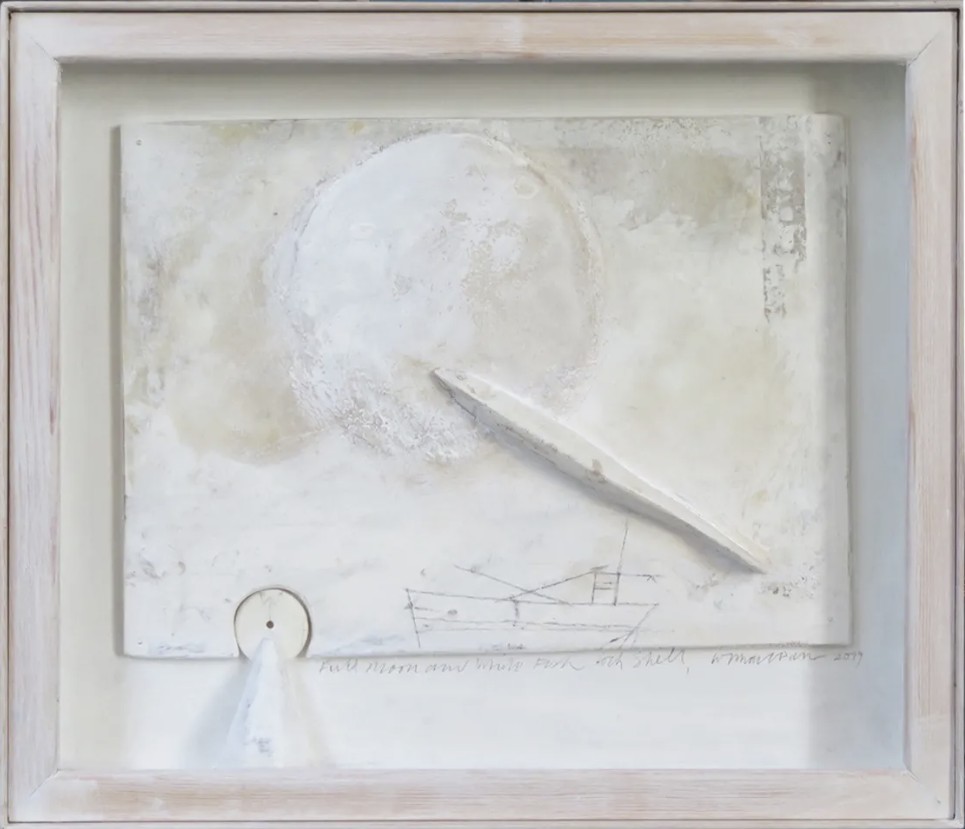
Full Moon and White Fish / Loch Shell
Full Moon and White Fish / Loch Shell
Will Maclean RSA
Mixed Media and found objects
Dimensions: H:35 x W:41 x D:5(cm)
This work references the artists time as a ring net fisherman in the 1960’s on the east coast of Lewis. Fond memories of fishing with traditional methods now lost, but later documented in The Ring Net project.
“Between 1973 and 1978 Scottish visual artist Will Maclean developed The Ring Net, a detailed documentation of a method of herring fishing, largely conducted by two boats working together. The ring net method originated in Loch Fyne in the 1830s and, although resisted by drift netters, spread extensively on the West Coast of Scotland, on the North Sea Coast and elsewhere, coming to an end with the wide scale adoption of purse seining, pelagic trawling and the herring population collapses of the 1970s. The documentation, which was developed alongside that of Angus Martin, who wrote The Ring Net Fishermen (1981), is focused on Loch Fyne and on Skye, with whose fishermen Maclean was more personally connected.
A list of works from Glasgow’s Third Eye Centre, where The Ring Net was first exhibited in January 1978, includes over 250 photographs, nearly 70 drawings and well over 30 prints and tracings. The originality and artistic significance it holds as a body of work finds its focus in the drawings. The exhibition is held by Scotland’s National Gallery of Contemporary Art.”
Text from RIGBY’S ENCYCLOPAEDIA OF THE HERRING aka The Herripedia.
An interview with Scottish artist Will Maclean on his documentary exhibition, The Ring Net, which he developed between 1973 and 1978
Temple
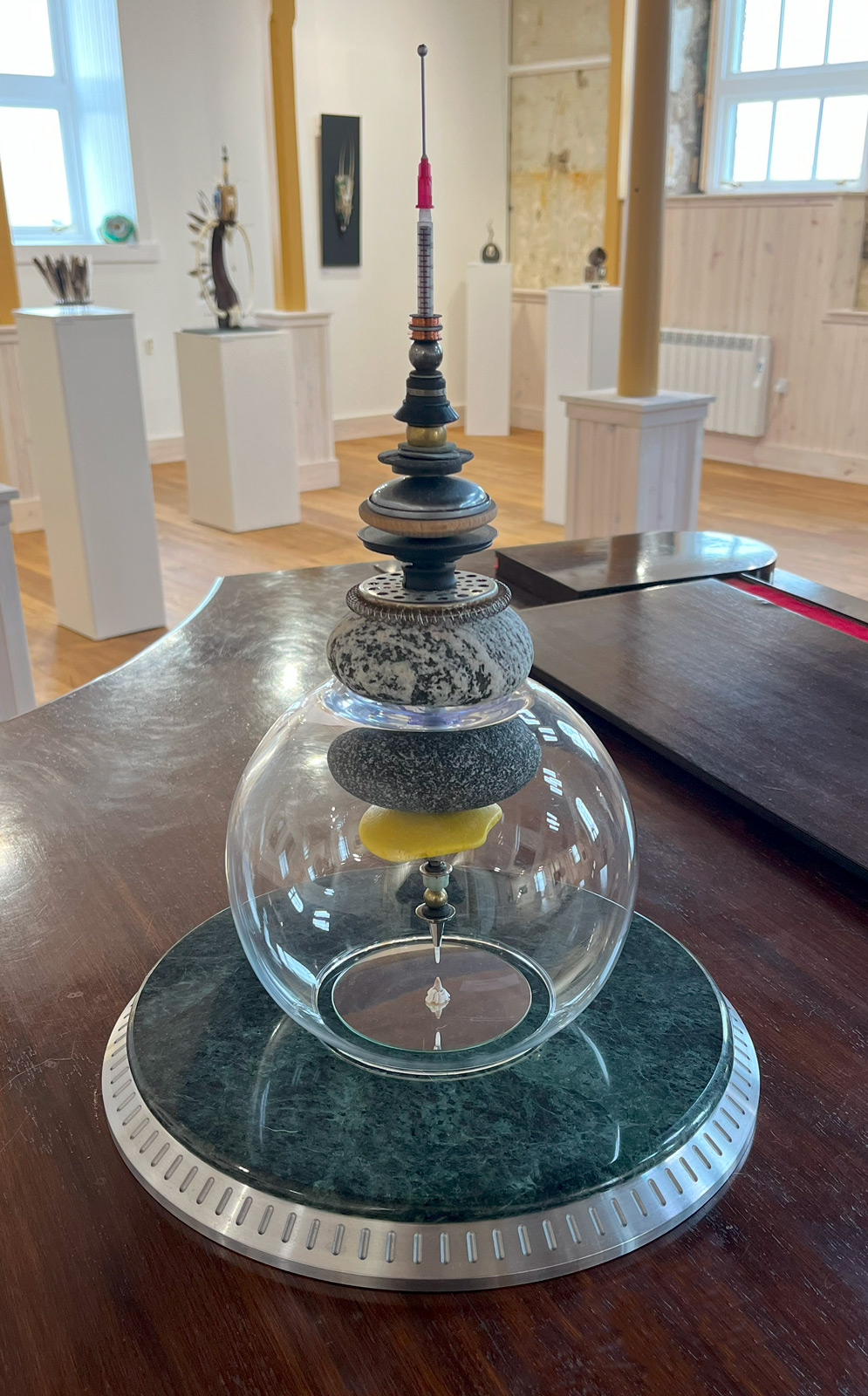
Temple
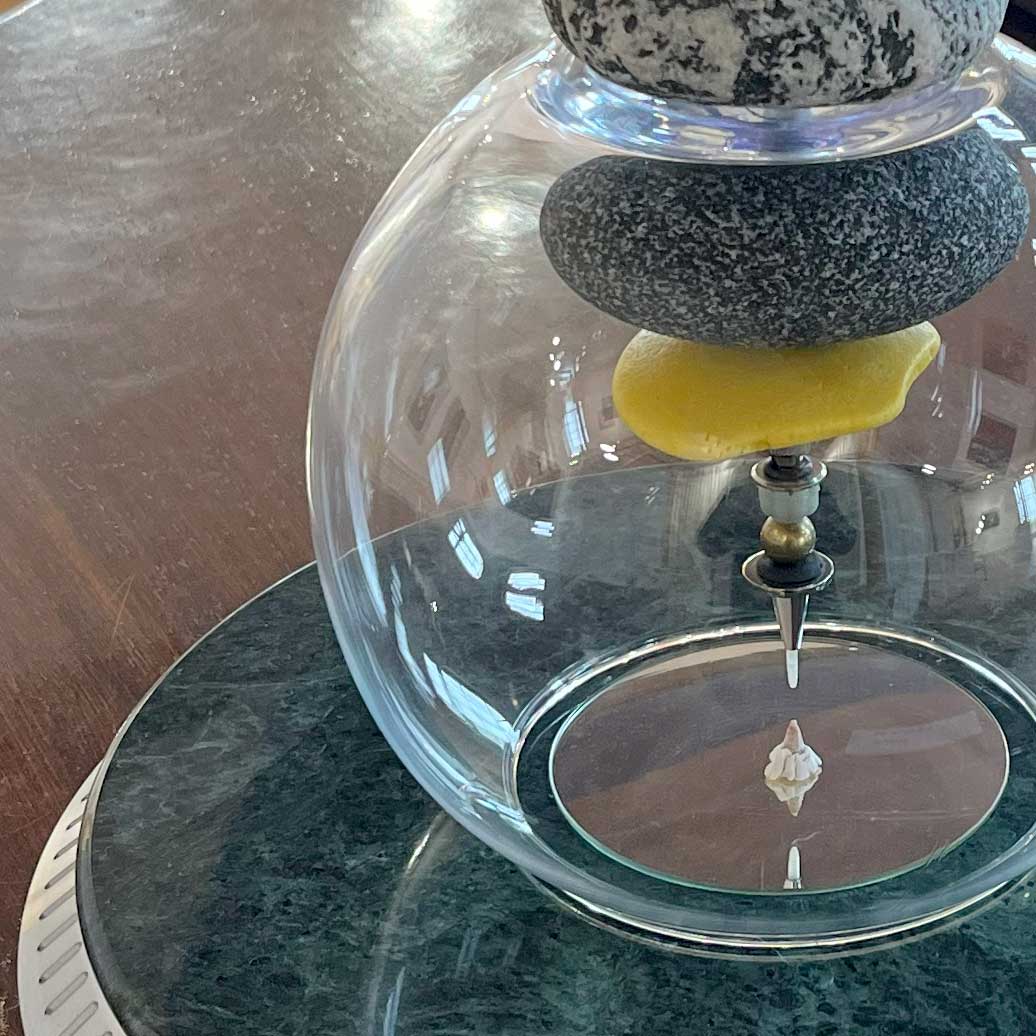
Temple (Detail)
Temple
Johnathan Bell
Found objects
One of the most popular works. "People identify with the identifiable."
Johnathan's Temple is his work with the most domestic waste. The cafetiere filter, the washers, the coaxial connector etc. are all immediately recognised, providing a comforting familiarity. More is revealed, the shaving foam canister base, sometimes viewers gasp! The artist is amazed that repurposing and recycling in itself can cause such a reaction.
Temple is a very personal work, relating to many aspects of the artists past. The turntable platter, technology, domestic waste, fishing industry waste etc. All relating to his past hedonism, self destructive nature, his consumerism, and earlier disconnection from nature.
"Temple is a transmitter and receiver. A prayer, sent, received and answered."
A deep self searching was required to find inner peace and joy. This work has helped the artist to reconnect, bringing nature back into his soul.
"Everything external is temporary and conditional. I had to look within to find inner peace and joy."
The Bethesda fish bowl defines his outer and inner states of being. The barnacle and shell on the mirror represent nature returning within and his joy mirrored back to the universe. The 'inner state' is home!
Donald Macphail (Domhnall Beag) 11 Borrowston, Age 44*
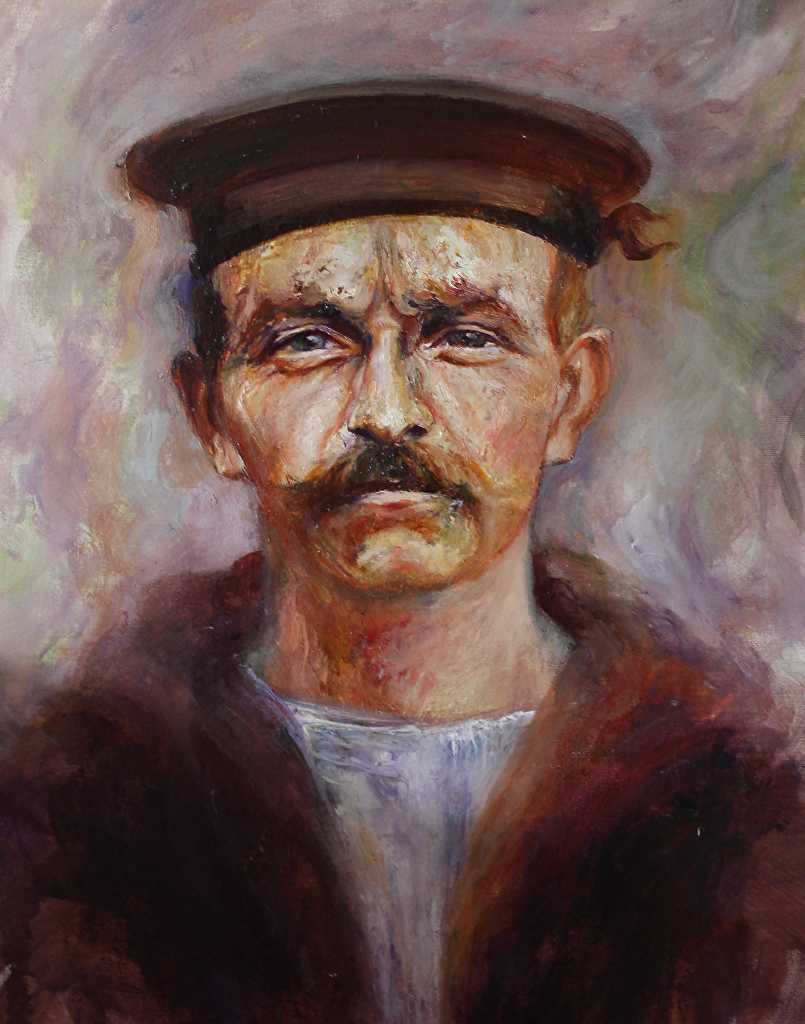
Donald Macphail (Domhnall Beag) 11 Borrowston, Age 44*
Donald Macphail (Domhnall Beag) 11 Borrowston, Age 44*
Margaret Ferguson
Oil on canvas
*Kindly loaned to the Hulabhaig Collection by the artist.
Donald Macphail (Dòmhnall Beag)
Born 5th December 1874. Age 44.
11 Borrowston. Seaman RNR.
Service number 222Z/D. LWM 1/LWM 10
The son of Donald and Marion Macphail (née Macleod), Donald was married to Mary, [née Mackay) and they had five children. Naval records give his birth date as January 1874. Donald had enrolled in the RNR on 29th March 1899 and had nearly 20 years service. He reported to HMS Pembroke from Peterhead via Stornoway, on 14th August 1914, and eight months later joined the aircraft carrier HMS Campania, staying with her until she was sunk in a collision on 6th November 1918. Donald left the Chatham barracks at HMS Pembroke for his first New Year of peacetime and never reached his home.
He was interred at Dalmore Cemetery (WG].
Source: The Darkest Dawn, Malcolm Macdonald and Donald John Macleod
—————
On New Years eve 1918, sailors who had survived the carnage of WW1 gathered in Kyle of Lochalsh, desperate to return to their loving families. Many went aboard the yacht 'Iolaire', others boarded the 'Sheila'
During the passage of the Iolaire from Kyle to Stornoway the yacht took the wrong course. At 1.55am, within a mile of the harbour and with the lights of home visible, she grounded on infamous rocks called the Beasts of Holm. 201 were lost; 79 survived of whom half came ashore on a rope taken from the ship to shore by hero of the night, John Finlay Macleod.
On 1st January, islanders found the bodies of men lying on the shore amongst scattered toys and presents they were bringing home to their loved ones. Many of the men's bodies were never recovered.
The impact of the disaster was felt throughout the islands. Its effect was profound on the islands. It was little talked about afterwards through trauma and deep grief and is not well known outside the Hebrides.
Margaret's own family was affected, with the loss of a great uncle, Alasdair Mackenzie, 'Am Boican'.
Mass emigration followed, with many islanders never to return home.
Following her experience with "Dol Fodha na Greine" Margaret decided in 2015 to commemorate the sailors who were lost in the 1919 Iolaire disaster. 100 portraits in oils to commemorate the centenary have been completed. The exhibition at An Lanntair arts centre Stornoway ran from 29/12/18 to 2/3/2019.
A selection of paintings was also shown in the Scottish parliament in March 2019 at an event hosted by Dr Alasdair Allan, MSP.
John Alexander Macaskill, Stornoway, aged 19.*
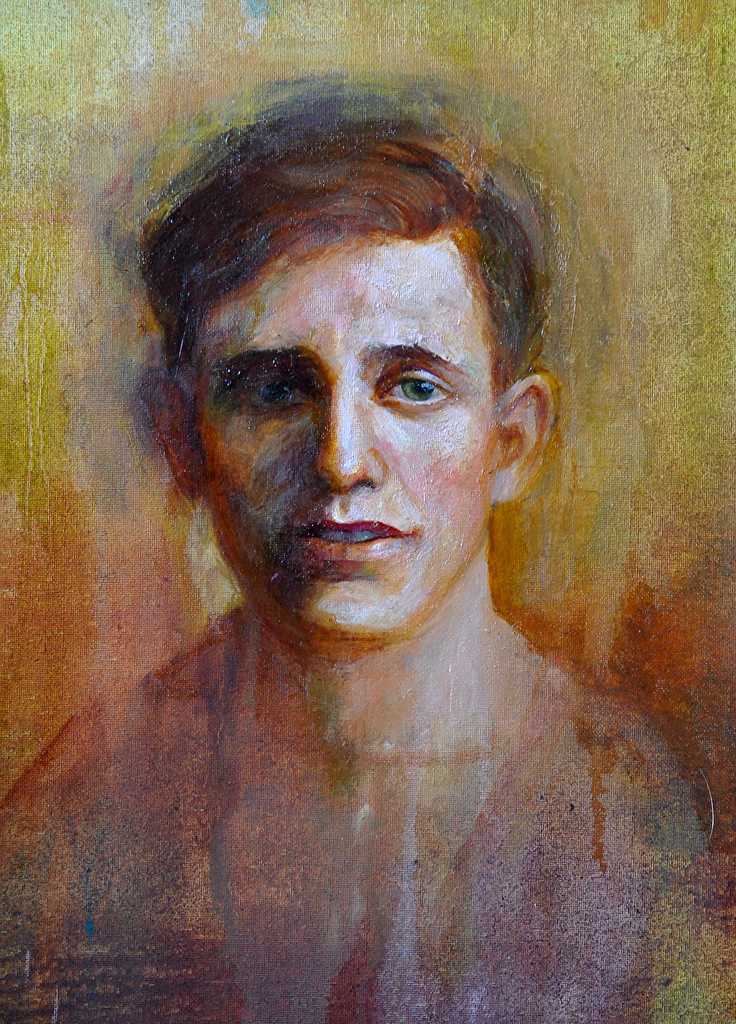
John Alexander Macaskill, Stornoway, aged 19.*
John Alexander Macaskill, Stornoway, aged 19.*
Margaret Ferguson
Oil on canvas
*Kindly loaned to the Hulabhaig Collection by the artist.
John Alexander Macaskill (Jack)
Born 7th March 1899. Age 19.
75 Keith Street. Signalman RNVR.
Service number Z/8453. LWM 1/LWM 9
Born in Liverpool to Hugh and Chrissie "Teens" Macaskill (née Maclean), Jack Macaskill was their only son and had just one sister, Maggie 'Teens'. Jack was well known in the town as a junior clerk in the Harbour Office, from soon after war broke out. He was a member of the Stornoway Boys' Naval Brigade and volunteered his services as soon as he reached an age to enlist. His signalling skills were quickly spotted and he was engaged by the RNVR to serve from 1st April 1917 until the cessation of hostilities. He served at HMS Victory VI, HMS Victory / and HMS Vivid Ill and saw plenty of action, including being torpedoed twice. He left HMS Vivid at Devonport to rejoin his family in Stornoway but was never to see them again. His body was not recovered until late February 1919 and he was then interred at Old Sandwick Cemetery (WG). A memorial tablet to his memory is in St Peter's Church, Stornoway.
Source: The Darkest Dawn, Malcolm Macdonald and Donald John Macleod
—————
On New Years eve 1918, sailors who had survived the carnage of WW1 gathered in Kyle of Lochalsh, desperate to return to their loving families. Many went aboard the yacht 'Iolaire', others boarded the 'Sheila'
During the passage of the Iolaire from Kyle to Stornoway the yacht took the wrong course. At 1.55am, within a mile of the harbour and with the lights of home visible, she grounded on infamous rocks called the Beasts of Holm. 201 were lost; 79 survived of whom half came ashore on a rope taken from the ship to shore by hero of the night, John Finlay Macleod.
On 1st January, islanders found the bodies of men lying on the shore amongst scattered toys and presents they were bringing home to their loved ones. Many of the men's bodies were never recovered.
The impact of the disaster was felt throughout the islands. Its effect was profound on the islands. It was little talked about afterwards through trauma and deep grief and is not well known outside the Hebrides.
Margaret's own family was affected, with the loss of a great uncle, Alasdair Mackenzie, 'Am Boican'.
Mass emigration followed, with many islanders never to return home.
Following her experience with "Dol Fodha na Greine" Margaret decided in 2015 to commemorate the sailors who were lost in the 1919 Iolaire disaster. 100 portraits in oils to commemorate the centenary have been completed. The exhibition at An Lanntair arts centre Stornoway ran from 29/12/18 to 2/3/2019.
A selection of paintings was also shown in the Scottish parliament in March 2019 at an event hosted by Dr Alasdair Allan, MSP.
An Sgeulaiche (The Storyteller)
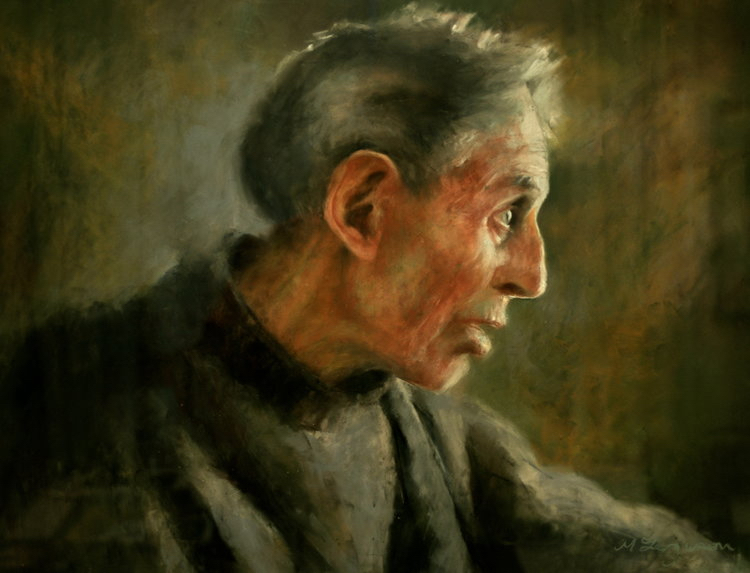
An Sgeulaiche (The Storyteller)
An Sgeulaiche (The Storyteller)
Margaret Ferguson
Unison pastels on sanded board
The storyteller is Duncan Macleod, the eldest of 5 children, with three brothers and a sister . He was brought up in Point, in the village of Garrabost. His mother Annie had little English and mainly conversed in Gaelic.
He was a crofter and an expert historian, with detailed knowledge of the genealogy and history of the district.
A' Coiseachd (Walking)
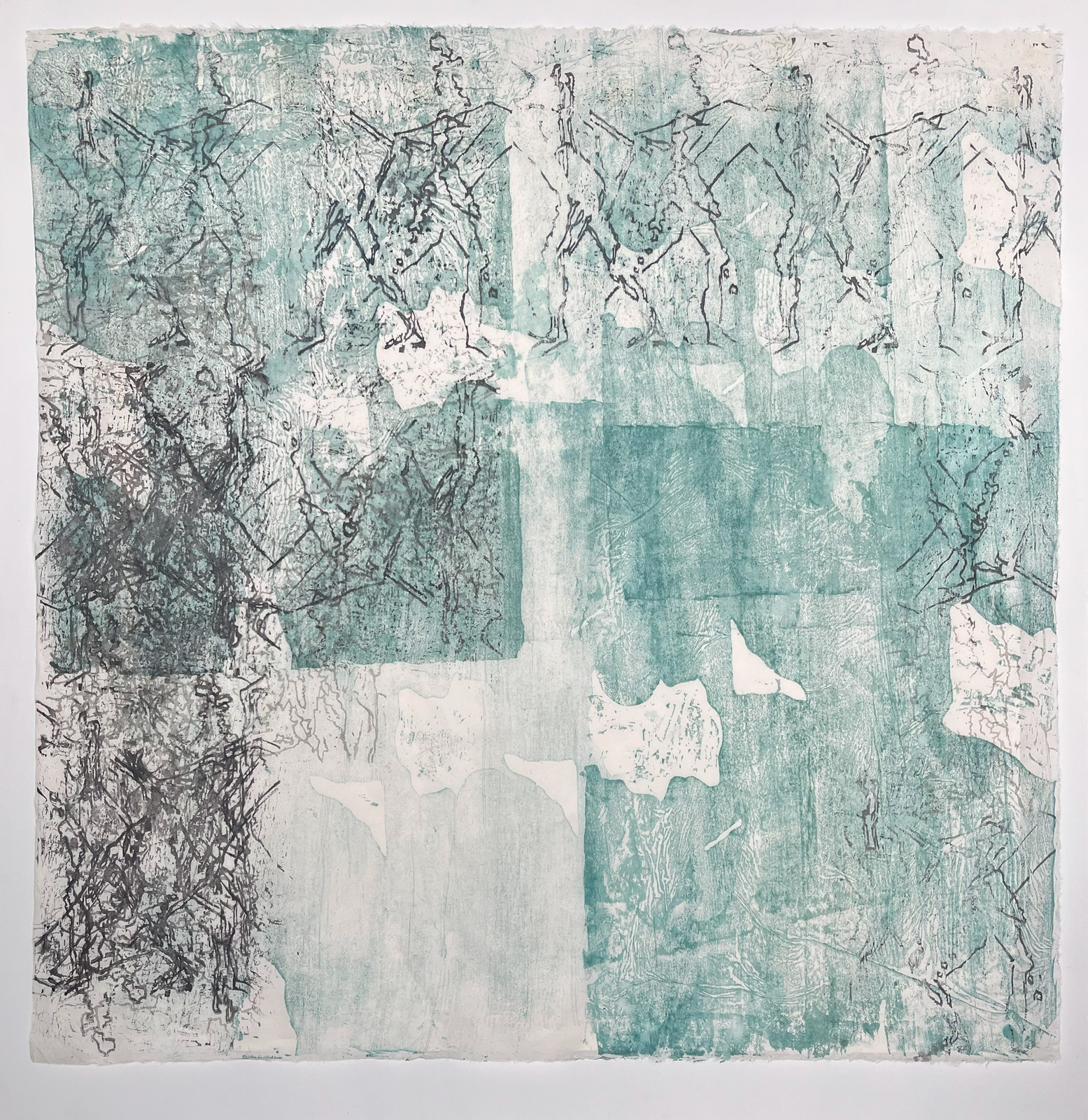
A' Coiseachd (Walking)
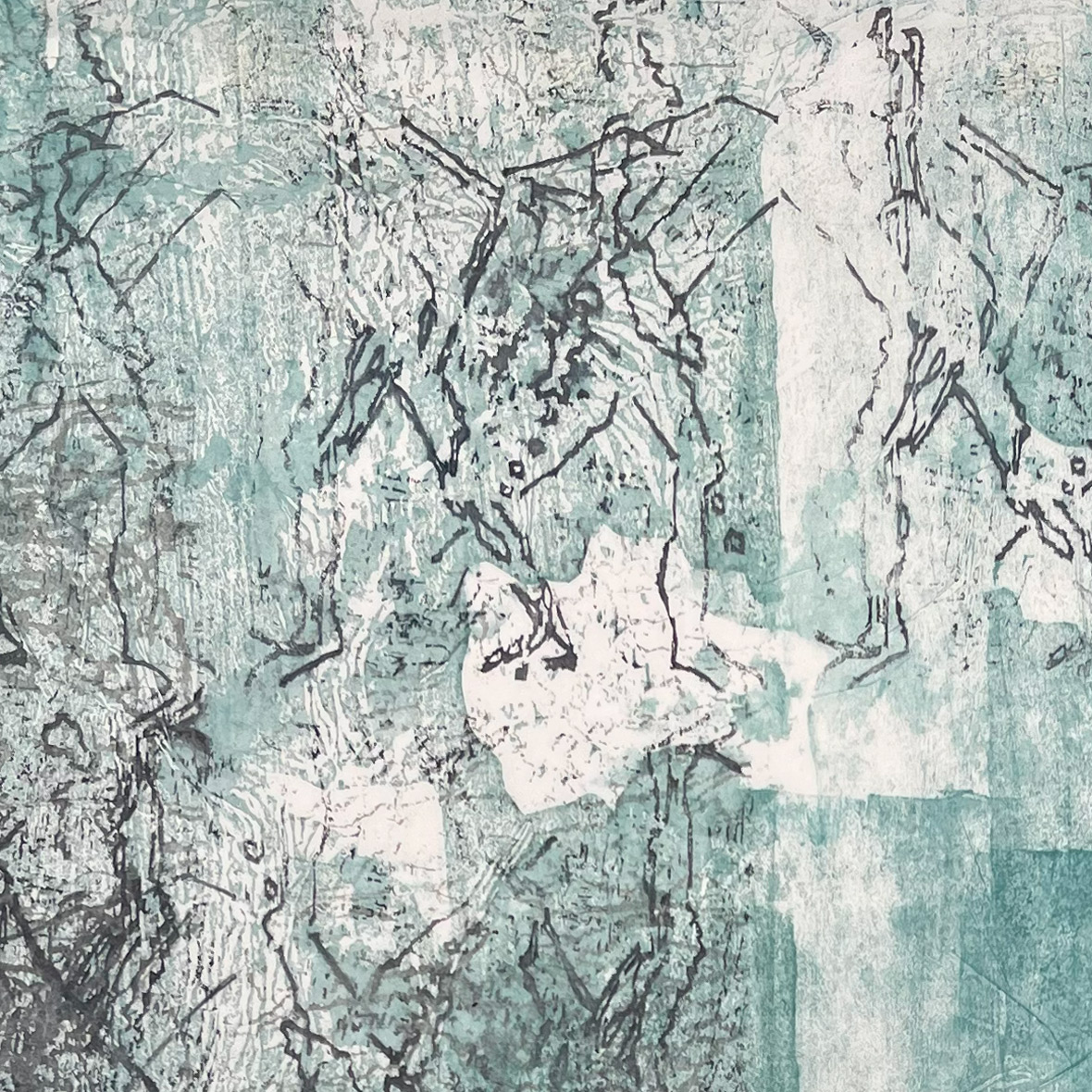
A' Coiseachd (Walking) - Detail
A' Coiseachd (Walking)
Sandra Kennedy
Woodblock watercolour mono-print on Mulbery paper
Dimensions: H:96 x W:96(cm)
Framed: H:114 x W:111(cm)
Tide Bhagarrach 2
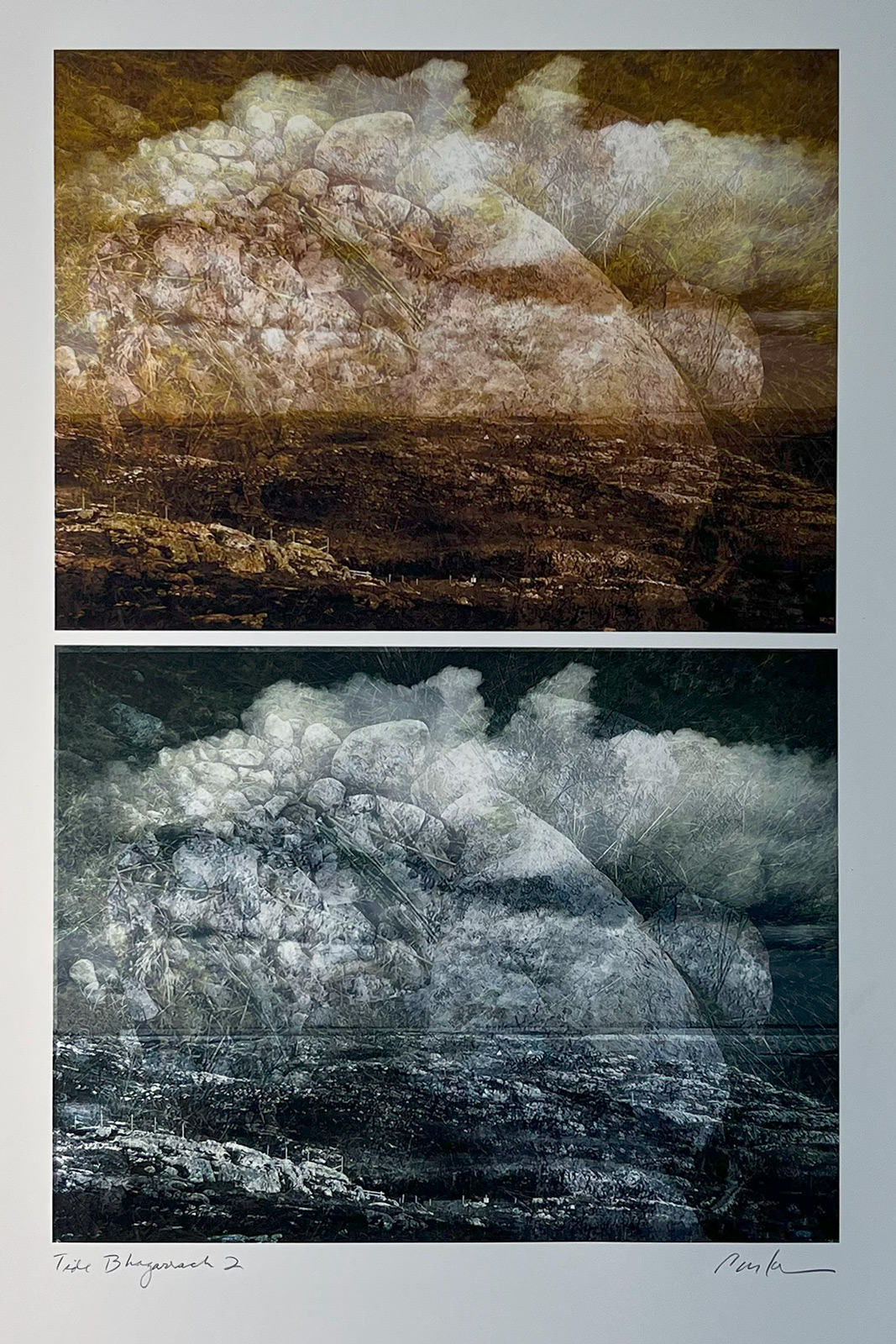
Tide Bhagarrach 2
Tide Bhagarrach 2
Rhea Banker
AIRD MEINISH - Tide Bhagarrach 2
The eternal lure of an island, that faint glimmer in the distance, that unexplored landscape, that opportunity to expand our own inner horizons, is nowhere more potent for Rhea than on the islands along Scotland’s West Coast.
These images reflect her repeated visits to Eilean Aird Meinish, a tiny tidal island sitting between Loch Miavaig and Loch Roag. Only accessible by foot at low tide and dwarfed by the often cloud-capped hills of Uig, the island is a reminder of the power held within the smallest view and the slowest journey.
Feamainn
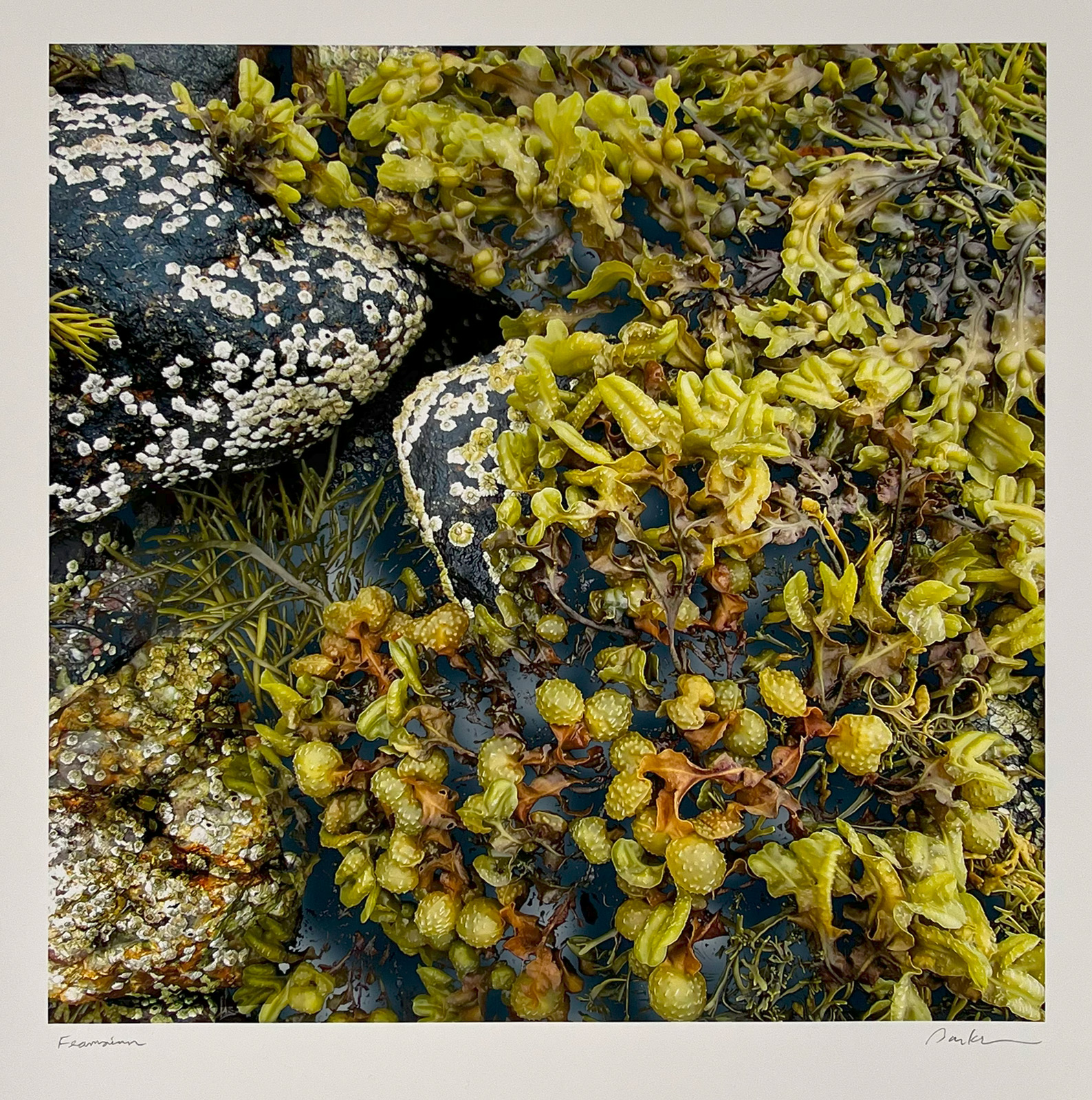
Feamainn
Feamainn
Rhea Banker
AIRD MEINISH - Feamainn
The eternal lure of an island, that faint glimmer in the distance, that unexplored landscape, that opportunity to expand our own inner horizons, is nowhere more potent for Rhea than on the islands along Scotland’s West Coast.
These images reflect her repeated visits to Eilean Aird Meinish, a tiny tidal island sitting between Loch Miavaig and Loch Roag. Only accessible by foot at low tide and dwarfed by the often cloud-capped hills of Uig, the island is a reminder of the power held within the smallest view and the slowest journey.
‘S Fhada Leam an Oidhche Gheamraidh (I Feel the Winter Night is Long)*

‘S Fhada Leam an Oidhche Gheamraidh (I Feel the Winter Night is Long)*
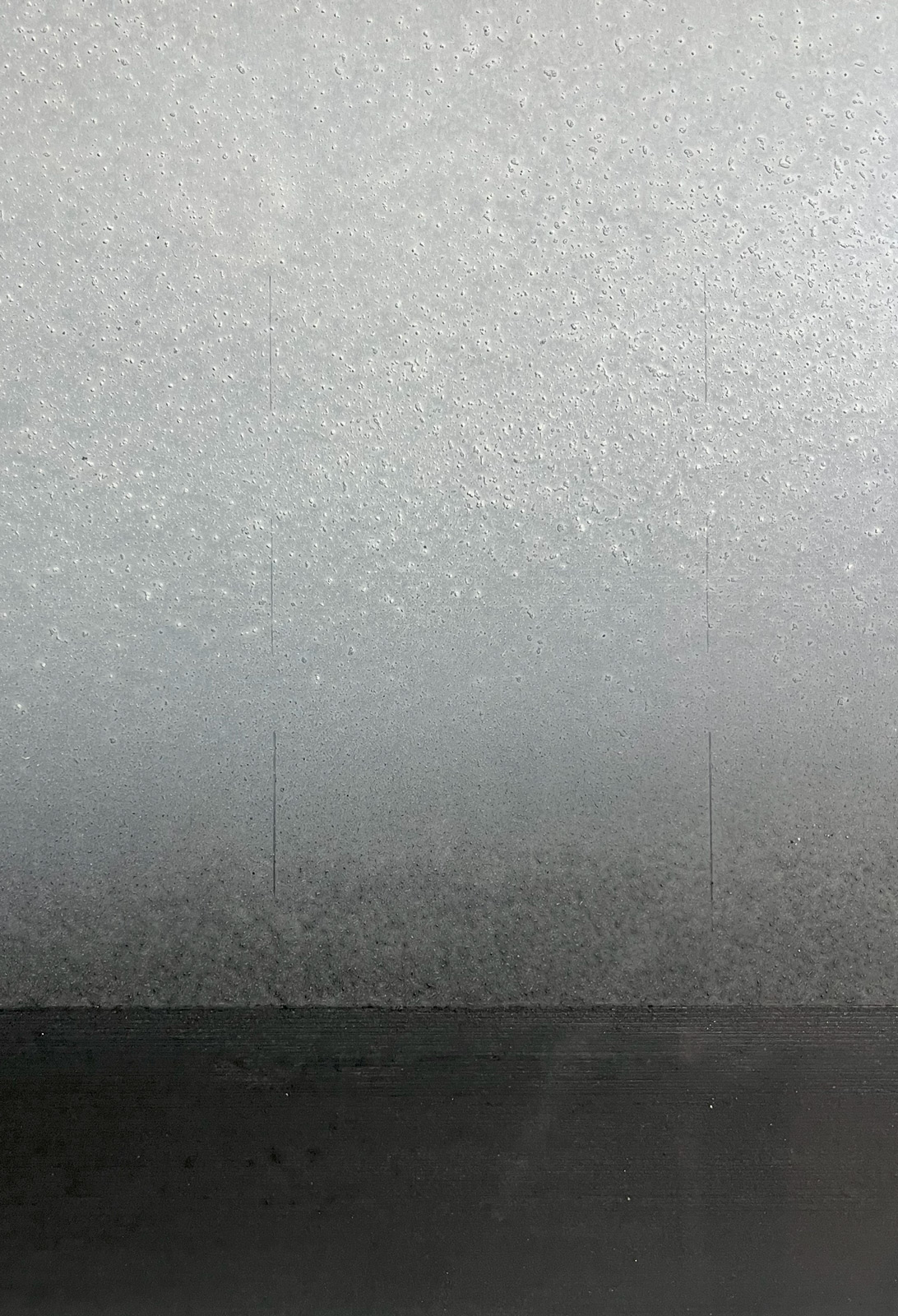
‘S Fhada Leam an Oidhche Gheamraidh (I Feel the Winter Night is Long)* - Detail
‘S Fhada Leam an Oidhche Gheamraidh (I Feel the Winter Night is Long)*
Mary Morrison
Oil/Mixed Media on paper
Dimensions: H:26 x W:102(cm)
Framed: H:43 x W:121(cm)
‘S Fhada Leam an Oidhche Gheamraidh (Long is the winter night)
This work is presented here as part of the Hulabhaig Collection by kind permission of the artist.
Work inspired by the songs of Murdo MacFarlane (Bàrd Mhealboist).
This song was written when Murdo was a young man, working in Manitoba, Canada, and is a classic ‘exile’ song. A very beautiful song. The translations don’t do the songs justice, either in the beauty of the gaelic original or the music.
"I wanted to use a horizon in a large-scale painting, and embody that sense of exile and longing in the song. ‘Cianalas’ is a very particular term in gaelic, often translated as homesickness, it is much more profound than that, as this translation suggests: ‘A deep seated sense of belonging to the place where your roots lie. Normally attributed to the Outer Hebrides. There is no sadness or melancholy in cianalas, only the realisation of what is truly important in life.’"
‘S Fhada Leam an Oidhche Gheamraidh (extract)
I feel the winter night long
Long, long, long it is
I can see nothing but a bare prairie there
And I can’t hear a wave coming to the shore
(Chorus)
In the evening time when it’s getting dark
Often the spirit will be full of longing
Thinking that there is a long, long distance
From where I would like to be ceilidhing
The work was created for an exhibition curated by Ishbel Murray 2016 based around a book launch.
'Le Mùirn' (With Affection)
Author - Catriona Murray https://www.ishbelmurray.org/collaboration.html
Locus Amoenus
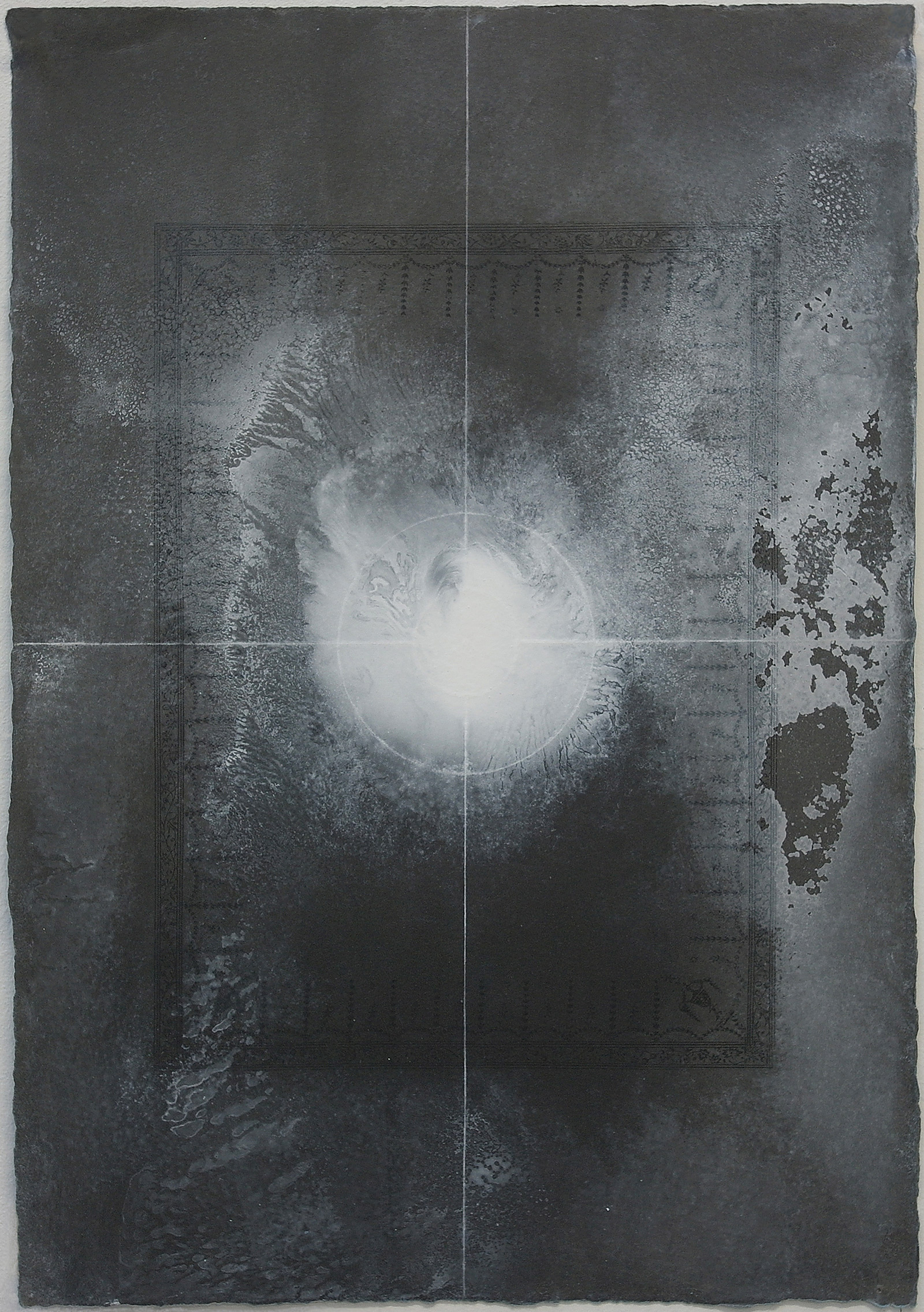
Locus Amoenus
Locus Amoenus
Mary Morrison
Photo plate lithography, monoprint and oil on paper.
Dimensions: H:42 x W:30(cm)
Framed: H:63 x W:45(cm)
Locus amoenus (‘pleasant place’) is a literary term which refers to an idealized place of safety or comfort which generally has three basic elements: trees, grass, and water. Often it will be in a remote place and function as a landscape of the mind, and also a place of refuge from the processes of time and mortality.
This last year has been a time of seeking such spaces, both real and imaginary, and a time for reflection and review.
In this context, I have revisited a printed element in a previous series of works Hortus Conclusus ‘the enclosed garden’ as part of Curved Stream at Traquair House in the Scottish Borders in 2015. These works incorporated a motif reproduced (through photo lithography) from the embossed design of a book cover in the museum room at Traquair. The motif suggested the design and symbolism of an enclosed or walled garden to which I added a ‘quartering of the world’ and water at the heart of the space. This new series of works are a reworking of an unfinished piece from the earlier series, and are now overlaid with the concept of the locus amoenus and our current experiences in relation to seeking solace, enclosures and green spaces in the face of a global pandemic. I have layered additional monoprinting and oil paint onto the paper
Seaforth
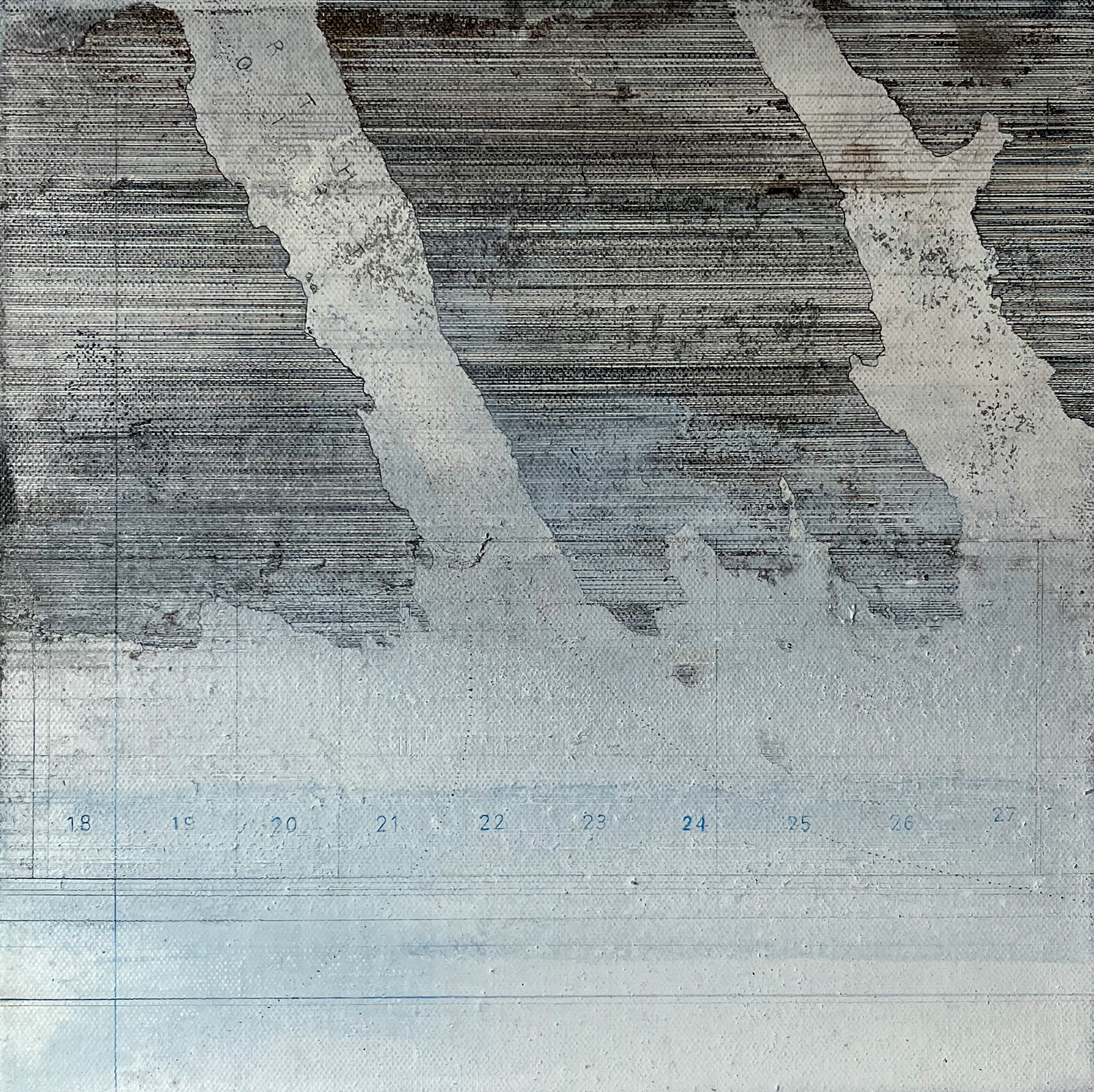
Seaforth
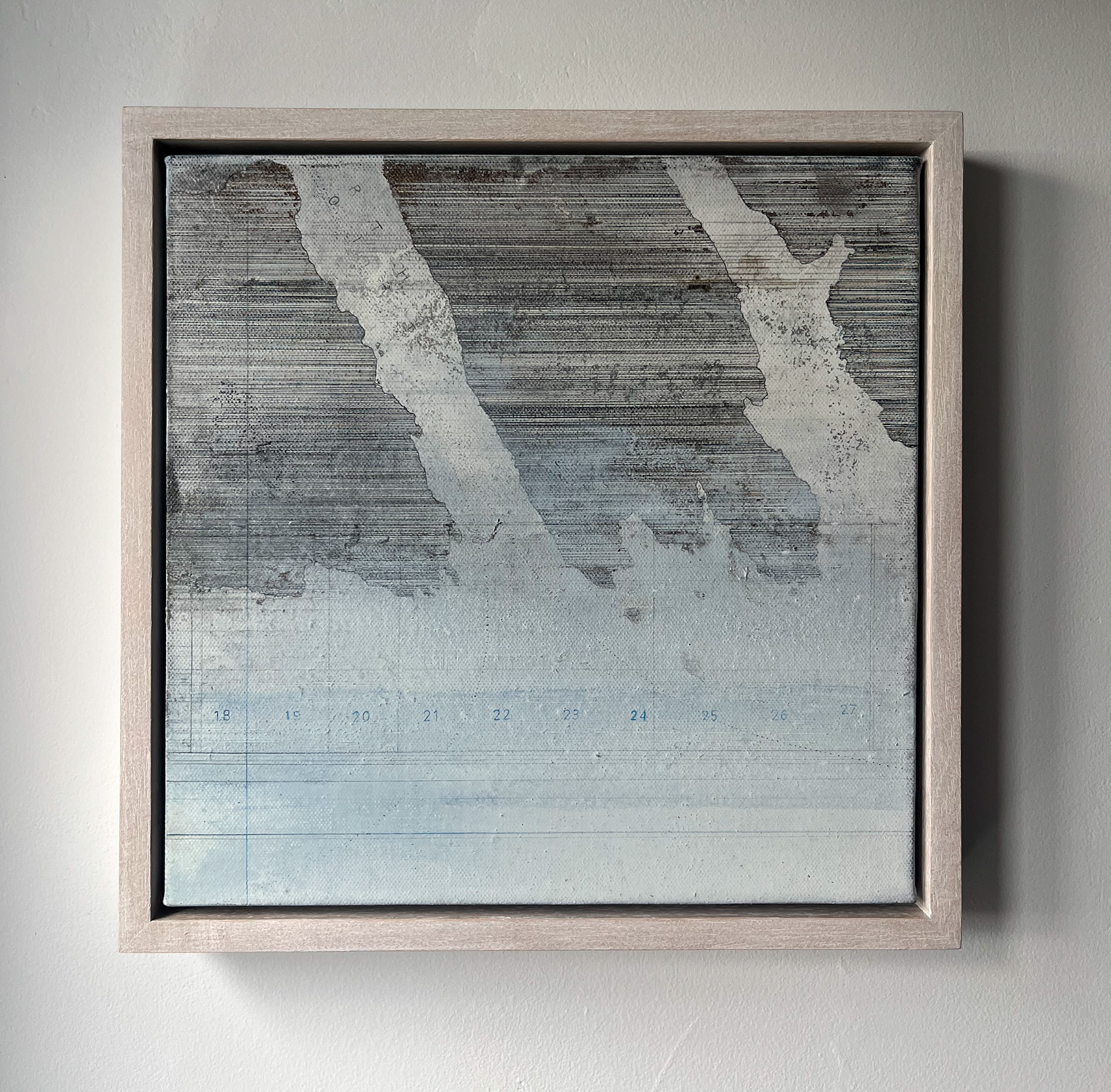
Seaforth
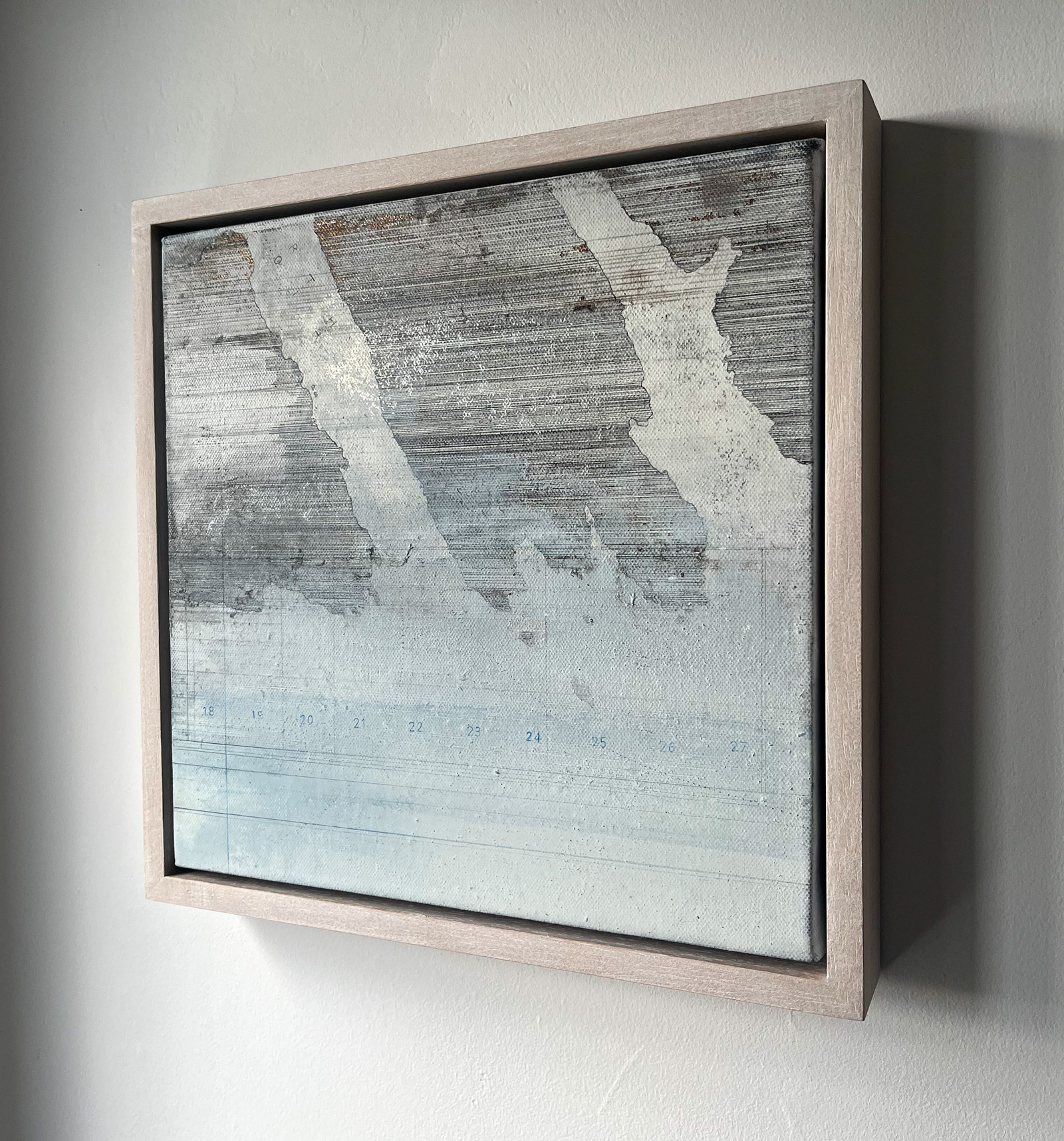
Seaforth
Seaforth
Mary Morrison
Oil/Mixed Media on Canvas
Dimensions: H:30 x W:30 x D:2(cm)
Framed: H:34 x W:34 x D:5(cm)
This work is very typical of the artists work at this time, when she has was developing a visual language to explore and frame her island identity. Maps were more strongly present in her work - the rendering of the coastline and co-ordinates of an Ordnance Survey map are focused on Loch Seaforth (Siophort) which effectively forms the boundary between Harris and Lewis. This work also incorporates silver leaf which has slowly oxidised with time.
Re-Soundings*
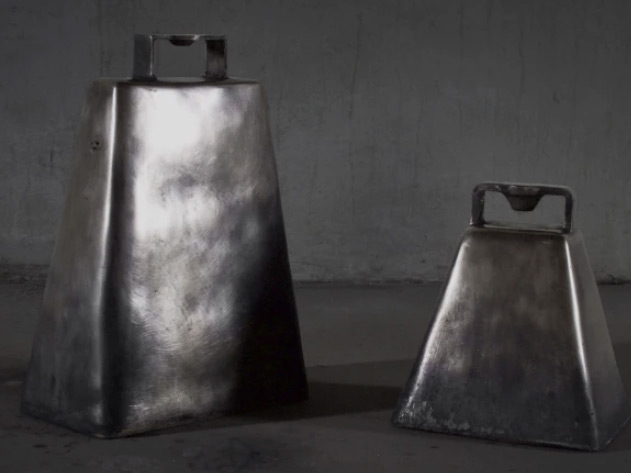
Re-Soundings*
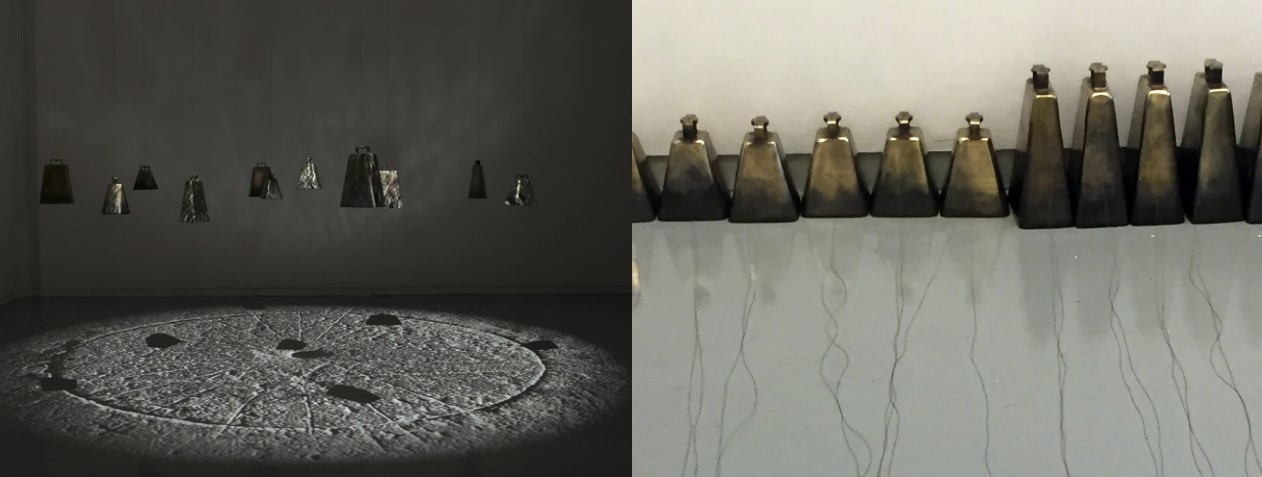
Re-Soundings*
Re-Soundings*
Mhairi Killin
Re cast WW1 munitions
Kindly loaned to the Hulabhaig Collection by the artist.
“The Heretics Take Down the Bells from the Churches in Geneva: On the next Wednesday (May 12th) those dogs removed the bell from Notre Dame de Grace and threw it down from the Steeple to destroy it. Afterwards they went to see the bells at the monastery of Palais and at the parish of Saint-Gervais because they wanted to melt them down and make weapons to use against monseigneur and the Christians.”[i]
Commissioned by An Lanntair, Re-Soundings is the outcome of a collaborative journey through the landscapes of Lewis and Iona. Musician John Purser of Sabhal Mòr Ostaig and Lewis writer Alastair McIntosh, accompanied us in our exploration of the bell as a symbol of secular and non-secular time all set against the wider context of the reformation in Europe. The thinking behind Re-Soundings was directly informed by the time spent in specific landscapes with local people who shared their knowledge and connection to place, and through conversations and activities with Alastair McIntosh and John Purser. Re-Soundings references the iconoclasm of the Reformation and the impact of this on belief structures in the Hebrides, suggested by the presence and absence of the bell as a visual and auditory feature in the landscape. One of Alastair McIntosh’s observations on Lewis’s bell-less belfries is that the empty space leaves room to look through and beyond to an alternative and, some might argue, deeper understanding of belief. The emptiness and silence has created a space not only for reflection, but also, for creativity. Into this, Re-Soundings ventures.
The exhibition at An Lanntair in May/June 2016 and the sound interventions at St. Moluag’s Chapel on Lewis and St. Oran’s Chapel on Iona in June 2016, reflect months of shared thinking, and engagement with one another’s artistic and scholarly practices, and with the people most connected to the landscapes we explored. Created by John Purser, the sound work was composed primarily from bell recordings gathered during public workshops and performances on Lewis and Iona.
The bells were created by re casting WW1 munitions into replicas of two early Christian quadrangular hand-bells. We chose this material to symbolise a rethinking of the iconoclasm of the Reformation in Europe; we know from historical documents that bells were removed from religious buildings and recast as munitions. It seemed fitting to use munitions from the Great War, given that the project coincides with its centenary. The project is supported by a bi-lingual publication with commissioned writing from Alastair McIntosh, John Purser and Francis MacKee and includes a CD of the sound piece and pullout screen printed map of the geographical context of the project.
The publication serves as an artefact to the project, extending its life beyond the chronology of the exhibition and installations. One meaning of “inspiration” is to breathe in, and as artists we have inhaled deeply of the exceptional physical, spiritual and cultural terrain of Lewis and Iona.
We hope that the Re Soundings website, publication and CD will allow you to share in that breath.
The project would not have been possible without the generous support of Creative Scotland, An Lanntair, Comhlairle nan Eileen Siar, Historic Environment Scotland, Sabhal Mar Ostaig, Fiona MacNeill Associates, Aosdàna, Media Studio Glasgow School of Art, Ness Historical Society, Shawbost Historical Society, St. Peter’s Church Stornoway. Personal thanks also to Acair Books, Alastair McIntosh, John Purser, Frances McKee; Roddy Murray, Elly Fletcher, Jon Macleod, An Lanntair; Rev. Terry Taggart, St. Peter’s Church Stornoway; Finlay Macleod; Andy Crossan; Andrew Laing, Laings Foundry Edinburgh; Calum Angus Mackay, Ivor MacKenzie, MastArd Studio; Etta and Roddy Morrison; Jim Crawford; Anne Macleod, Ness Historical Society; Iain Macaulay; Alasdair MacKay, Skyespace, Sabhal Mòr Ostaig; Geoff Allen, CaVa Recording Studios; Andy Graham, Graphical House; Alasdair MacLeoid, Facal; Jane Martin, Historic Environment Scotland; Pete Johnson, Ratho Forge; Gordon Bruce, Aosdàna; Andrew Tibbles, Mark Craig, MakLab. Finally, we owe many thanks to the participants of the Lewis and Iona sound workshops. Their engagement with the bells provided John with a wealth of audio material for his composition.
Pelt
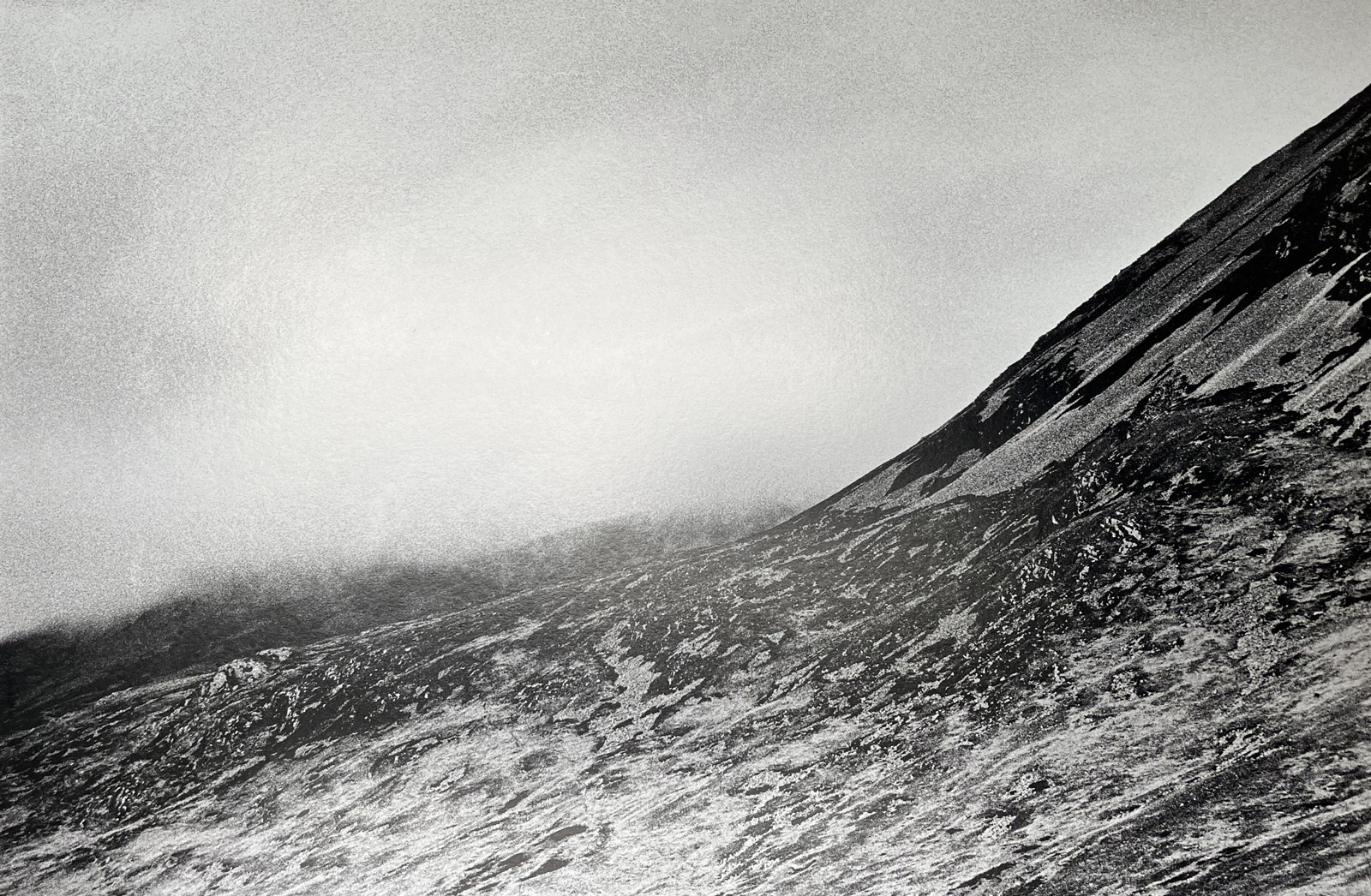
Pelt
Pelt
Giles Perring
Photograph
Dimensions: H:51 x W:76 x D:1(cm)
Part of the 'Exposure' touring exhibition.
Tiugainn Dachaidh.
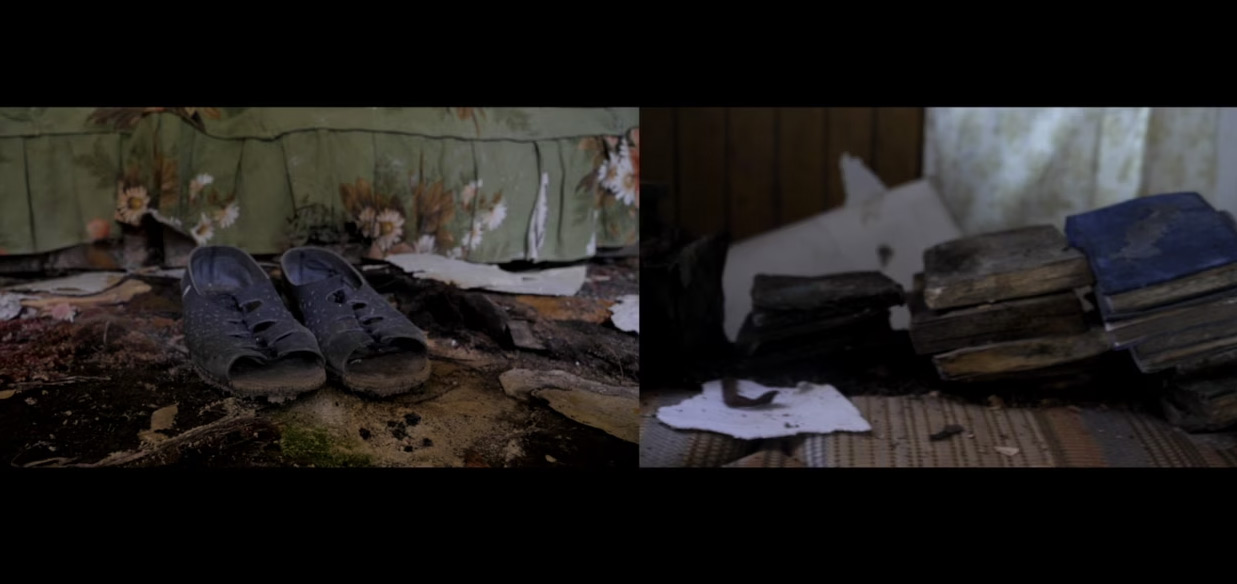
Tiugainn Dachaidh (video)
Tiugainn Dachaidh.
Fraser MacBeath
Video
Winner of the RSA Benno Schotz Prize for the most promising work by a Scottish artist under 35. Royal Scottish Academy 197th Annual Exhibition. Winner of Rèasort Estates Award, Hulabhaig Uig Open 2021. The Outer Hebrides are among rural communities throughout the world that are experiencing population decline. Out of any Scottish local authority region, The Outer Hebrides is where this is most significant. From 1901 to 2001 the population has fallen by 40% . More recent figures show that population is predicted to decline by a further 16% between 2018 and 2046 while the rest of Scotland is set to increase by 2.4%. The Outer Hebrides comprise more than 70 islands but only 15 remain inhabited today. This work uses footage recorded in abandoned houses, field recordings from the Isle of lewis and Scottish archival audio in order to give an immersive experience of the loss currently being experienced there.
Mar gum biodh an teine air do chraiceann (As if the fire were on your skin)
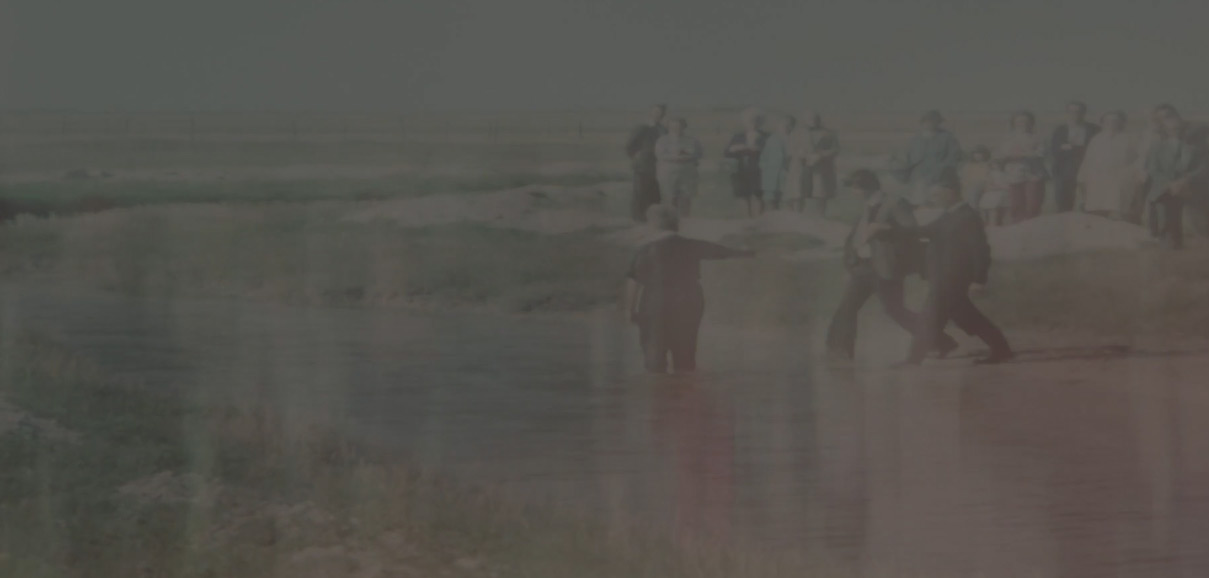
Mar gum biodh an teine air do chraiceann (As if the fire were on your skin)
Mar gum biodh an teine air do chraiceann (As if the fire were on your skin)
Fraser MacBeath
Video
Commission by the University of Edinburgh, for the exhibition 'A Carrying Stream' 2023. 'This work is a reflection on what it means to live a rural existence - a life characterised by a deep bond with nature; an endless balancing act between appreciating its beauty and bounty, and sheltering from its ambivalent brutality. For most of human history this relationship was mediated by the campfire, the centre of this piece as it was the traditional centre of rural life. Warm by the fire, we were given the respite to reflect on our relationship with nature and each other, and from this all manner of prose, poetry, song, and comfort emerged. In Scotland where so much of our cultural output and history speaks to an embodiment of nature, one could argue that it was by the fire that we found our identity. When populations are sparse and nature unforgiving, these bonds of community become vital for survival. But the fire also gave rise to something greater than survival - we started to dream. This piece invites the spectator to sit by the campfire and experience these dreams again. To feel that same reverence for nature embodied by our oral tradition, that our rural ancestors would have felt time and again, here in the warm glow of life itself.'.
Conger Eel
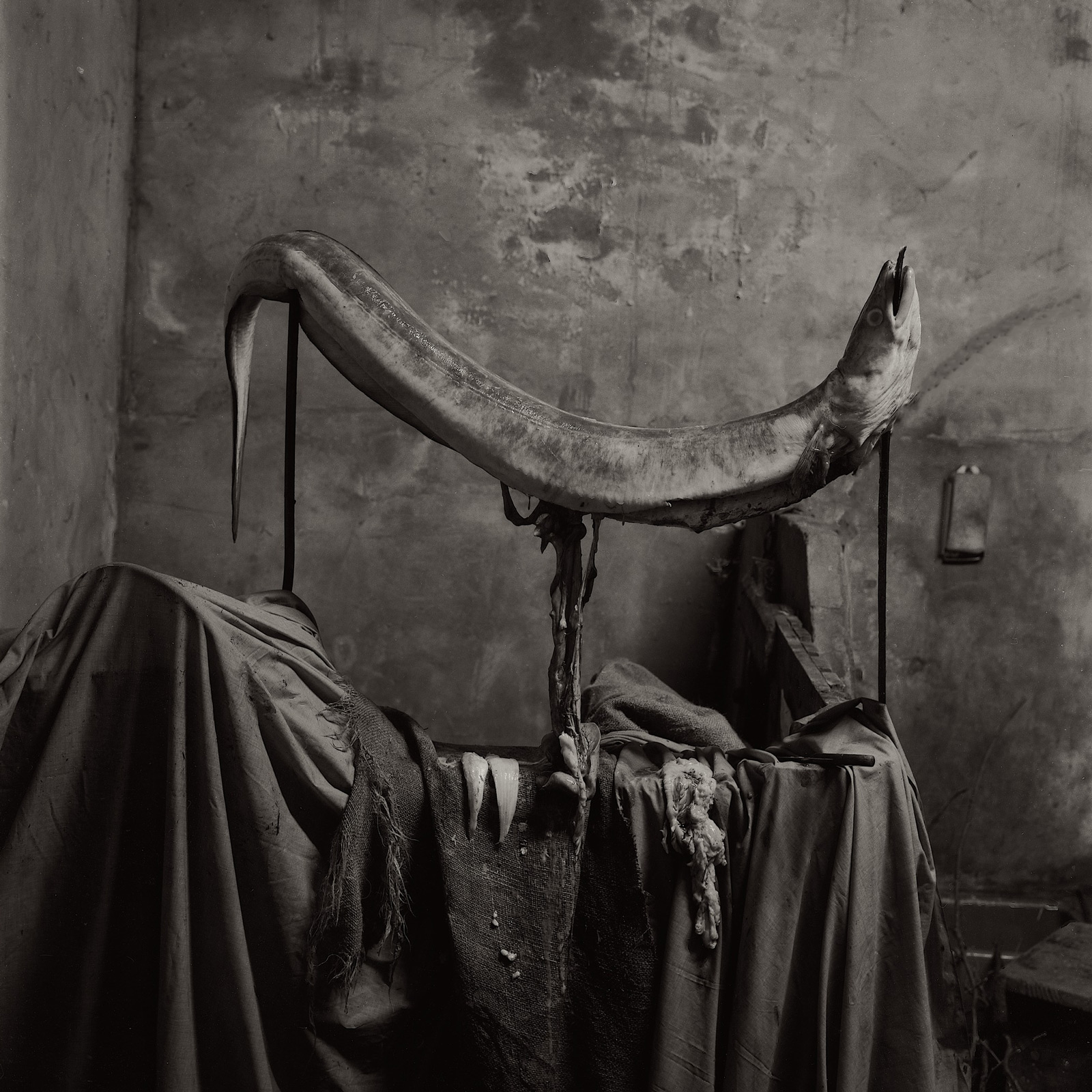
Conger Eel
Conger Eel
Calum Angus Mackay
Photograph
Dimensions: H:41 x W:41(cm)
Framed: H:54 x W:54(cm)
Frozen Bait
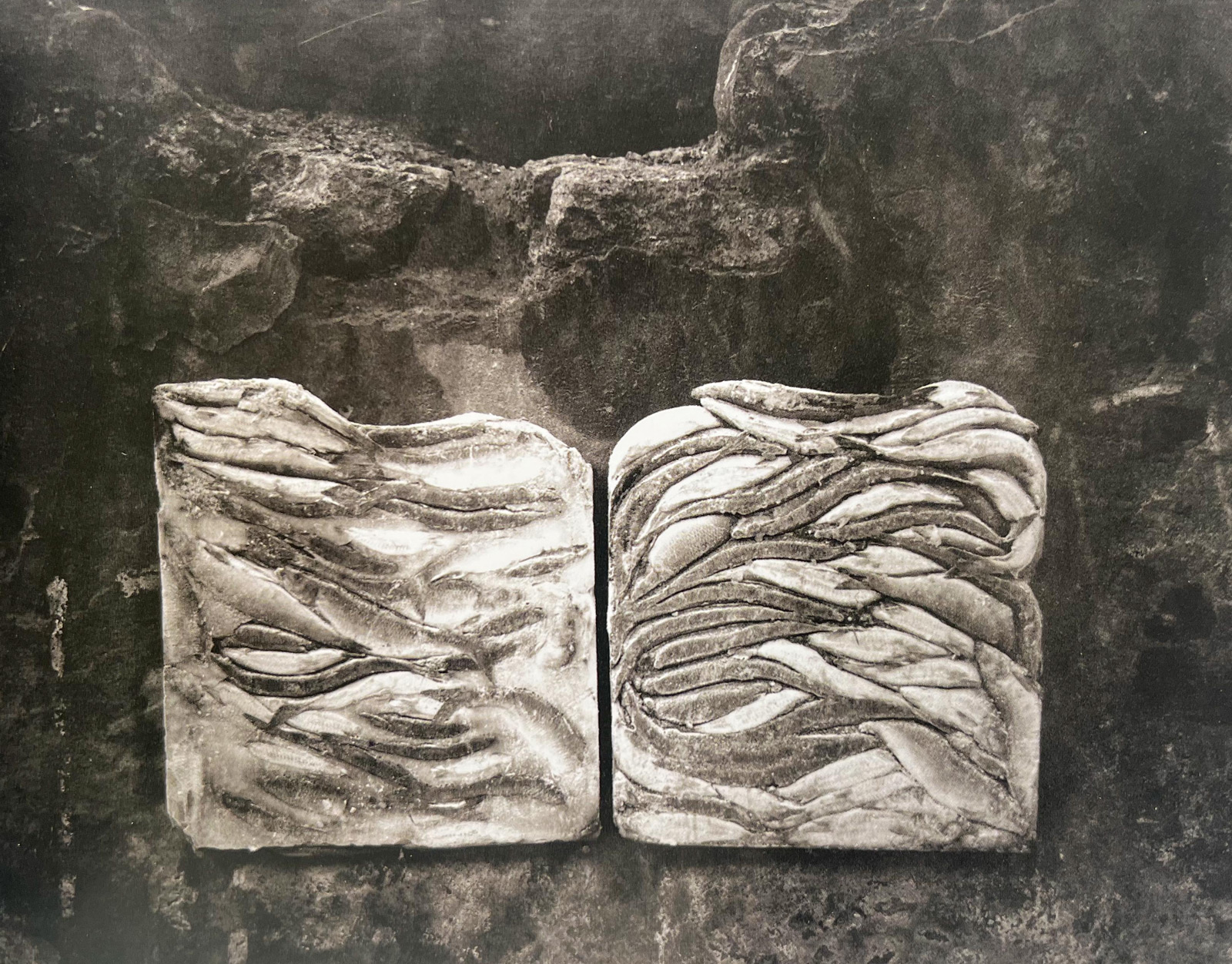
Frozen Bait
Frozen Bait
Calum Angus Mackay
Photograph
Dimensions: H:34 x W:41(cm)
Framed: H:46 x W:54(cm)
Nailed Skate
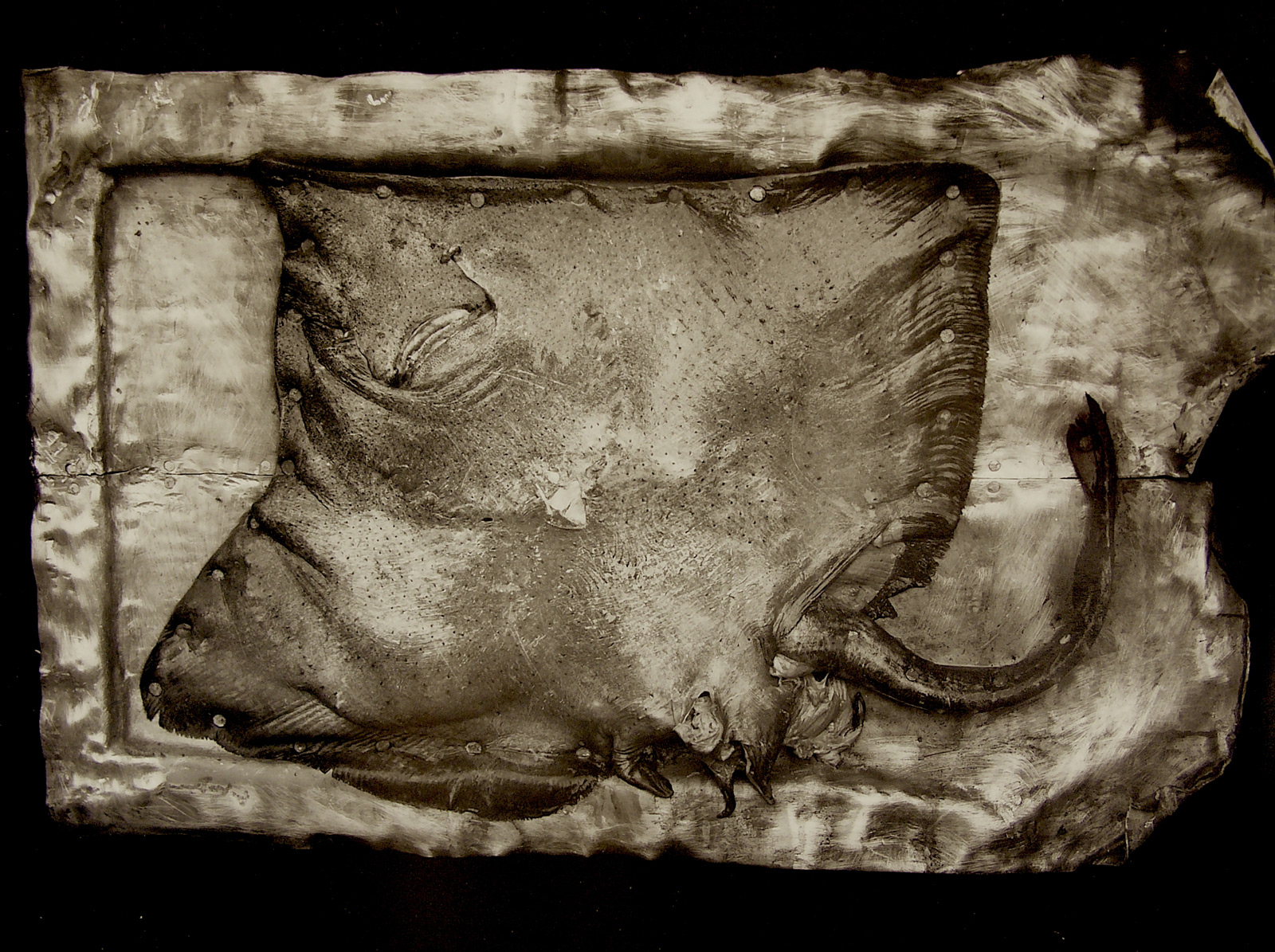
Nailed Skate
Nailed Skate
Calum Angus Mackay
Photograph
Dimensions: H:34 x W:41(cm)
Framed: H:46 x W:54(cm)
“I was working in my studio byre, a little unhappy with a wooden crate that I had built, layered with lead, a sort of open flat box at one end. I left it and took a spin down to the west end of the village in my van. Without warning, my front wheel took a bump over something I stopped to check, and out of an old hessian sack slid a large, shiny skate. Unexpected roadkill. I took it with me back to the studio, and I could scarcely believe it; as if the lead box had been made for it, the skate was nailed to the edges, just like a burial casket.
Later, I told the story of this image to Colin 'Fish'. He had a bad habit of going between the houses and leaving the back doors of his van wide open. He had a proper laugh.”
Extract from UNNAD Indigenous.
Still Life with Dogfish
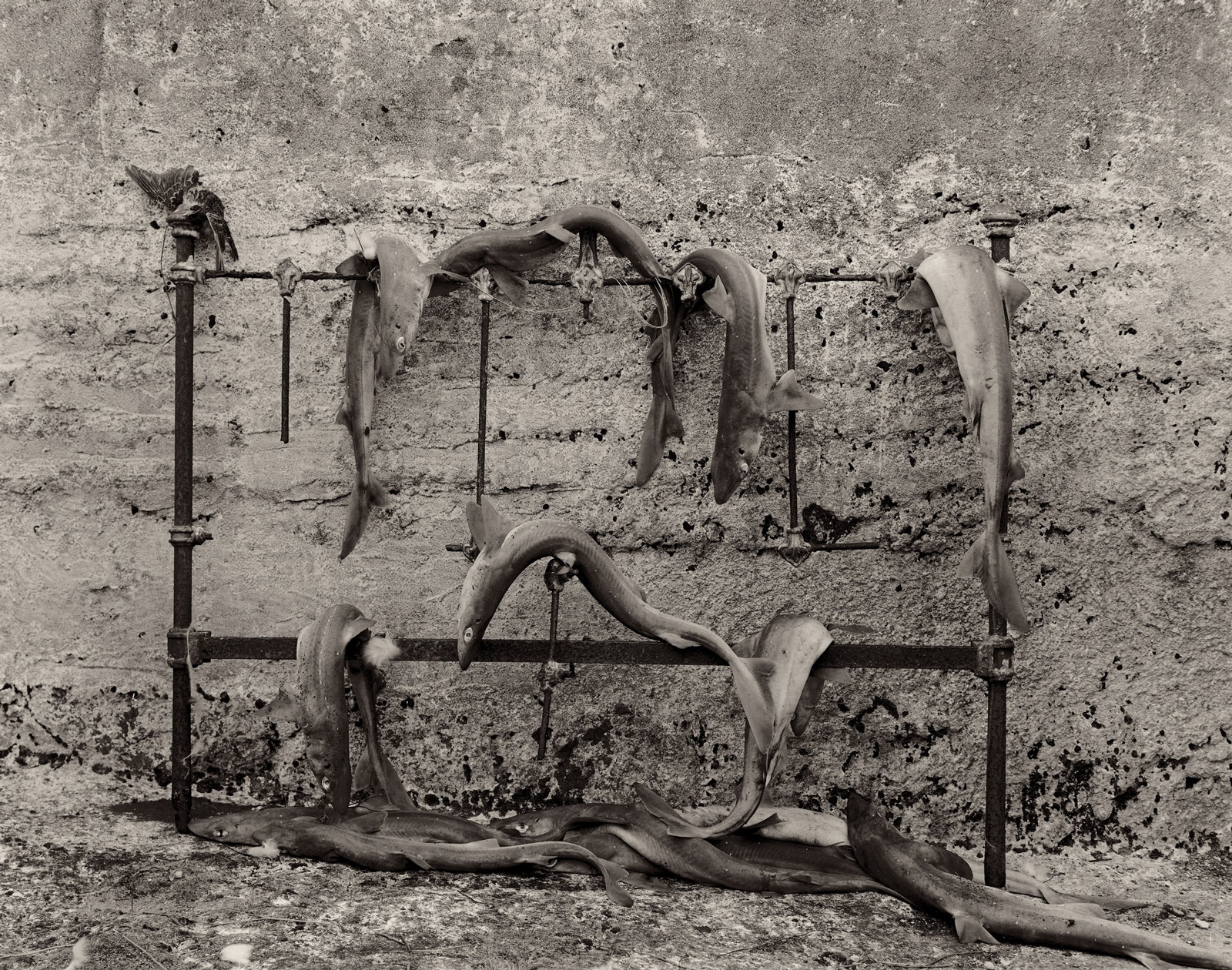
Still Life with Dogfish
Still Life with Dogfish
Calum Angus Mackay
Photograph
Dimensions: H:34 x W:41(cm)
Framed: H:46 x W:54(cm)
John Ross
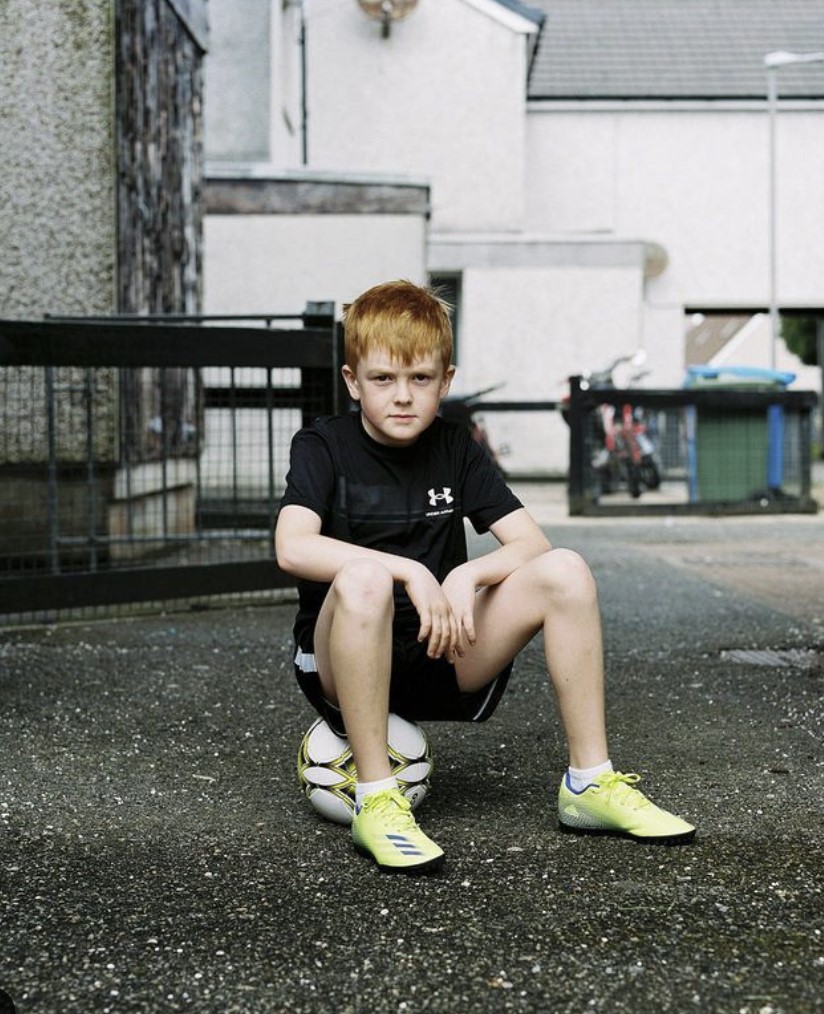
John Ross
John Ross
Deljeem Rai
Photograph
Dimensions: H:37 x W:31(cm)
Framed: H:44 x W:37(cm)
CEARNS This project grew from Deljeem Rai's desire to explore his connection to and identity within the Cearns, a small housing estate in Stornoway. Growing up in Nepal gave him a strong national identity and sense of self, a sense that suffered after migrating to Scotland where a desire to fit into his adopted nation necessitated that he disconnect from that identity. However, while living in the Cearns, Deljeem found a new sense of belonging within a community. There, himself and his family became part of a community that had a strong sense of connection with each other and who supported and welcomed them. Through portraiture and environmental photographs, he hopes to create pride for those who live in the Cearns, seeing themselves and their homes represented in a way that reflects their strong community values.
Donald
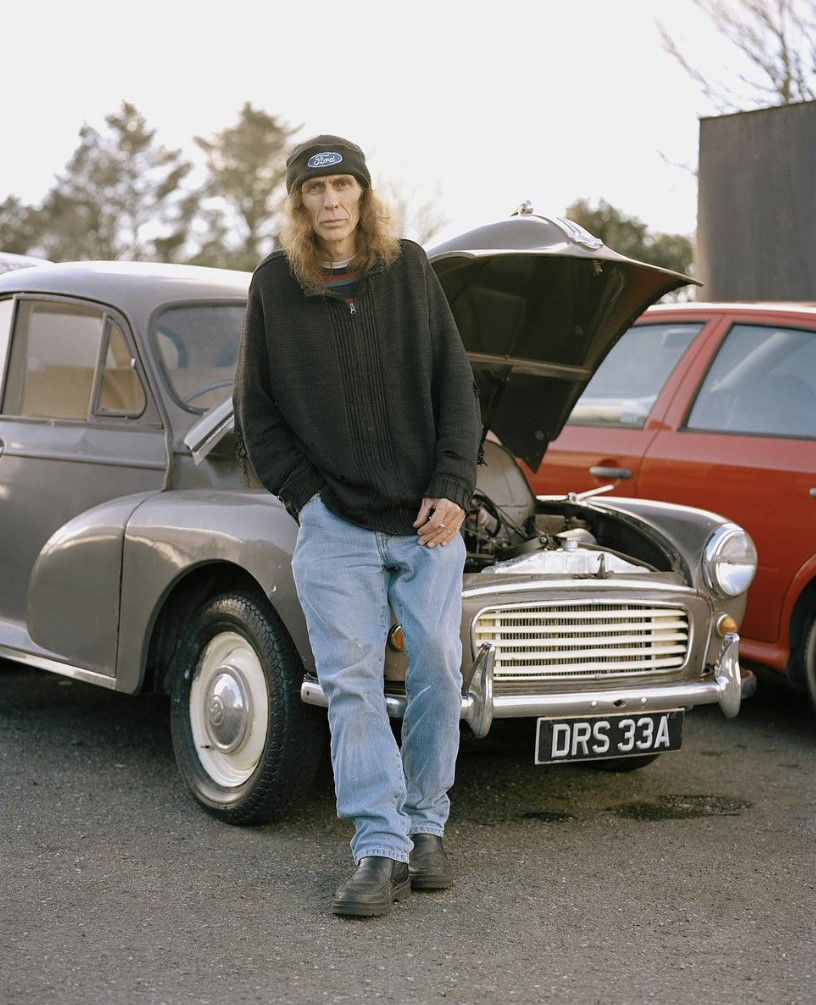
Donald
Donald
Deljeem Rai
Photograph
Dimensions: H:37 x W:31(cm)
Framed: H:44 x W:37(cm)
CEARNS This project grew from Deljeem Rai's desire to explore his connection to and identity within the Cearns, a small housing estate in Stornoway. Growing up in Nepal gave him a strong national identity and sense of self, a sense that suffered after migrating to Scotland where a desire to fit into his adopted nation necessitated that he disconnect from that identity. However, while living in the Cearns, Deljeem found a new sense of belonging within a community. There, himself and his family became part of a community that had a strong sense of connection with each other and who supported and welcomed them. Through portraiture and environmental photographs, he hopes to create pride for those who live in the Cearns, seeing themselves and their homes represented in a way that reflects their strong community values.
Light Guardian
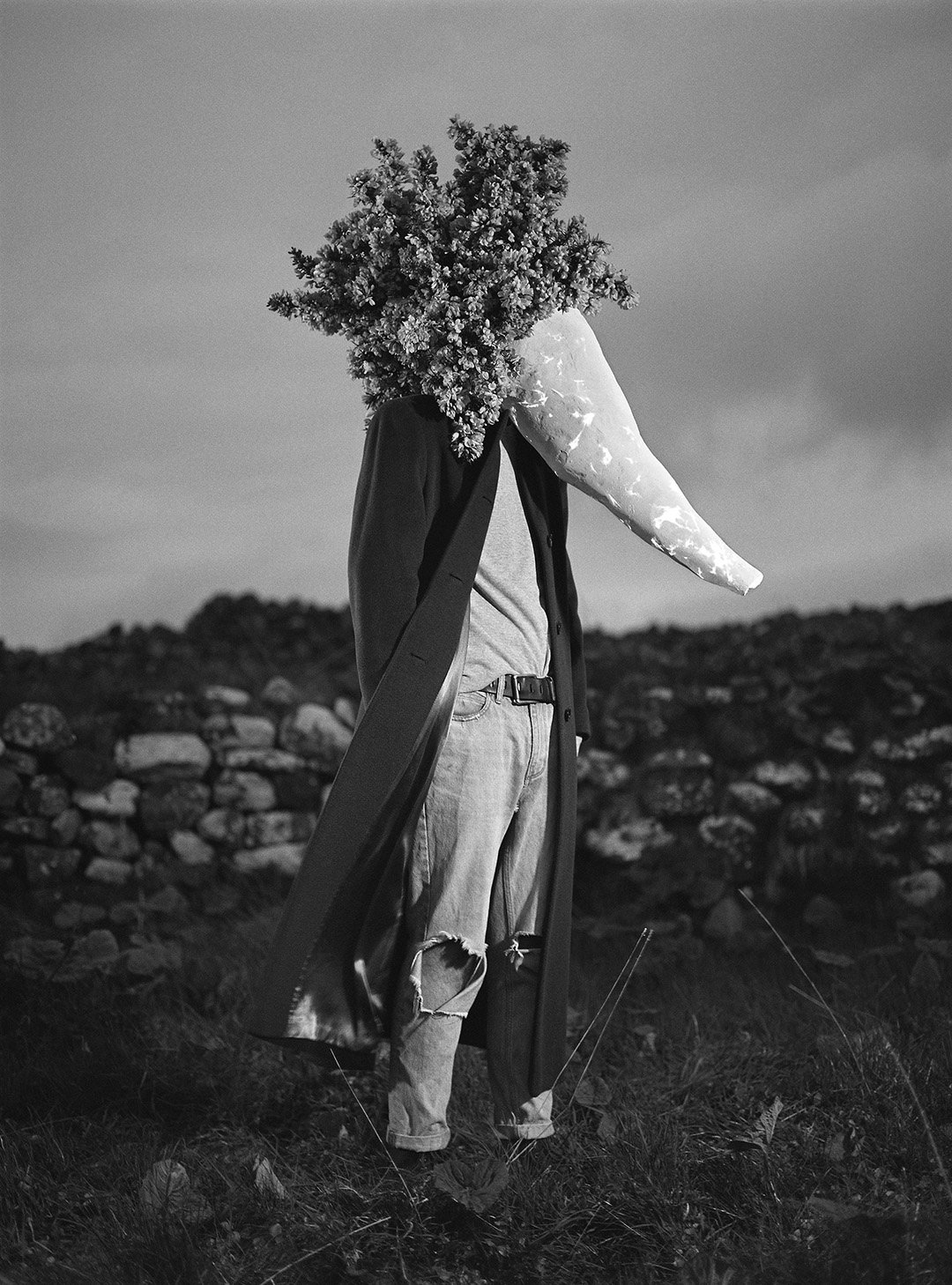
Light Guardian
Light Guardian
Danielle Macleod
Giclée print on Hahnemühle Fine Art Pearl 285gsm paper. Limited edition run of 30 signed and numbered print
Dimensions: H:29 x W:21(cm)
Framed: H:34 x W:27(cm)
‘Guardians’ is an ongoing series exploring the reconstruction of the artist’s identity after leaving her Christian faith, and about the nature of belief as a space between reality and imagination. These masks, constructed mostly from natural and found materials on the islands, manifest spirituality outside the boundaries of organised religion. They declare a new way of being to the place which formed her. The making of each mask begins as a re-molding of a certain way of being and believing. As soon as they are worn an entity is called into existence that has movement and life. Once photographed, these entities become idols, or gods, or spiritual guides, that continue to lead one towards a better place. Old gods have been replaced by new ones — not ones of authority but of inspiration. Inspiration to be, to play, and to live in a way that feels more right and more true for oneself.
Wandering Guardian
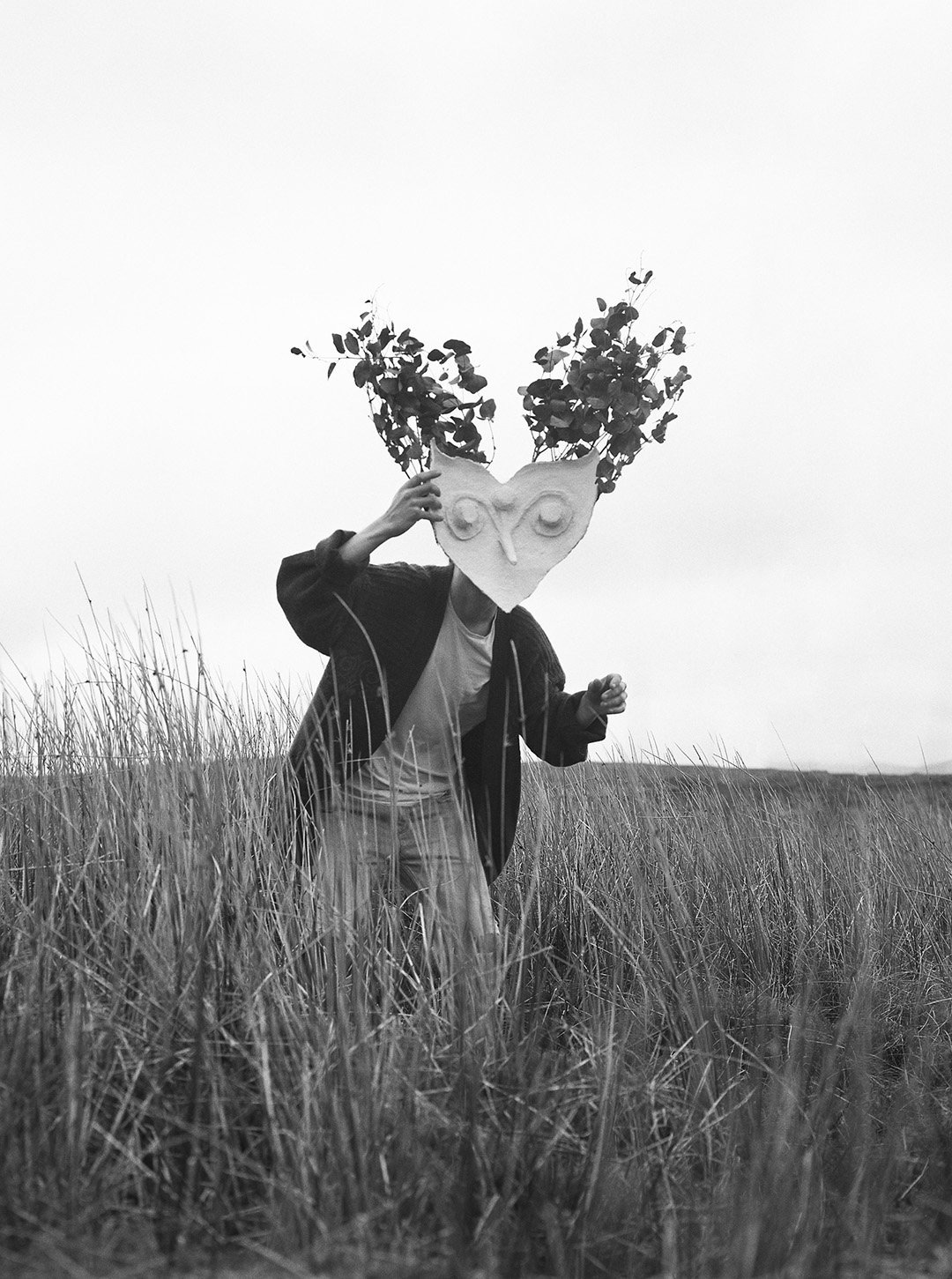
Wandering Guardian
Wandering Guardian
Danielle Macleod
Giclée print on Hahnemühle Fine Art Pearl 285gsm paper. Limited edition run of 30 signed and numbered print
Dimensions: H:29 x W:21(cm)
Framed: H:34 x W:27(cm)
‘Guardians’ is an ongoing series exploring the reconstruction of the artist’s identity after leaving her Christian faith, and about the nature of belief as a space between reality and imagination. These masks, constructed mostly from natural and found materials on the islands, manifest spirituality outside the boundaries of organised religion. They declare a new way of being to the place which formed her. The making of each mask begins as a re-molding of a certain way of being and believing. As soon as they are worn an entity is called into existence that has movement and life. Once photographed, these entities become idols, or gods, or spiritual guides, that continue to lead one towards a better place. Old gods have been replaced by new ones — not ones of authority but of inspiration. Inspiration to be, to play, and to live in a way that feels more right and more true for oneself.
Armoured Guardian
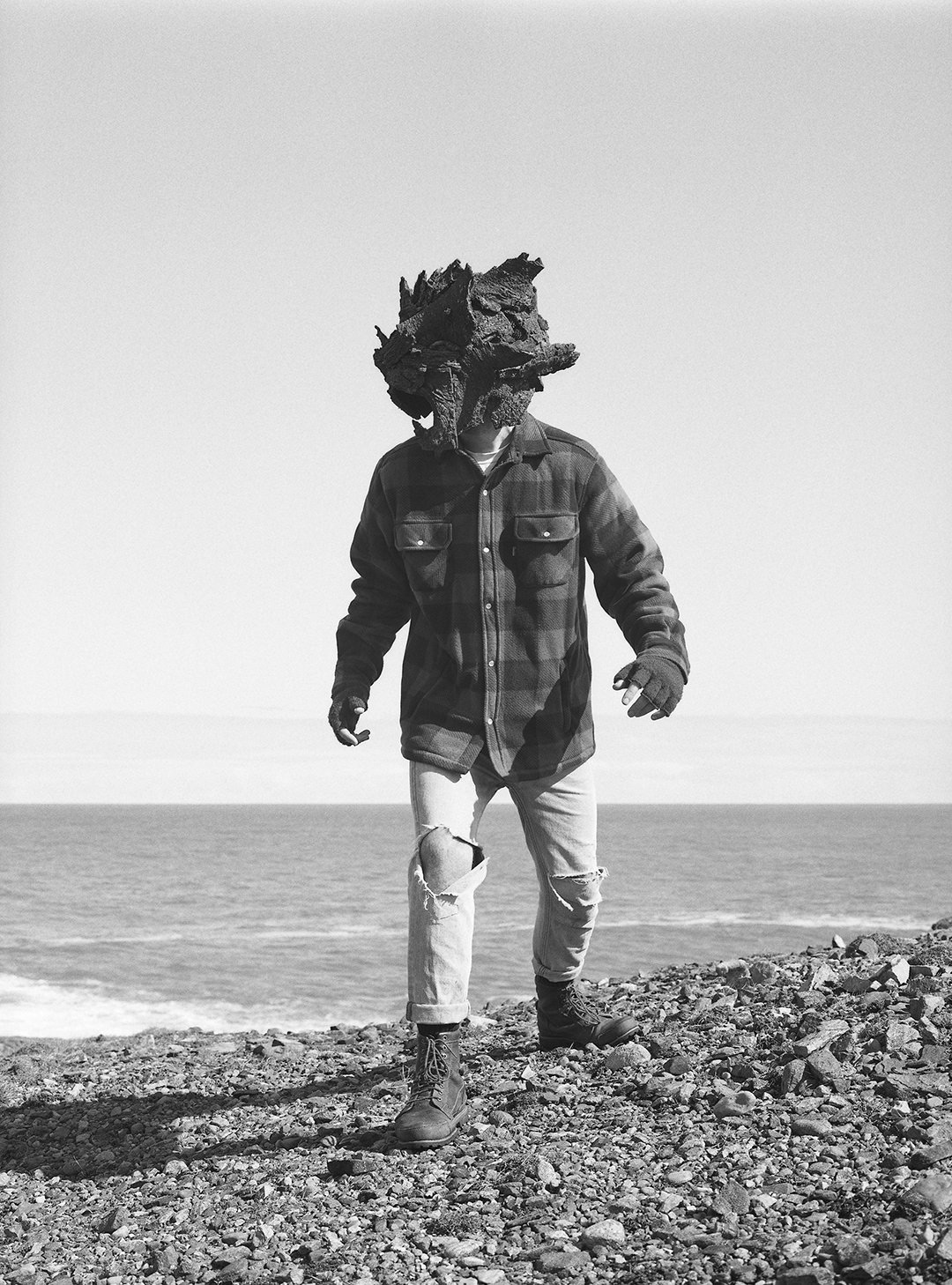
Armoured Guardian
Armoured Guardian
Danielle Macleod
Giclée print on Hahnemühle Fine Art Pearl 285gsm paper. Limited edition run of 30 signed and numbered print
Dimensions: H:29 x W:21(cm)
Framed: H:34 x W:27(cm)
‘Guardians’ is an ongoing series exploring the reconstruction of the artist’s identity after leaving her Christian faith, and about the nature of belief as a space between reality and imagination. These masks, constructed mostly from natural and found materials on the islands, manifest spirituality outside the boundaries of organised religion. They declare a new way of being to the place which formed her. The making of each mask begins as a re-molding of a certain way of being and believing. As soon as they are worn an entity is called into existence that has movement and life. Once photographed, these entities become idols, or gods, or spiritual guides, that continue to lead one towards a better place. Old gods have been replaced by new ones — not ones of authority but of inspiration. Inspiration to be, to play, and to live in a way that feels more right and more true for oneself.
New Guardian
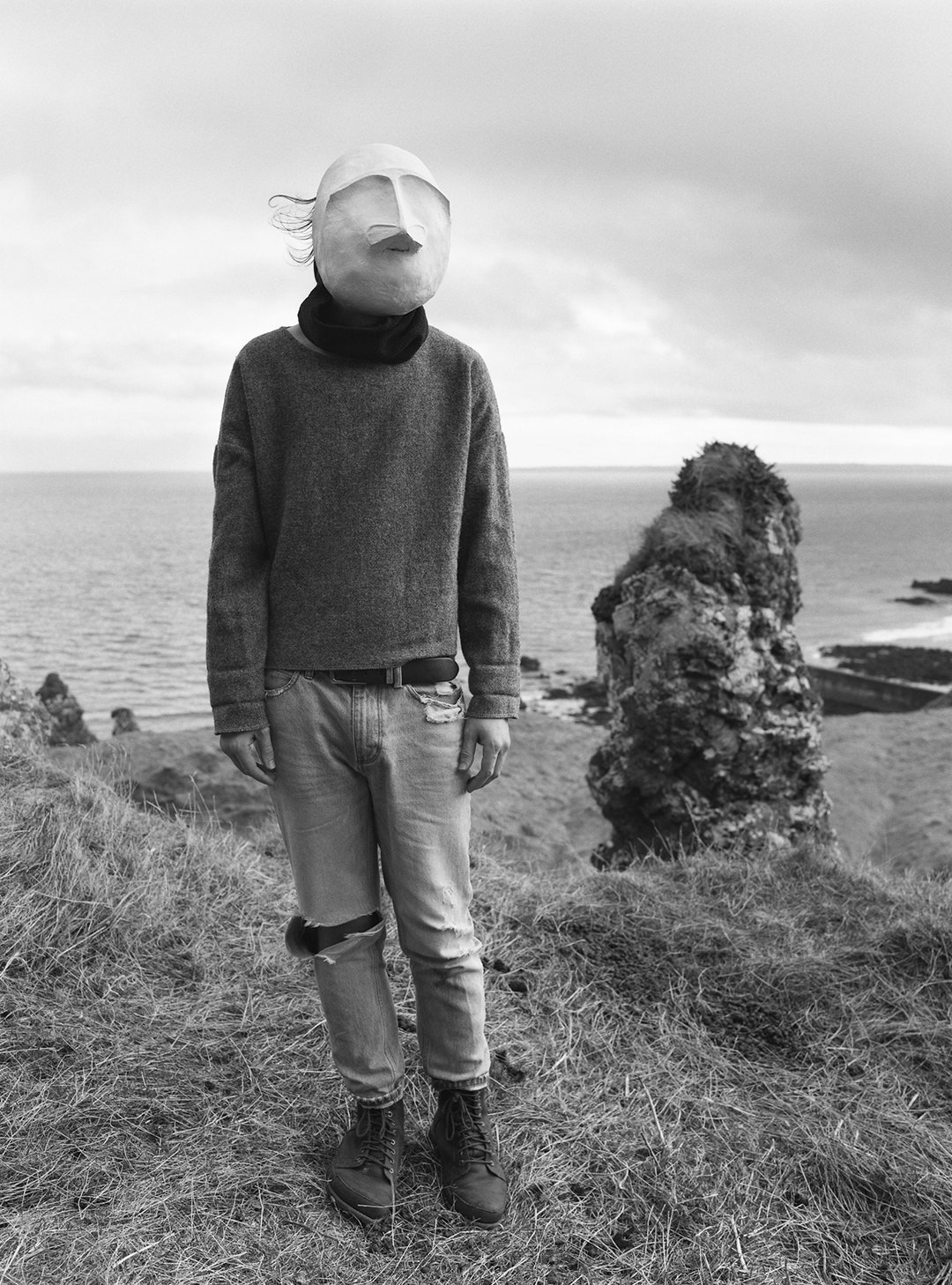
New Guardian
New Guardian
Danielle Macleod
Giclée print on Hahnemühle Fine Art Pearl 285gsm paper. Limited edition run of 30 signed and numbered print
Dimensions: H:29 x W:21(cm)
Framed: H:29 x W:27(cm)
‘Guardians’ is an ongoing series exploring the reconstruction of the artist’s identity after leaving her Christian faith, and about the nature of belief as a space between reality and imagination. These masks, constructed mostly from natural and found materials on the islands, manifest spirituality outside the boundaries of organised religion. They declare a new way of being to the place which formed her. The making of each mask begins as a re-molding of a certain way of being and believing. As soon as they are worn an entity is called into existence that has movement and life. Once photographed, these entities become idols, or gods, or spiritual guides, that continue to lead one towards a better place. Old gods have been replaced by new ones — not ones of authority but of inspiration. Inspiration to be, to play, and to live in a way that feels more right and more true for oneself.
Pentland Guardian
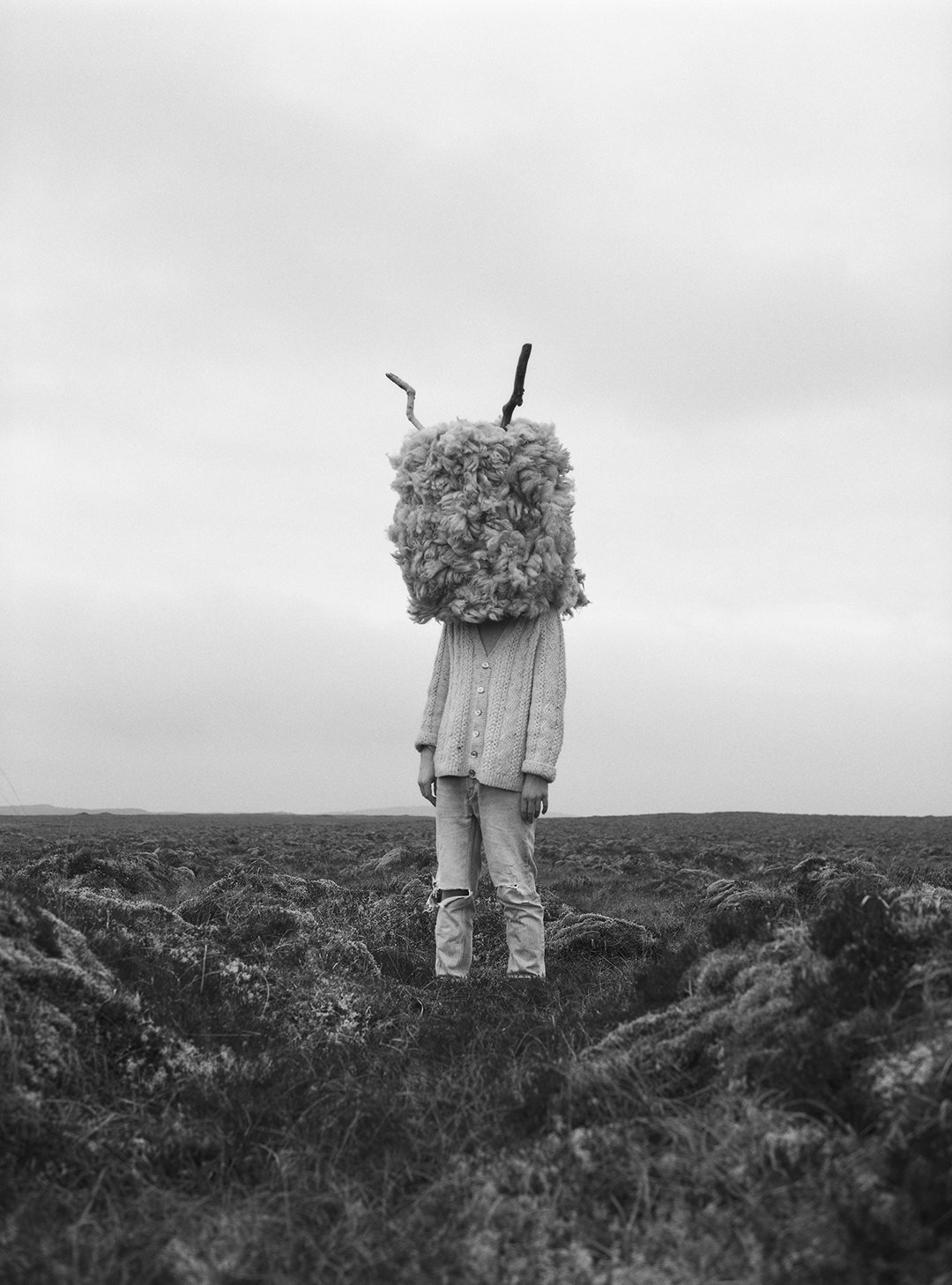
Pentland Guardian
Pentland Guardian
Danielle Macleod
Giclée print on Hahnemühle Fine Art Pearl 285gsm paper. Limited edition run of 30 signed and numbered print
Dimensions: H:29 x W:21(cm)
Framed: H:34 x W:27(cm)
‘Guardians’ is an ongoing series exploring the reconstruction of the artist’s identity after leaving her Christian faith, and about the nature of belief as a space between reality and imagination. These masks, constructed mostly from natural and found materials on the islands, manifest spirituality outside the boundaries of organised religion. They declare a new way of being to the place which formed her. The making of each mask begins as a re-molding of a certain way of being and believing. As soon as they are worn an entity is called into existence that has movement and life. Once photographed, these entities become idols, or gods, or spiritual guides, that continue to lead one towards a better place. Old gods have been replaced by new ones — not ones of authority but of inspiration. Inspiration to be, to play, and to live in a way that feels more right and more true for oneself.
Bail àrd Bhuirgh ('High Borve')
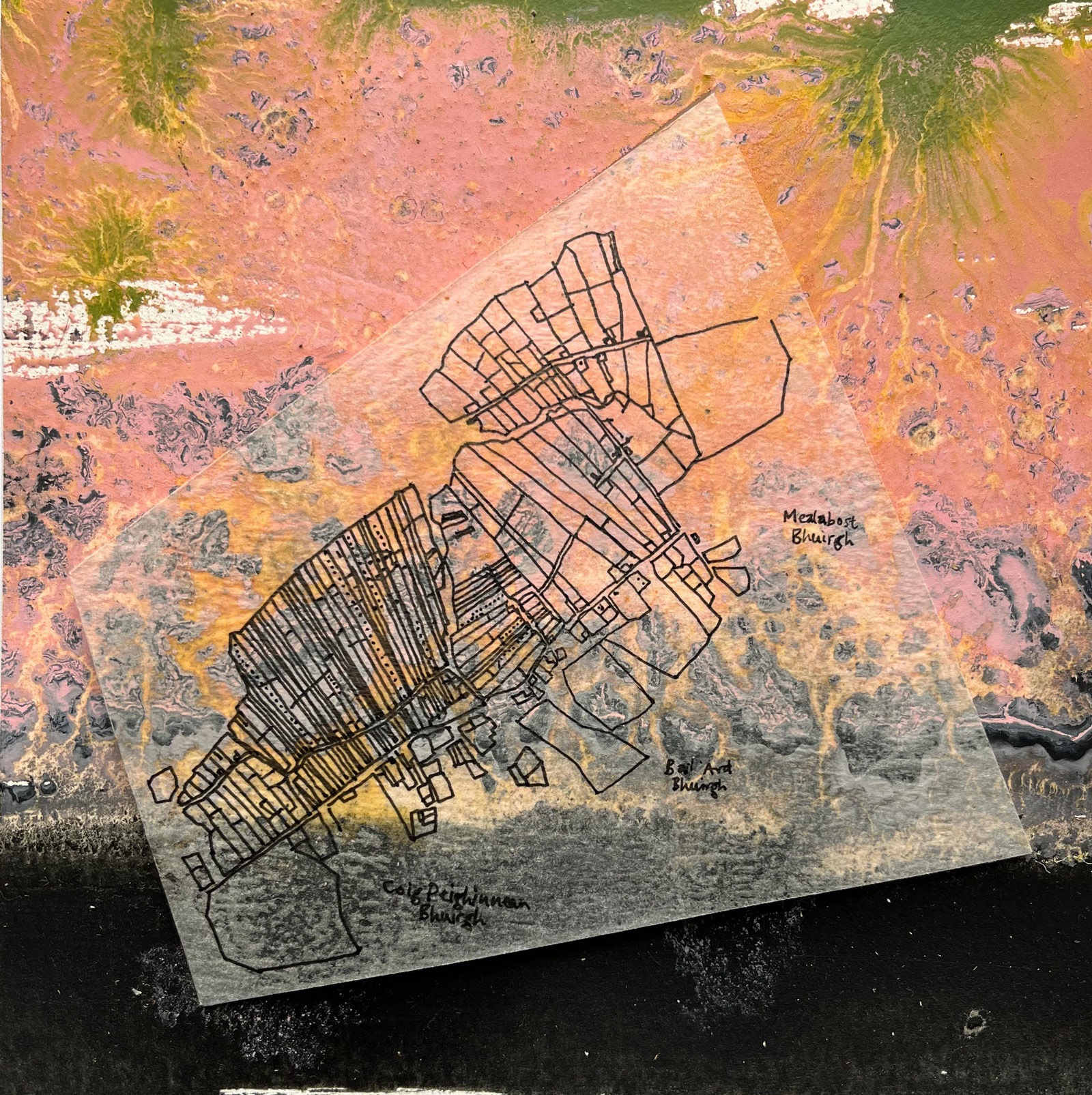
Bail àrd Bhuirgh ('High Borve')
Bail àrd Bhuirgh ('High Borve')
Màiri NicGillÌosa
Ink on tissue, oil paint on paper
Dimensions: H:18 x W:18(cm)
Framed: H:25 x W:25(cm)
The Croftland series explores themes of crofting and visually offers commentary on post-clearance land use and the division of land in crofting townships on the west side of Lewis. This was born from a curiosity about practices in transhumance, the movement of animals to summer grazing by indigenous peoples and a curiosity as to why these stopped and the sheiling culture went out of use, possibly due to the advent of fencing.
Several of the Croftland series artworks will be exhibited as part of Buaile, an exhibition at Inverness Museum and Art Gallery (IMAG), which was part of a collaborative visual arts programme delivered across three city centre venues with Wasps Inverness Creative Academy and Eden Court. Together they will present a wide range of works from artists who are inspired by the Gaelic language, the culture and connection to the land.
Aiteal ('Transient view')
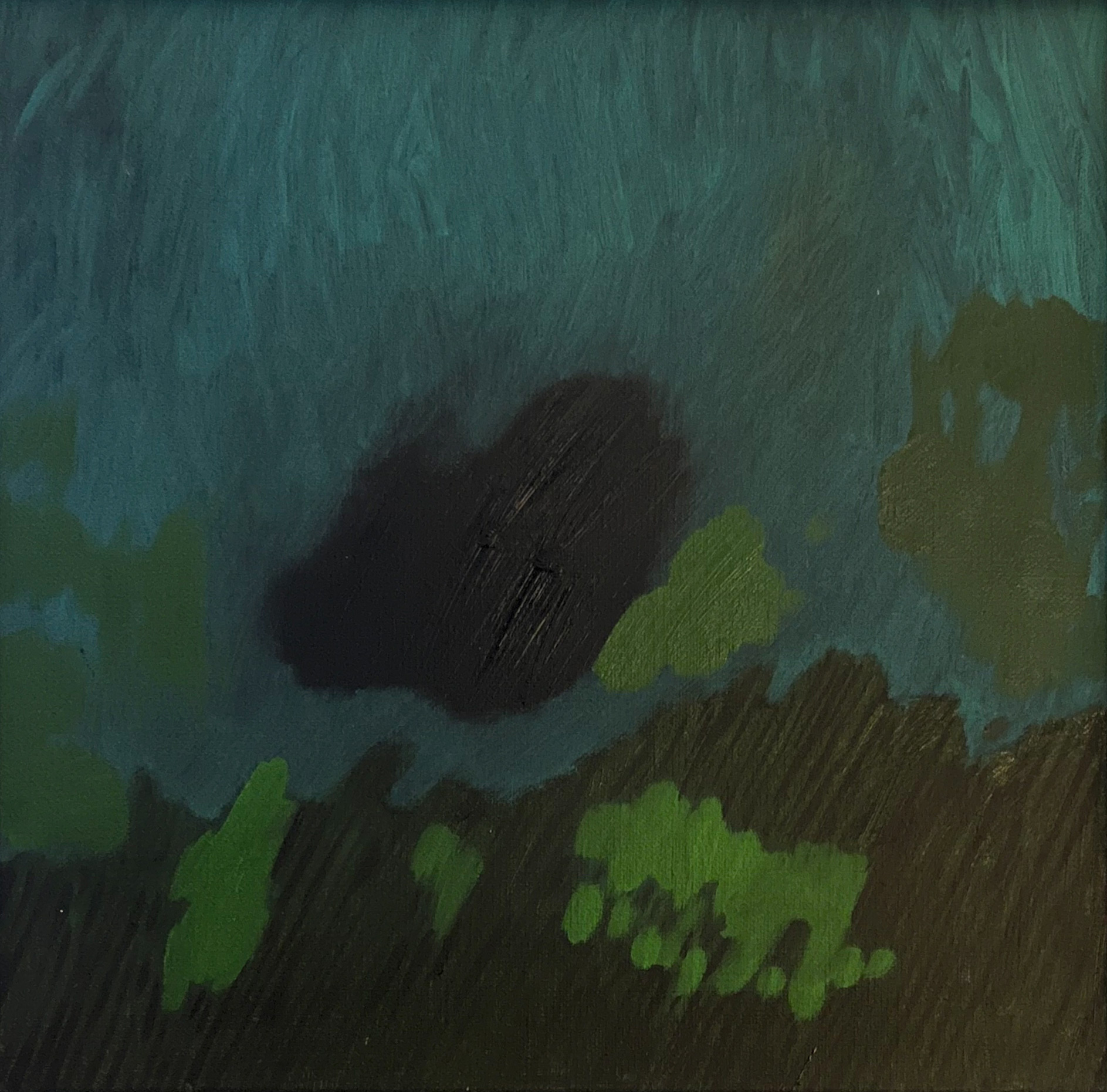
Aiteal ('Transient view')
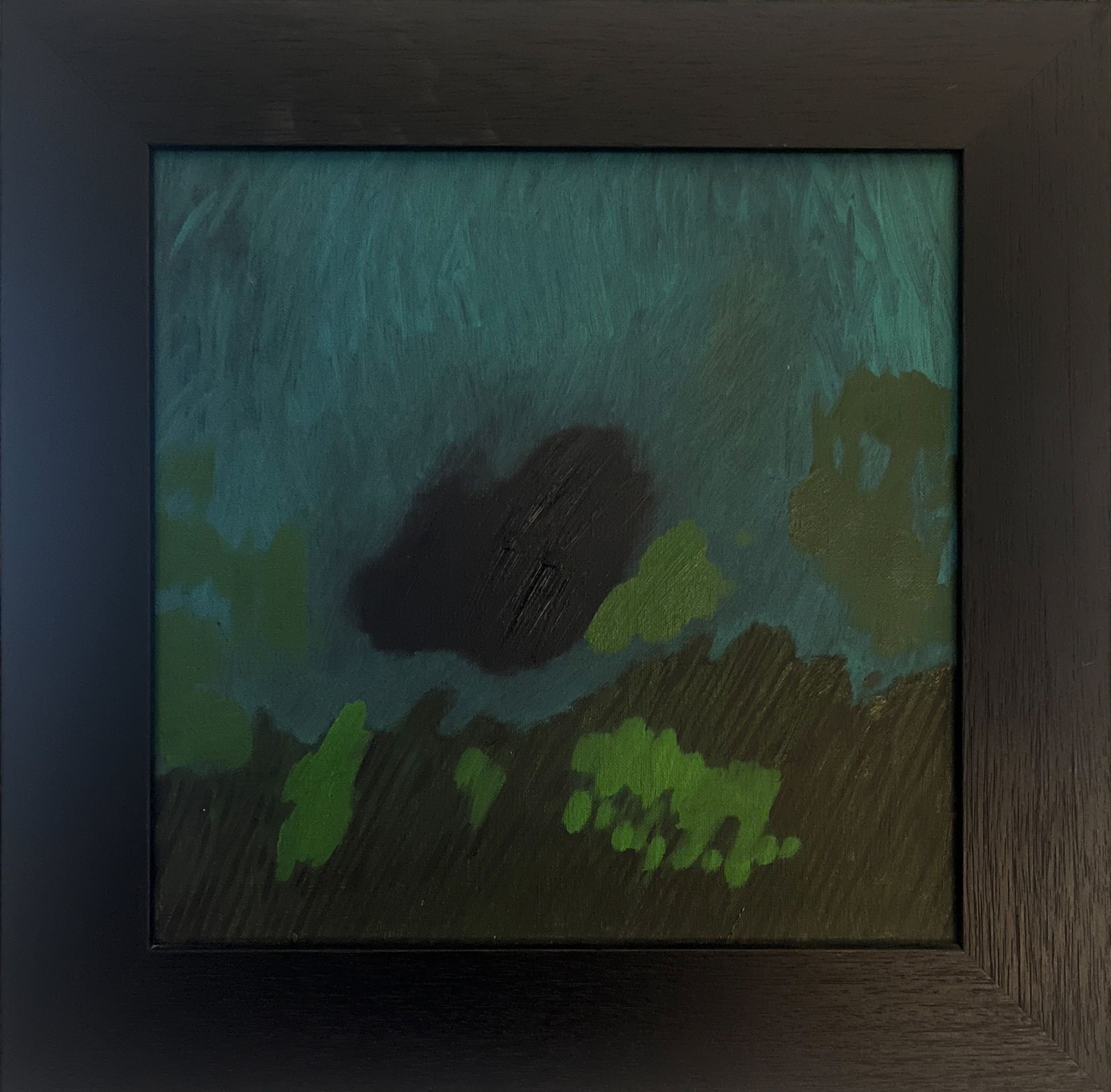
Aiteal ('Transient view') in frame
Aiteal ('Transient view')
Sandra Kennedy
Oil on linen.
Dimensions: H:29 x W:29(cm)
Framed: H:40 x W:40(cm)
Blending memory, landscape and contemplation, Sandras Imagination plays alongside the natural environment around her village - Marvig, South Lochs, Lewis. The scree slopes are backdrops for all kinds of narratives. With the changing weather and light, moods follow. The weather; the colours and the seasons tell their own stories.
Tir-chumadh ('Land-relief')
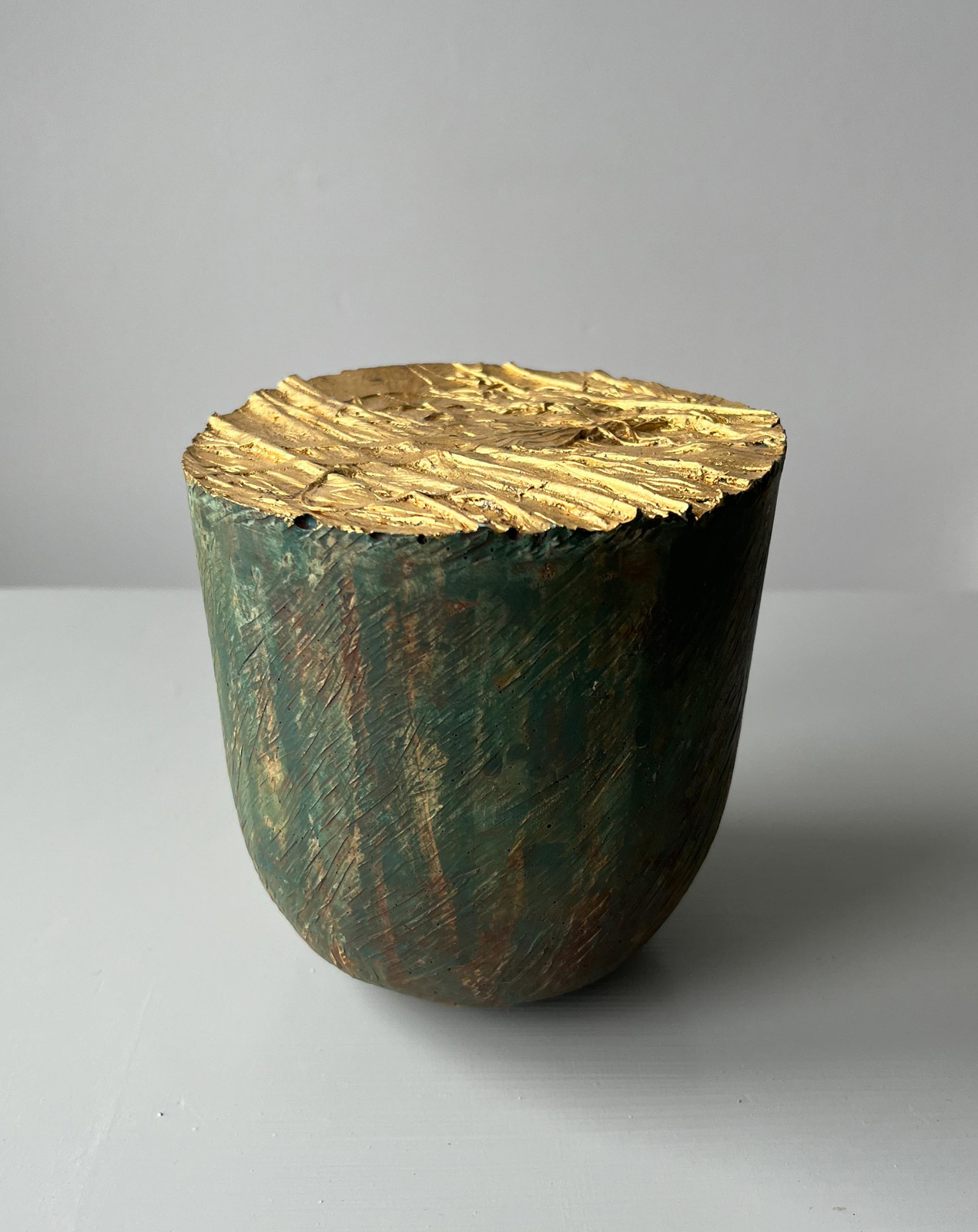
Tir-chumadh ('Land-relief')
Tir-chumadh ('Land-relief')
Màiri NicGillÌosa
Cast plaster, peat ash, soot, oils and gold.
Dimensions: H:12 x W:12 x D:12(cm)
This sculpture is cast directly from grasses from the Isle of Lewis, Outer Hebrides. It was formed using traditional casting methods with plaster using source water from the landscape. Its shape was inspired by the landscape, reflecting the weather-carved, tide-borne objects that speak of this place. A last layer of reflection radiates through colour - pigments made and applied from fires where great stories were told.
In the Quiet
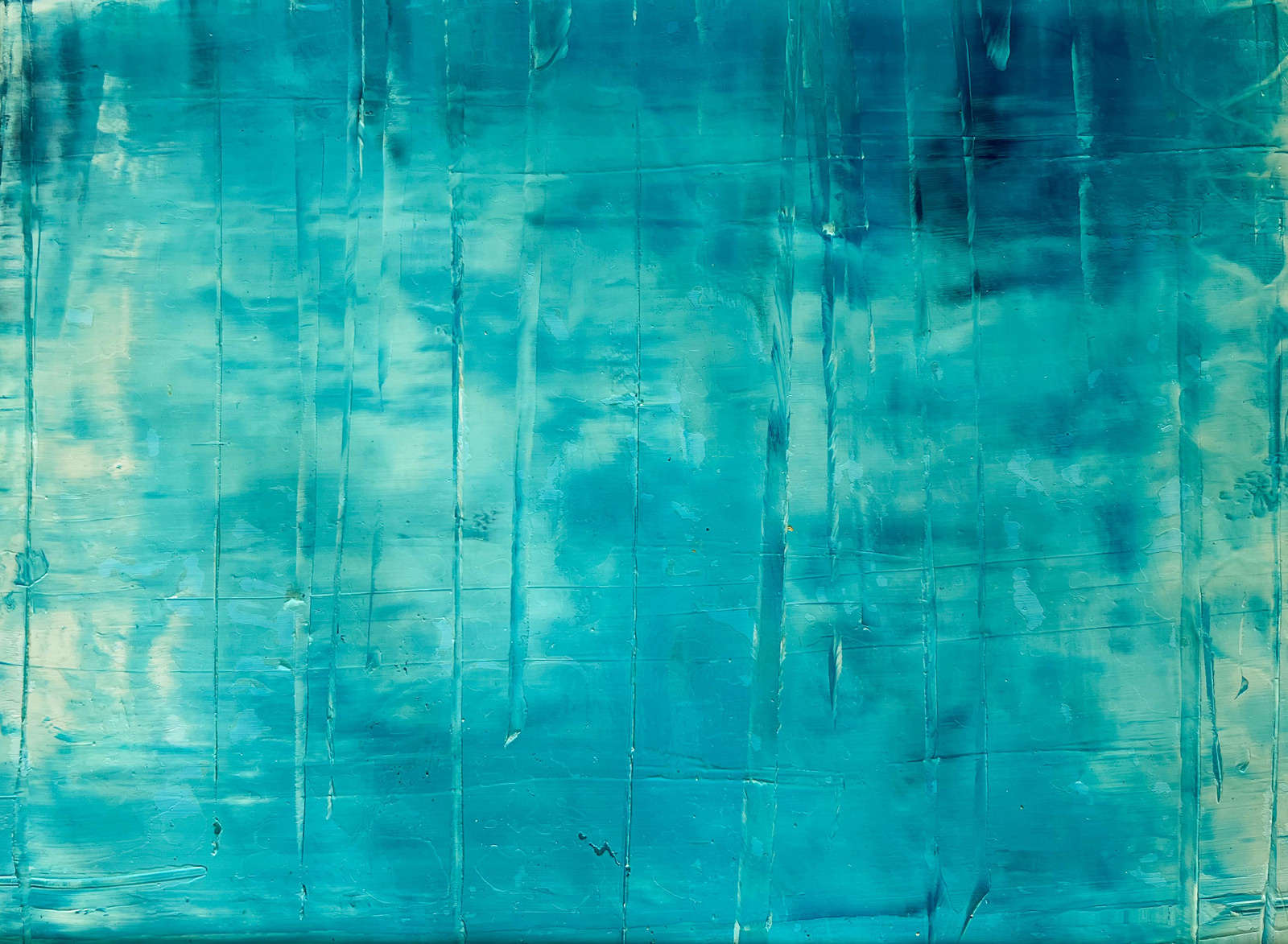
In the Quiet
In the Quiet
Andy Metcalf
Oil on Paper
Dimensions: H:21 x W:27(cm)
Framed: H:35 x W:41(cm)
Part of the 'Blue Jura' series
A Road Less Travelled
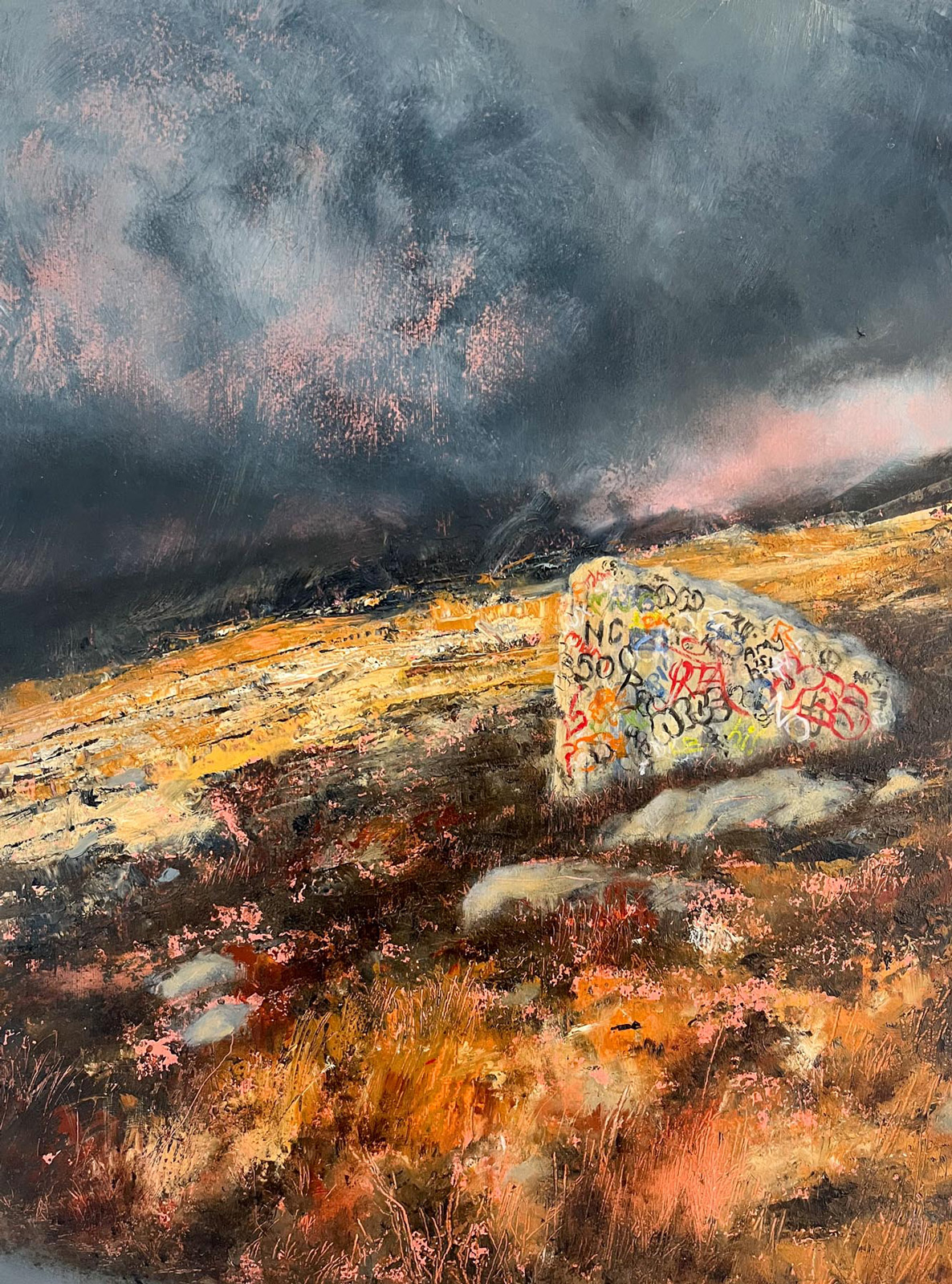
A Road Less Travelled
A Road Less Travelled
Sarah Bold
Oil on Board
Dimensions: H:30 x W:23 x D:2(cm)
Winner of the 2022 Hulabhaig Uig Open Curator’s Purchase Award.
'A Road Less Travelled' stands out as a strong illustration of islandness or remoteness which has clearly been influenced by human activity which is not always positive.
Geo
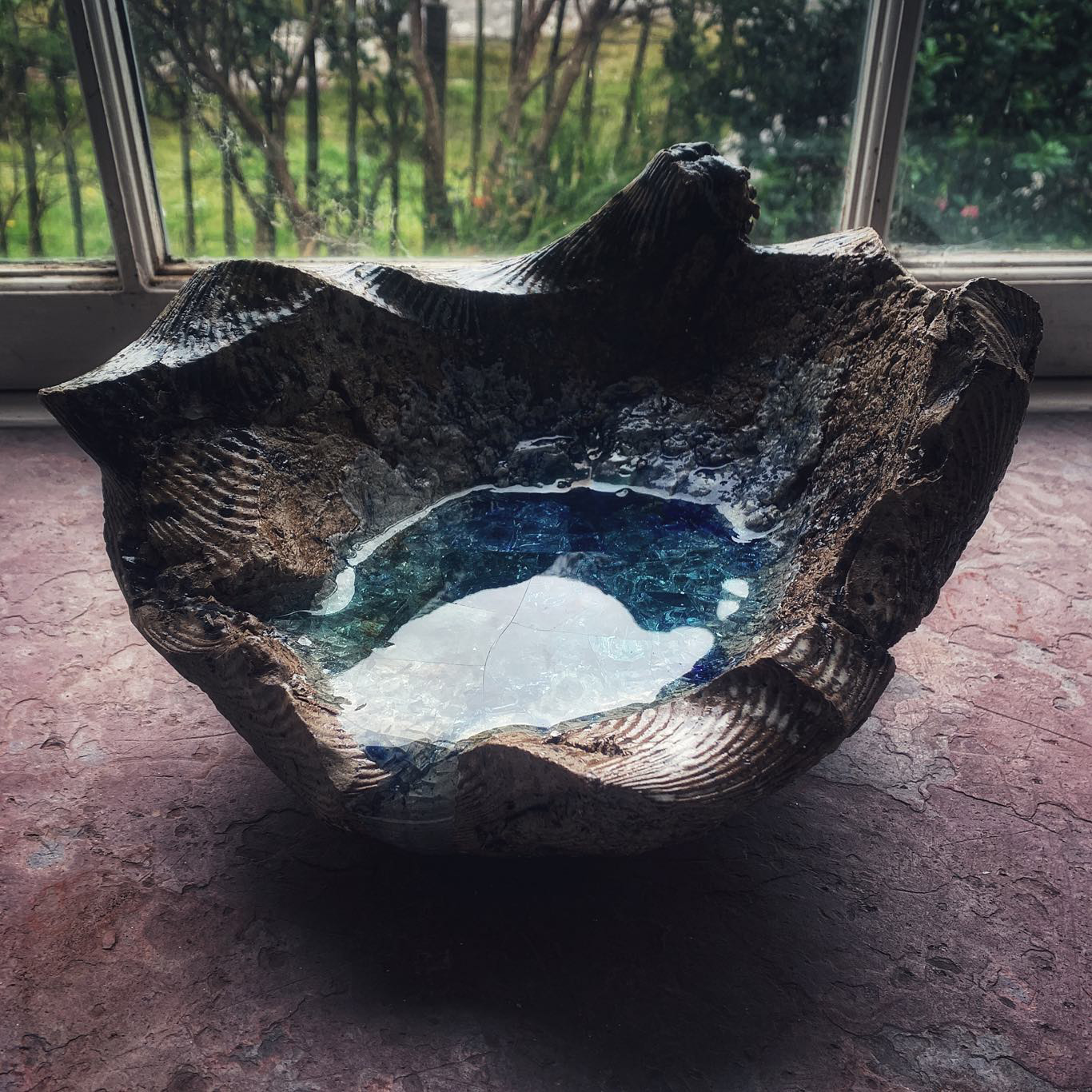
Geo
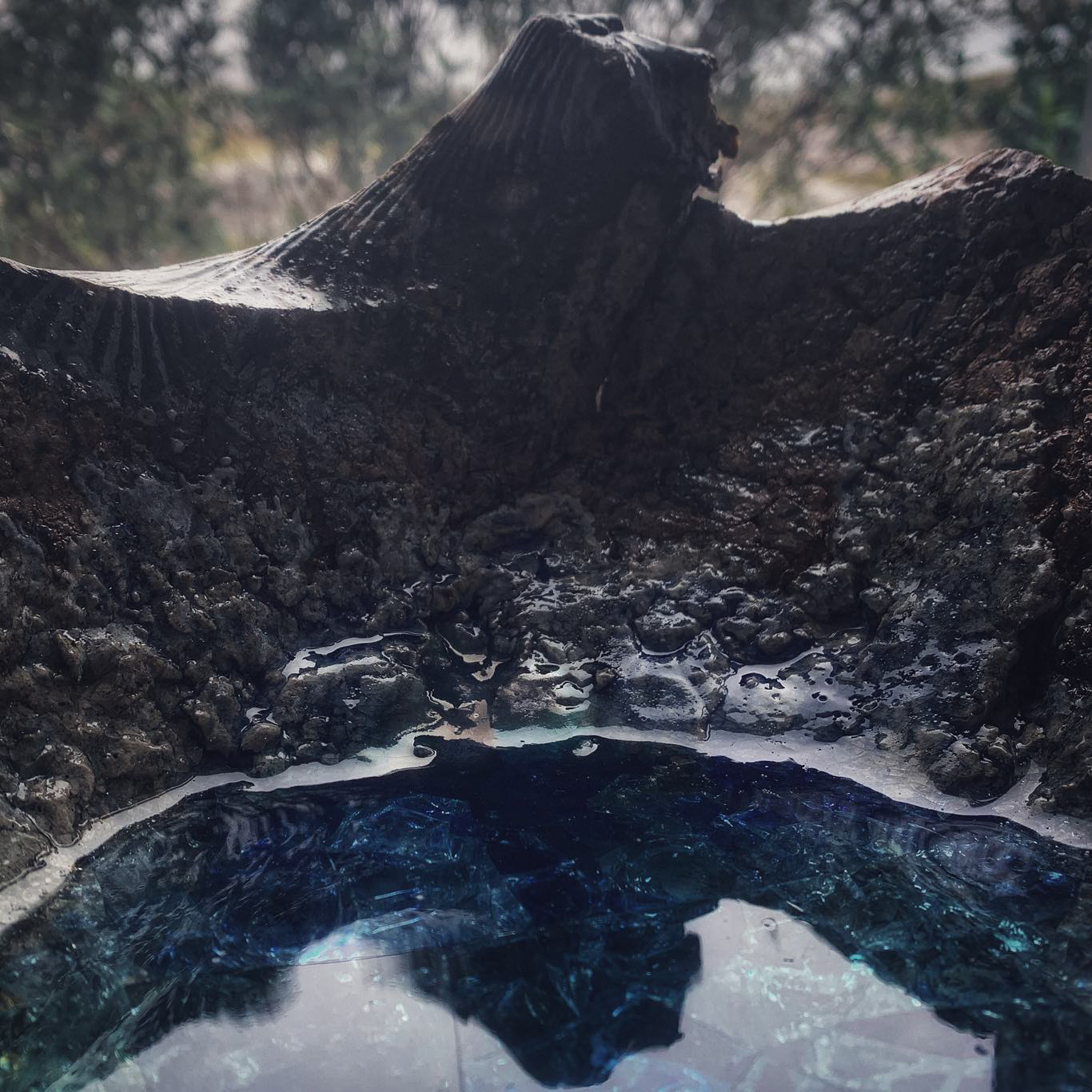
Geo (detail)
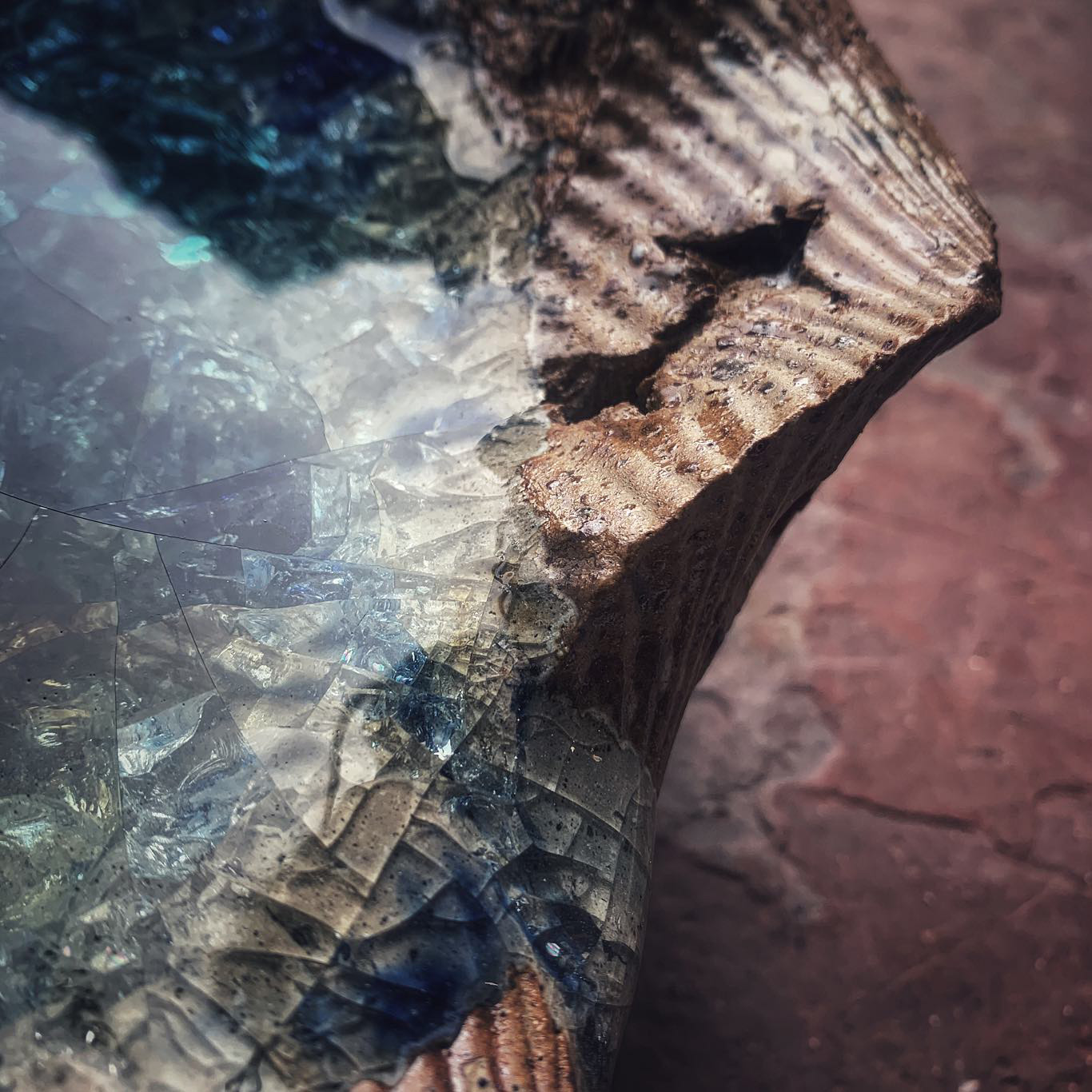
Geo (detail)
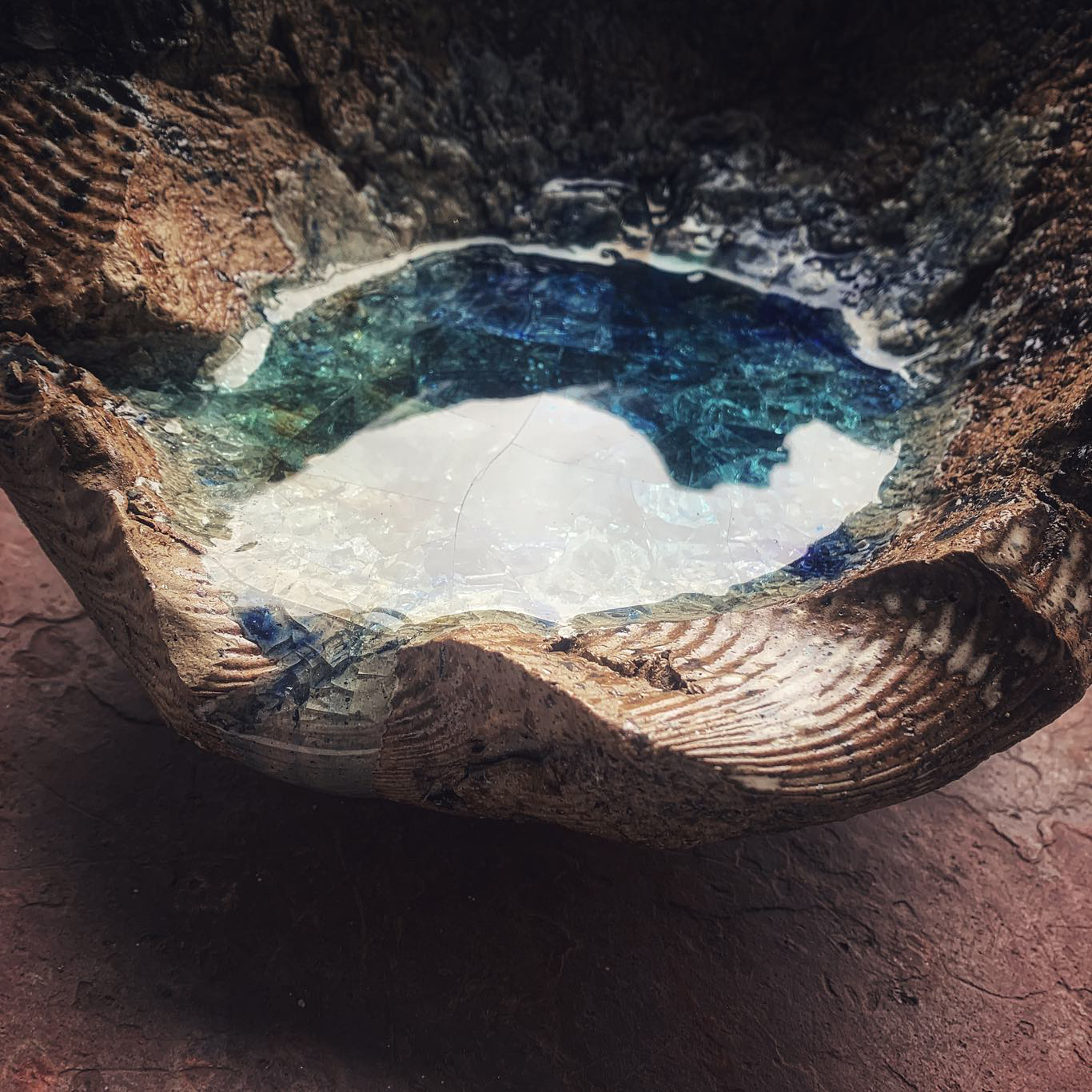
Geo (detail)
Geo
Nickolai Globe
Ceramic and Glass
Dimensions: H:16 x W:29 x D:27(cm)
A small piece of Harris
Clover
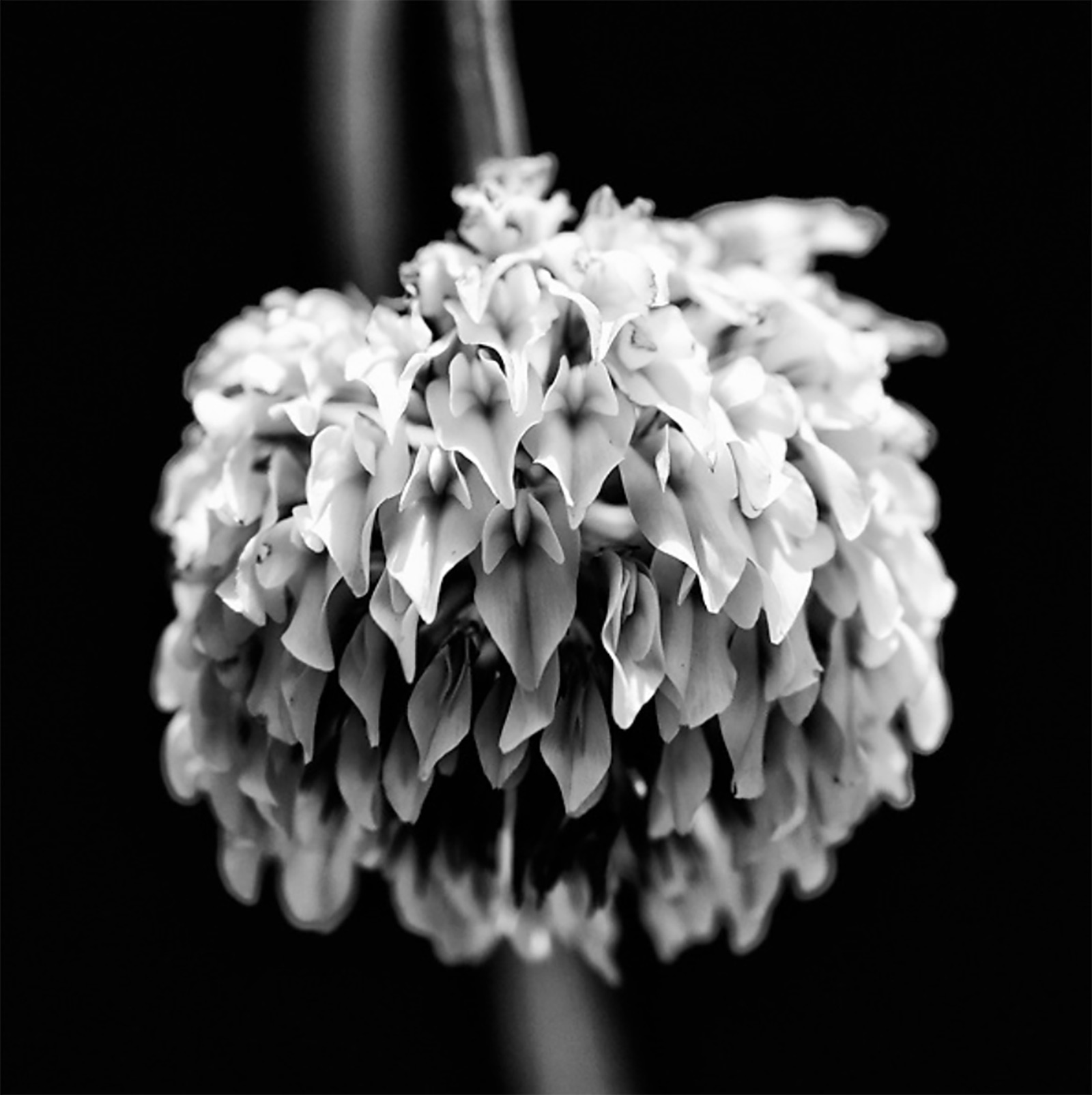
Clover
Clover
Beka Globe
Photograph
Dimensions: H:91 x W:91(cm)
Framed: H:94 x W:97(cm)
Part of the Flowers series